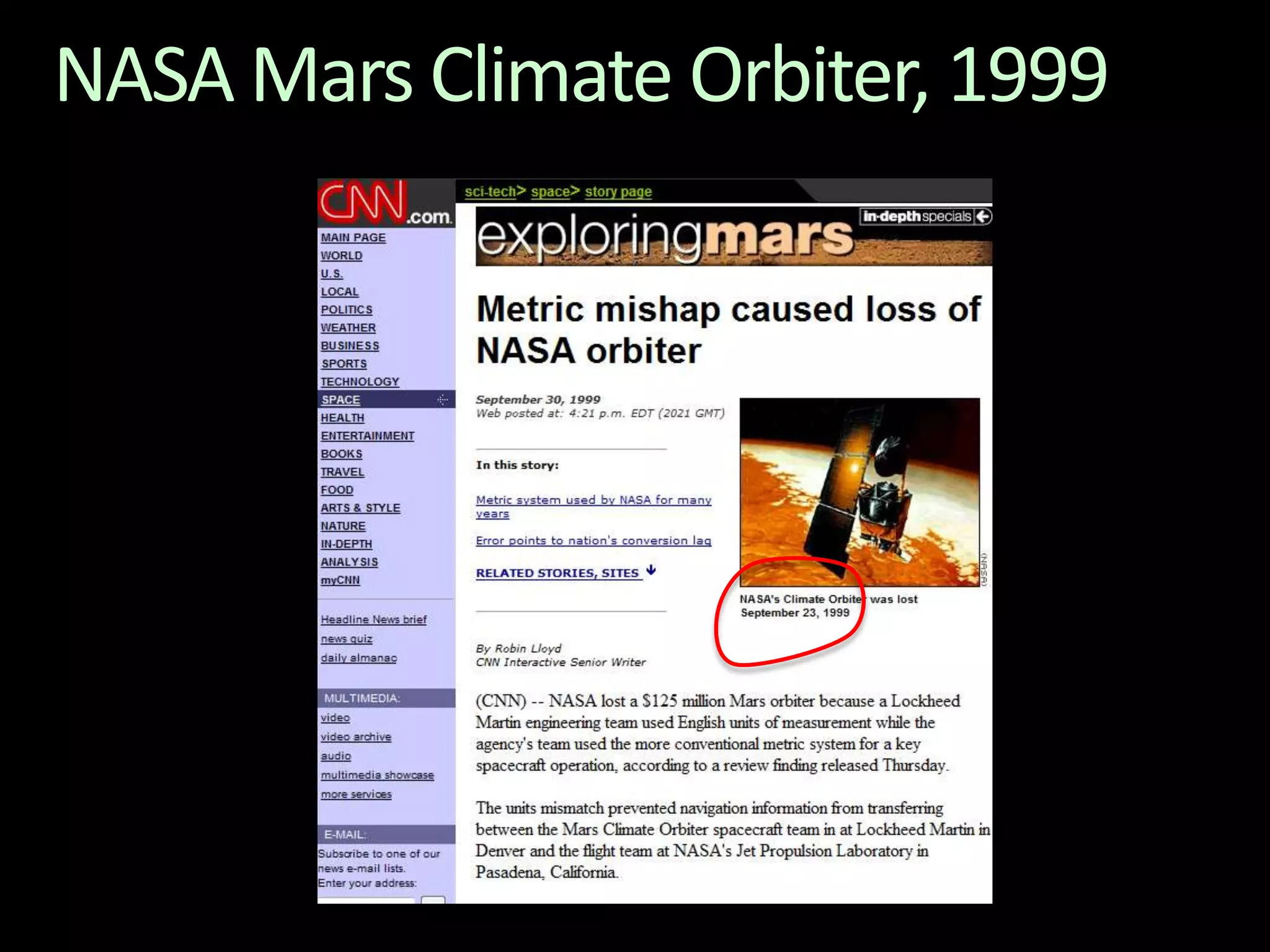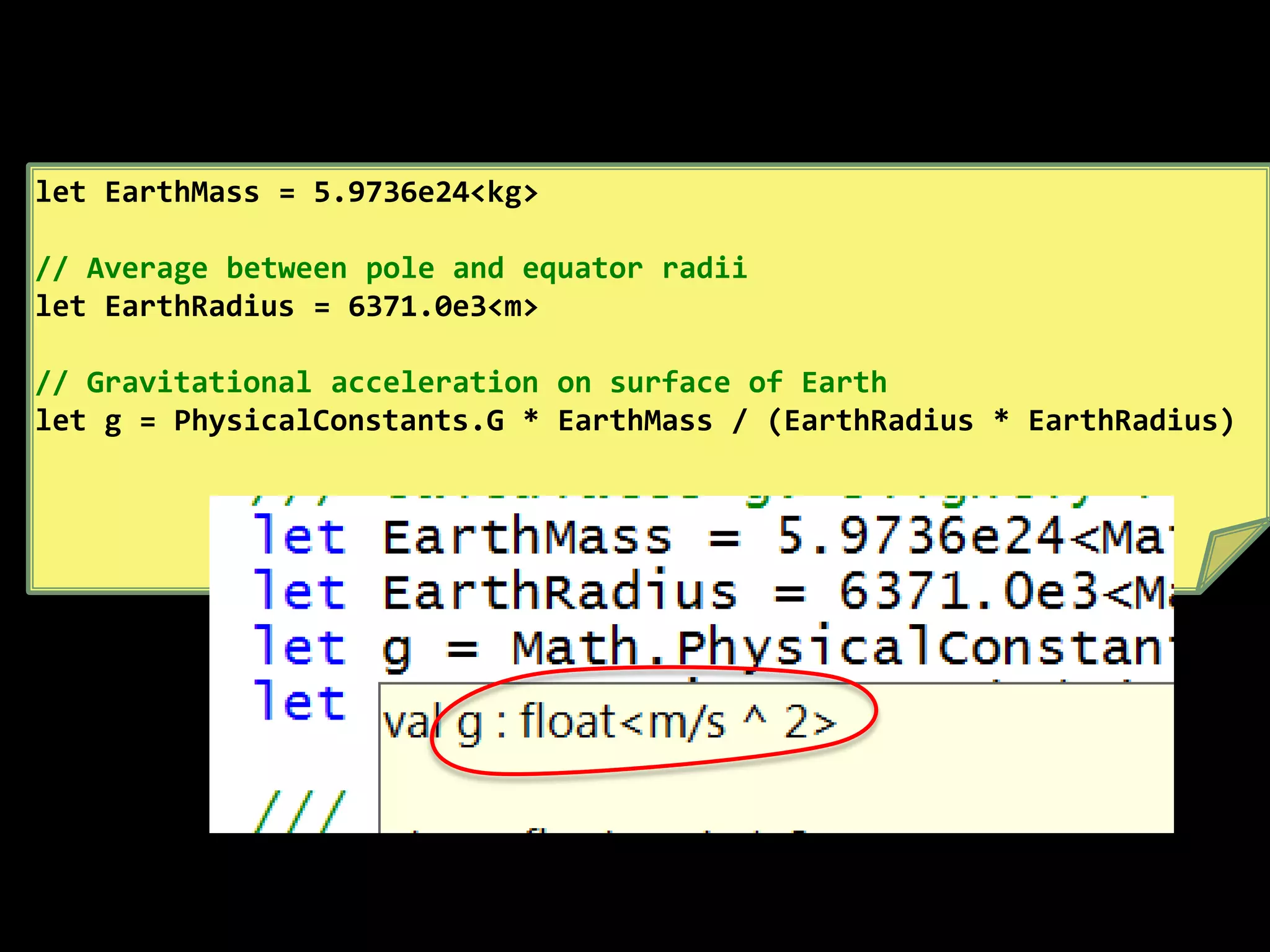This document provides an overview of the F# programming language and discusses some of its key features and benefits. It includes examples of using F# for financial modeling, event processing, and 3D simulation. F# allows for both functional and object-oriented programming, and supports features like units of measure, asynchronous and parallel programming. Case studies demonstrate how F# was used successfully for power grid scheduling and online advertising. The document concludes with a demonstration of using F# for a 3D simulation.
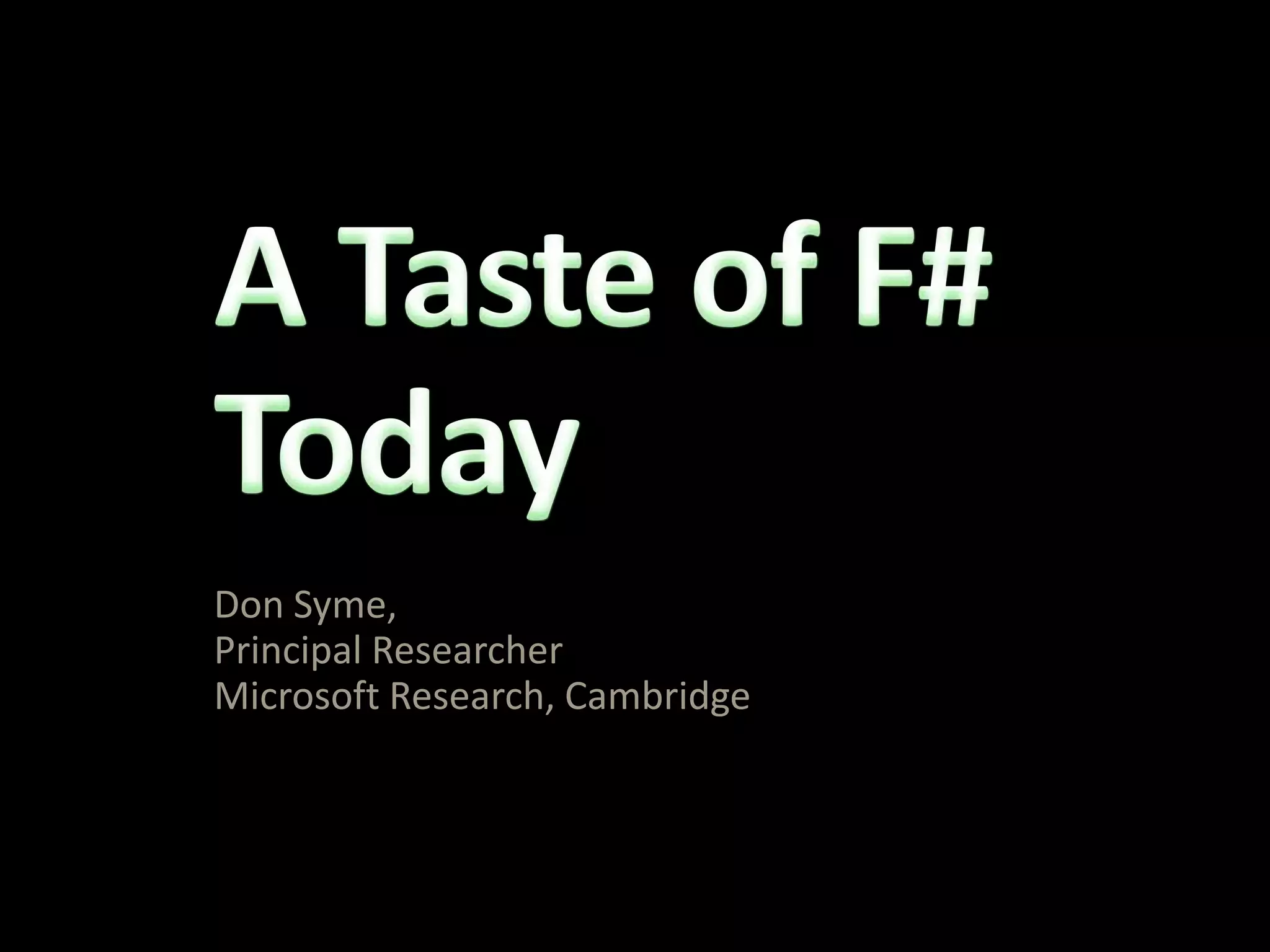
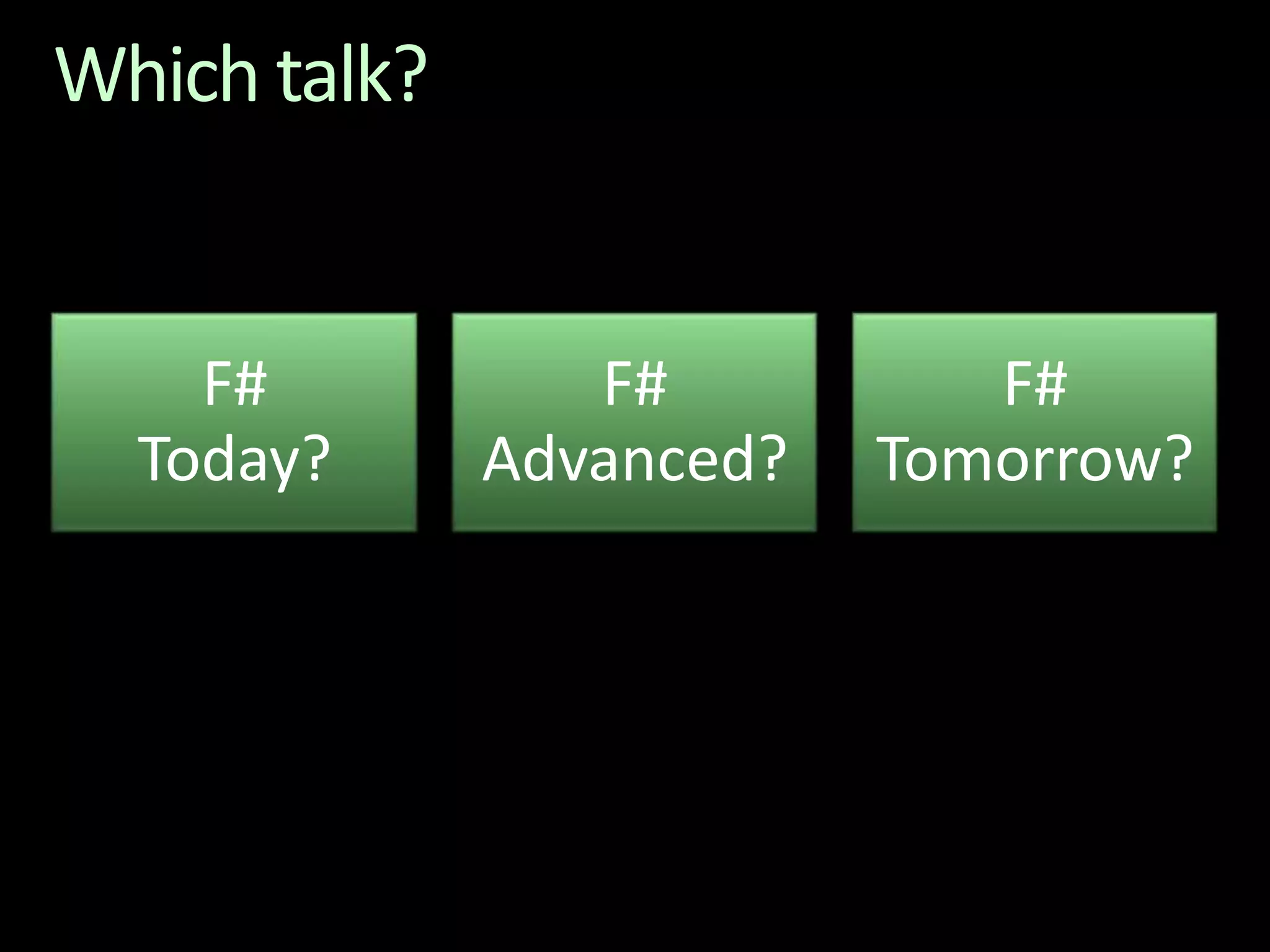
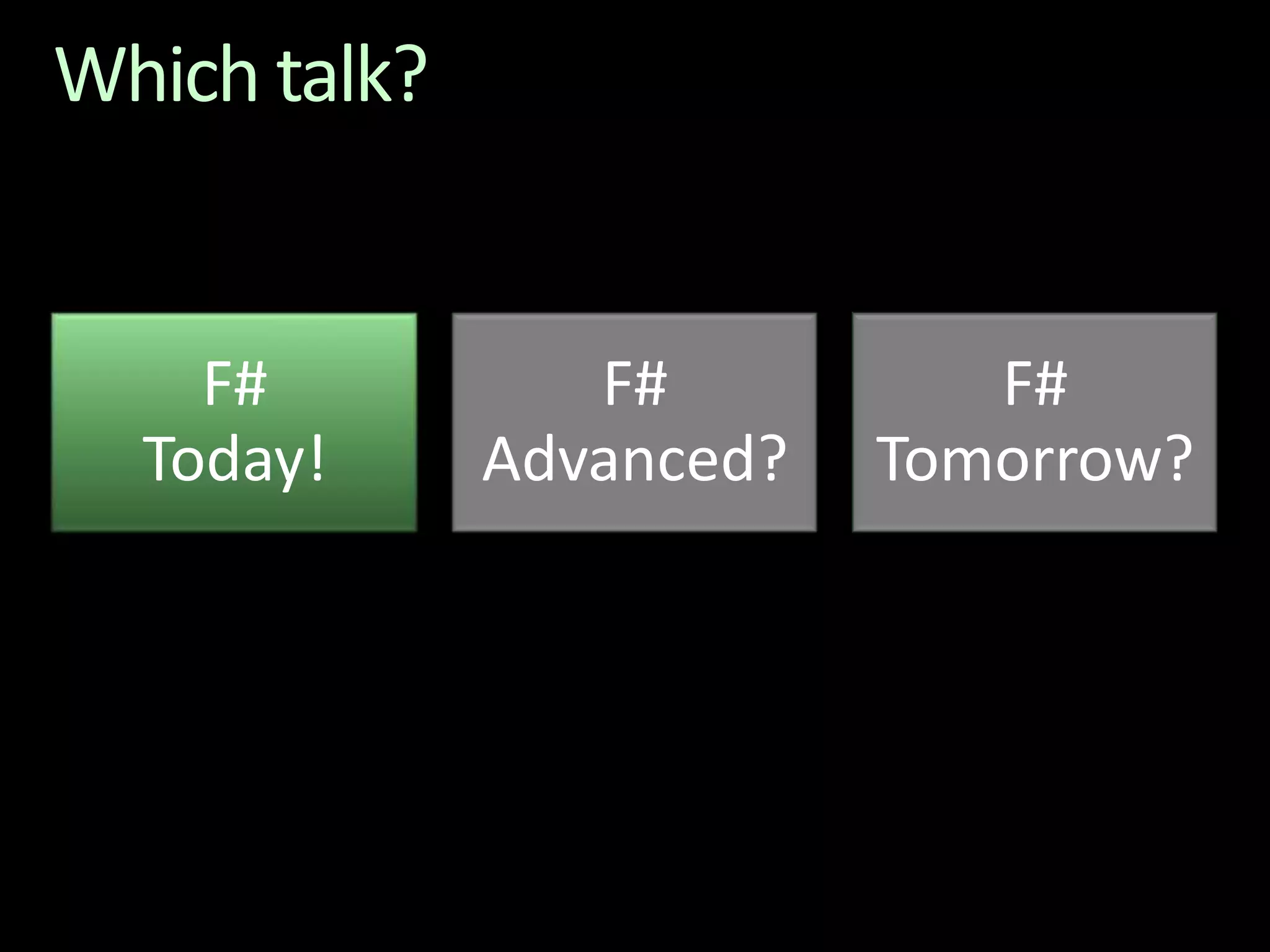

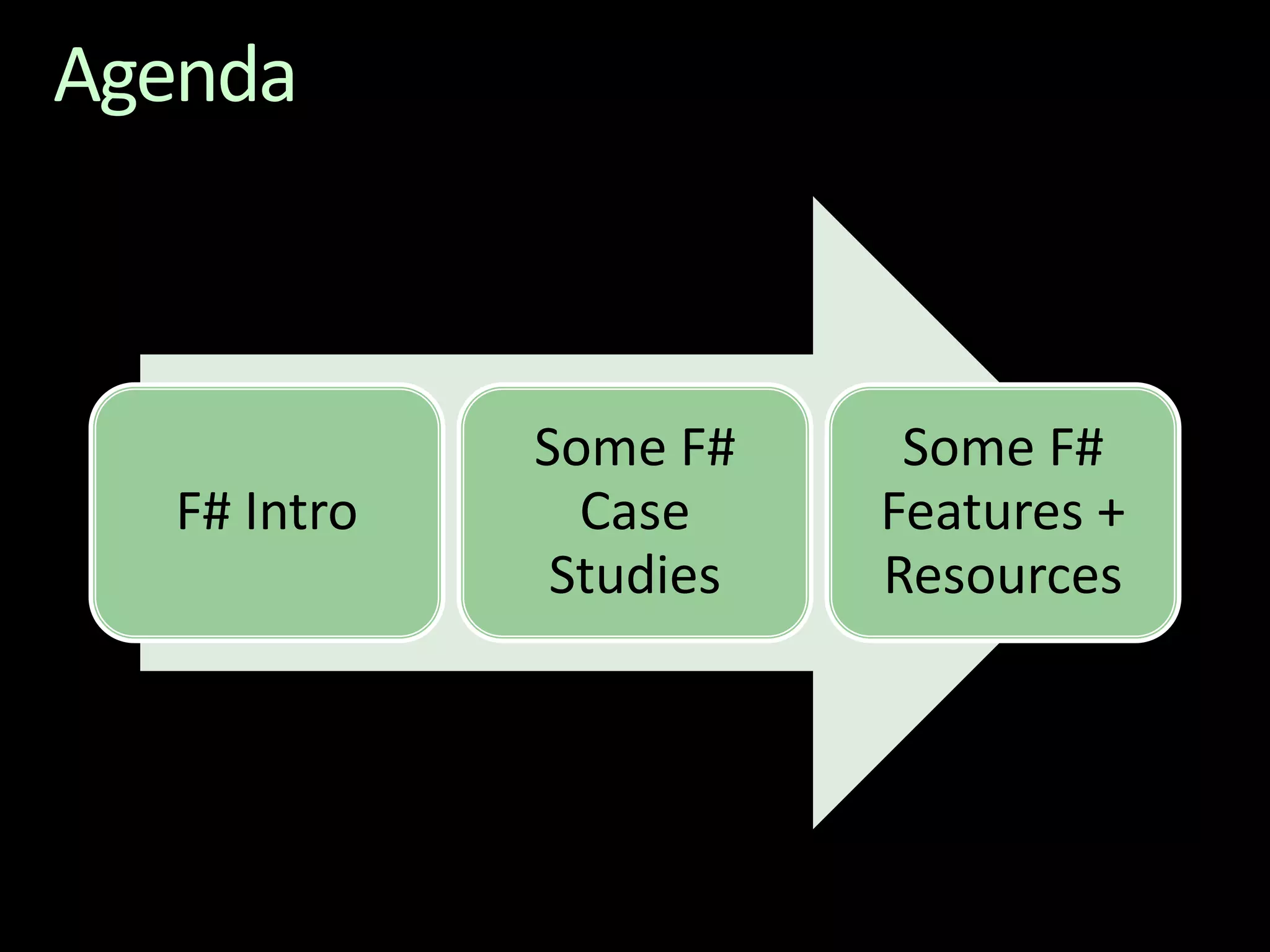
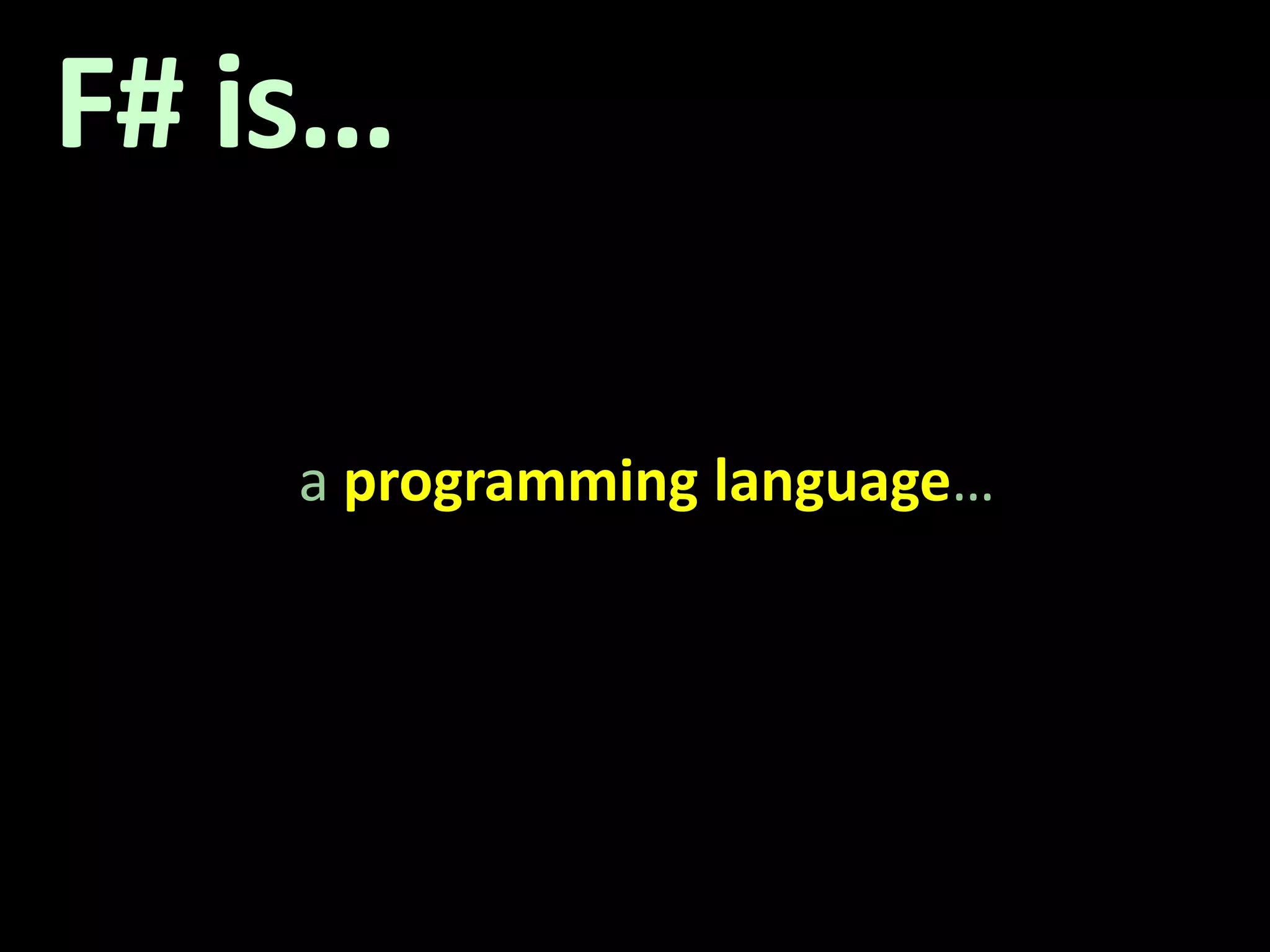
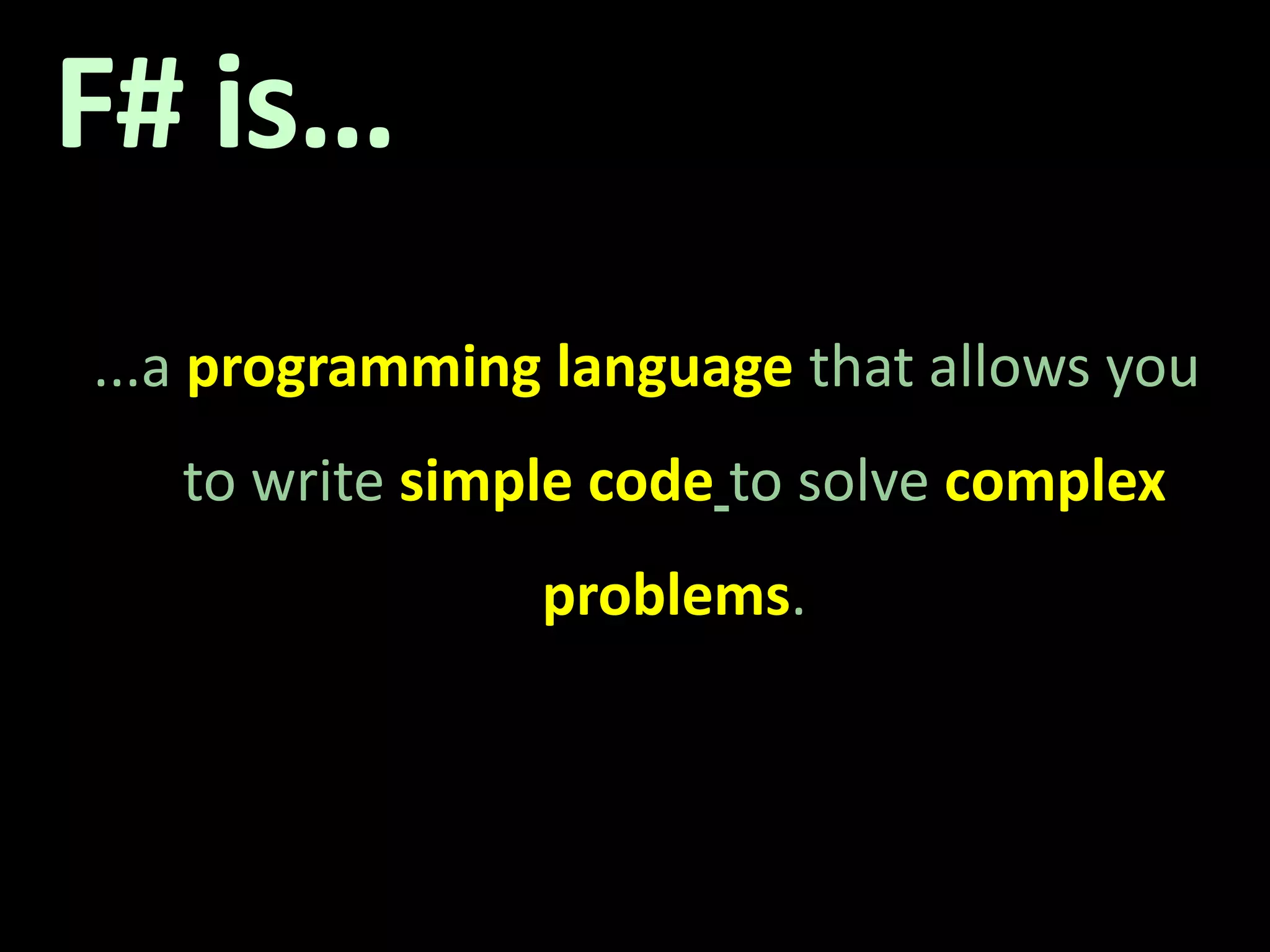
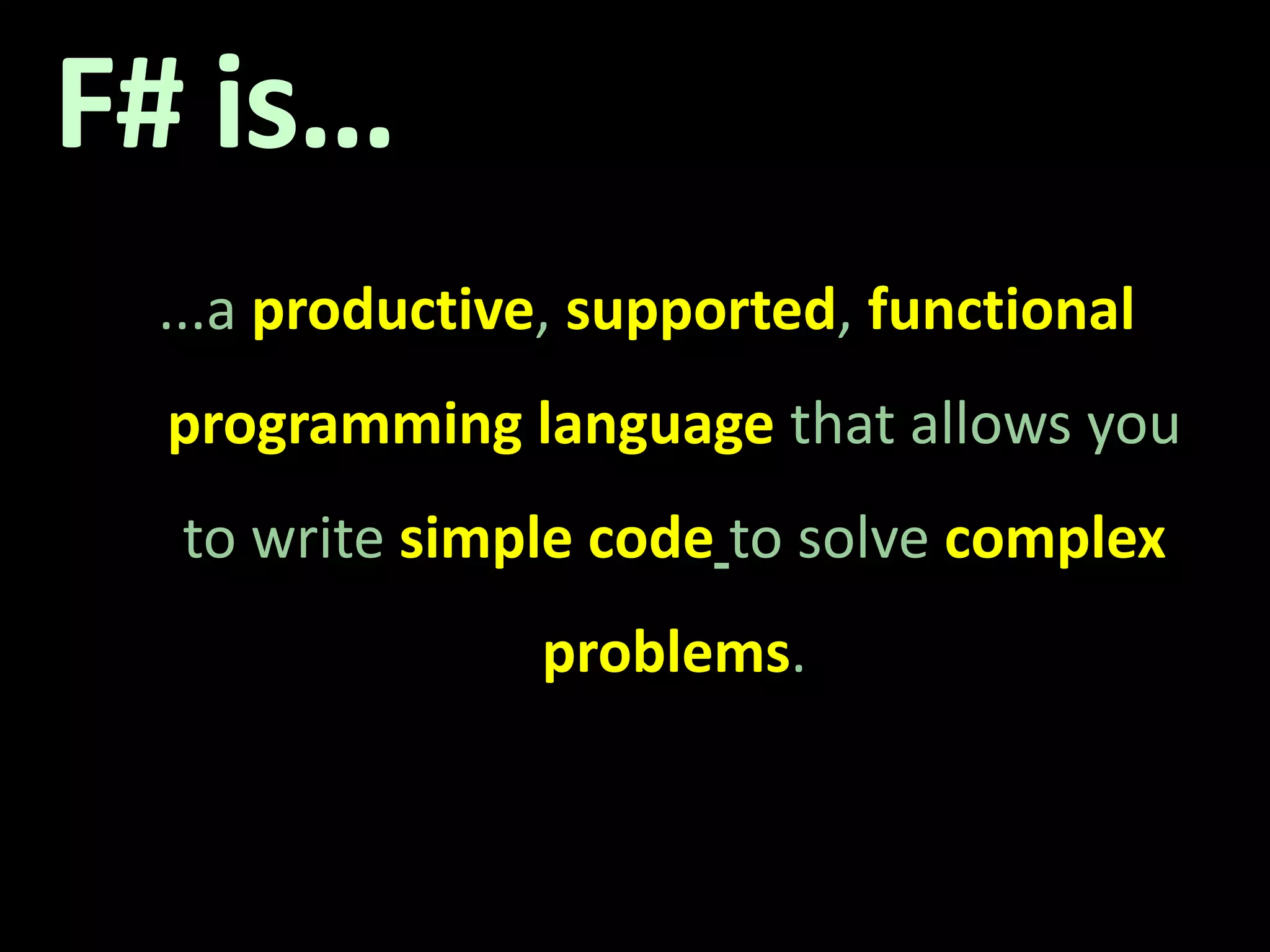


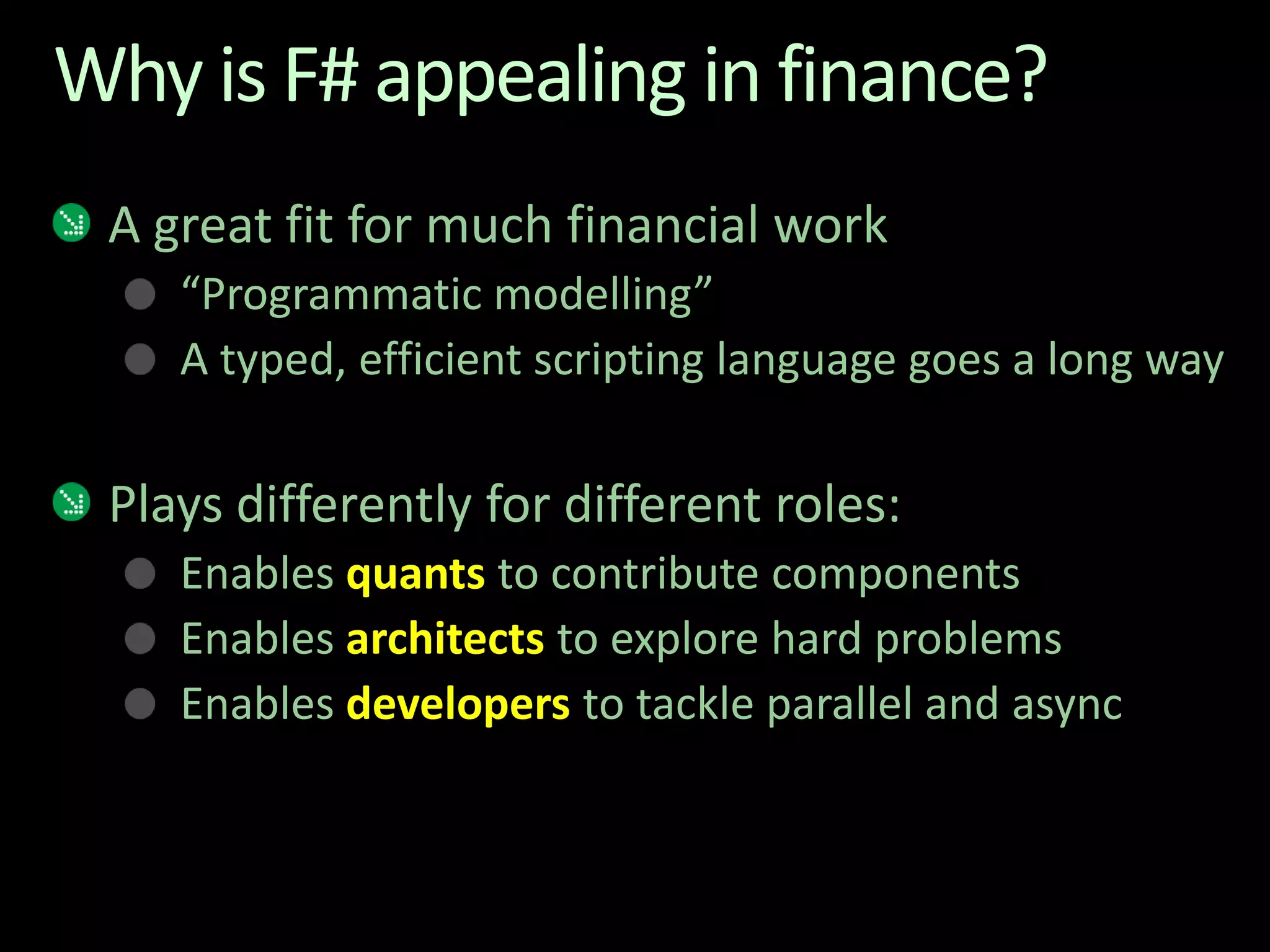
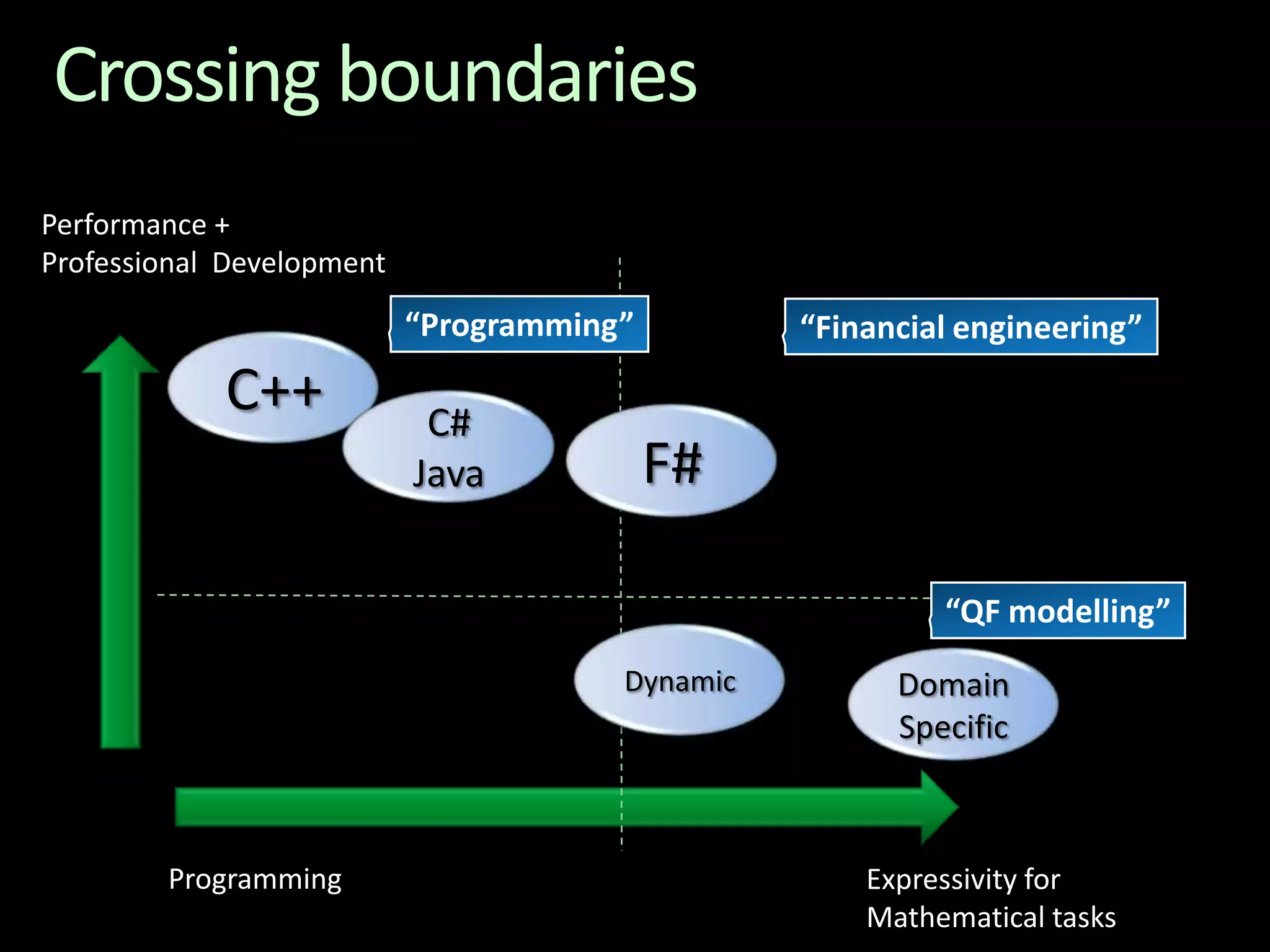
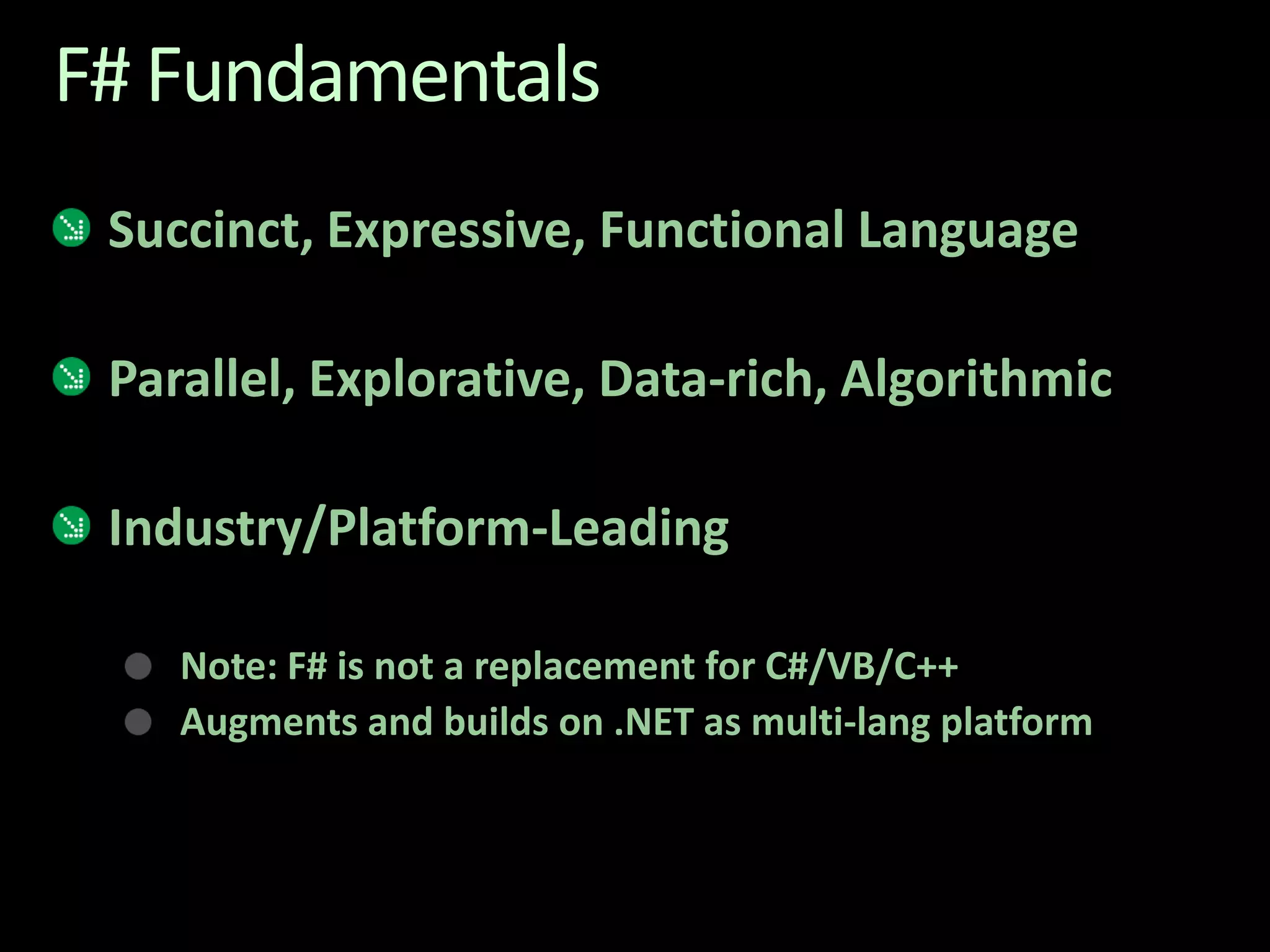

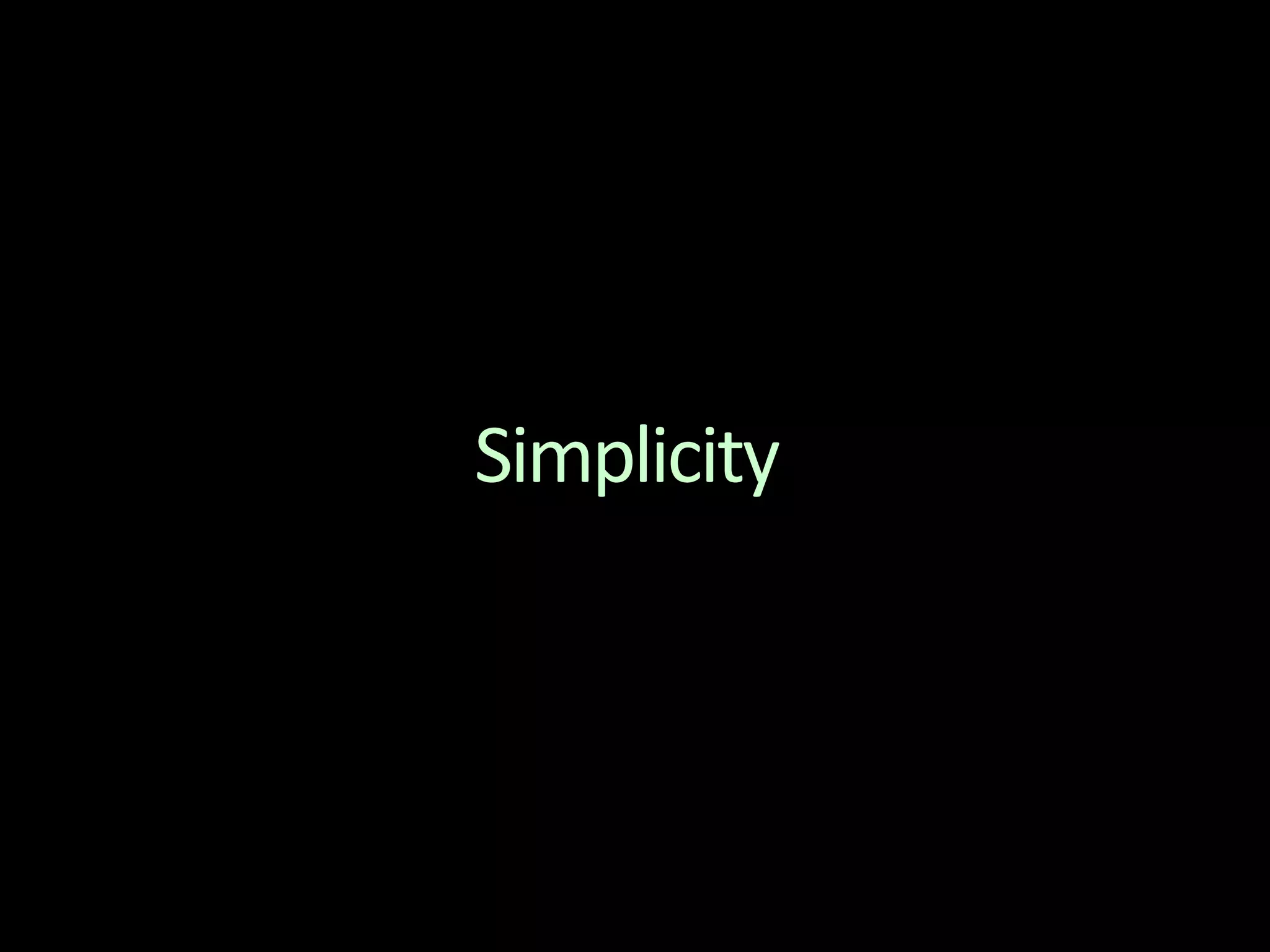

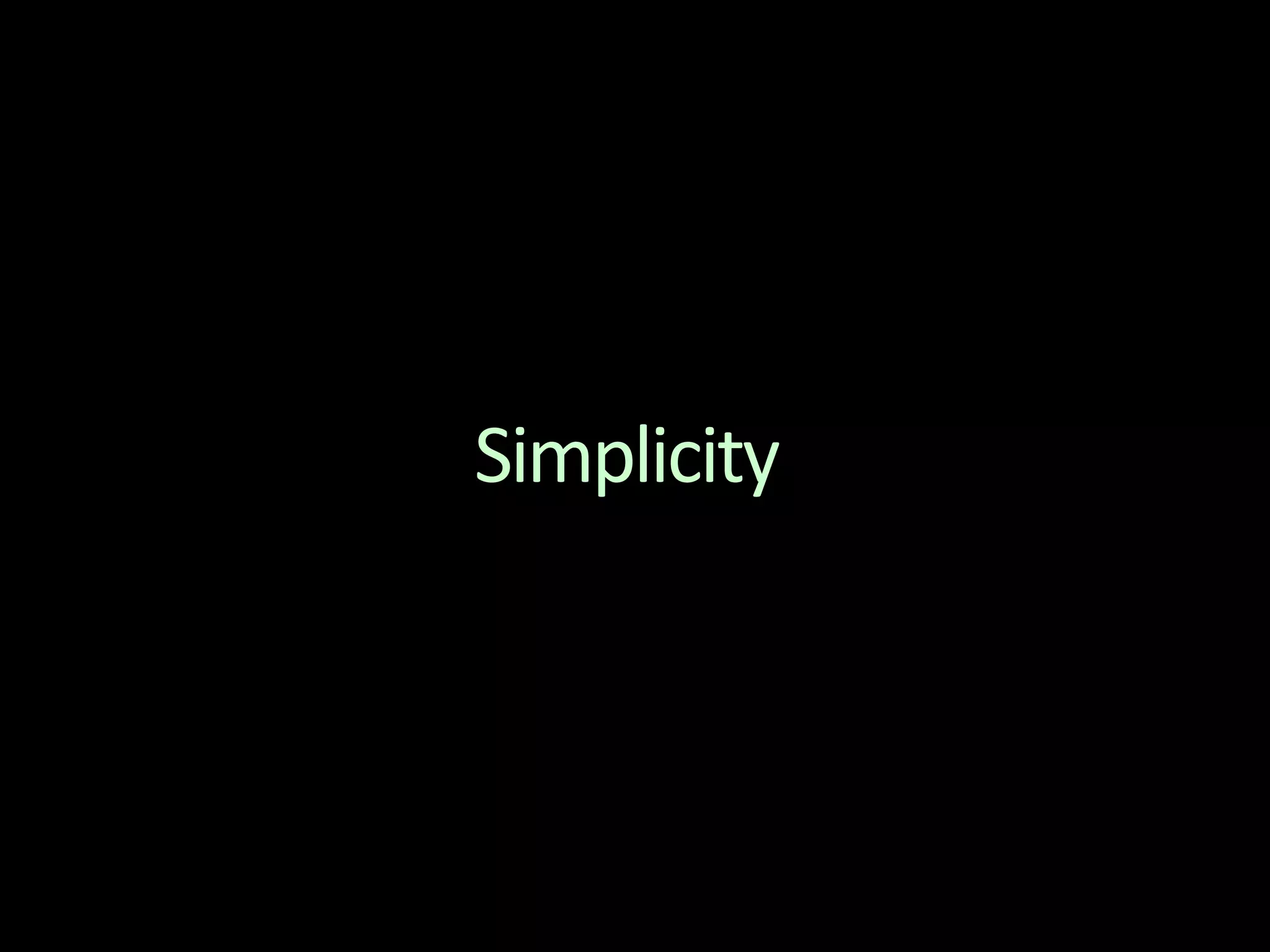
![using System;namespace ConsoleApplication1{class Program{static string greeting= "hello"static void Main(string[] args){Console.WriteLine(greeting); }}}open Systemlet greeting = "hello"Console.WriteLine(greeting)Simplicity: ScriptingC#F#](https://image.slidesharecdn.com/fsharp-meetup-2010-redist-100909174431-phpapp01/75/London-F-Sharp-User-Group-Don-Syme-on-F-09-09-2010-18-2048.jpg)
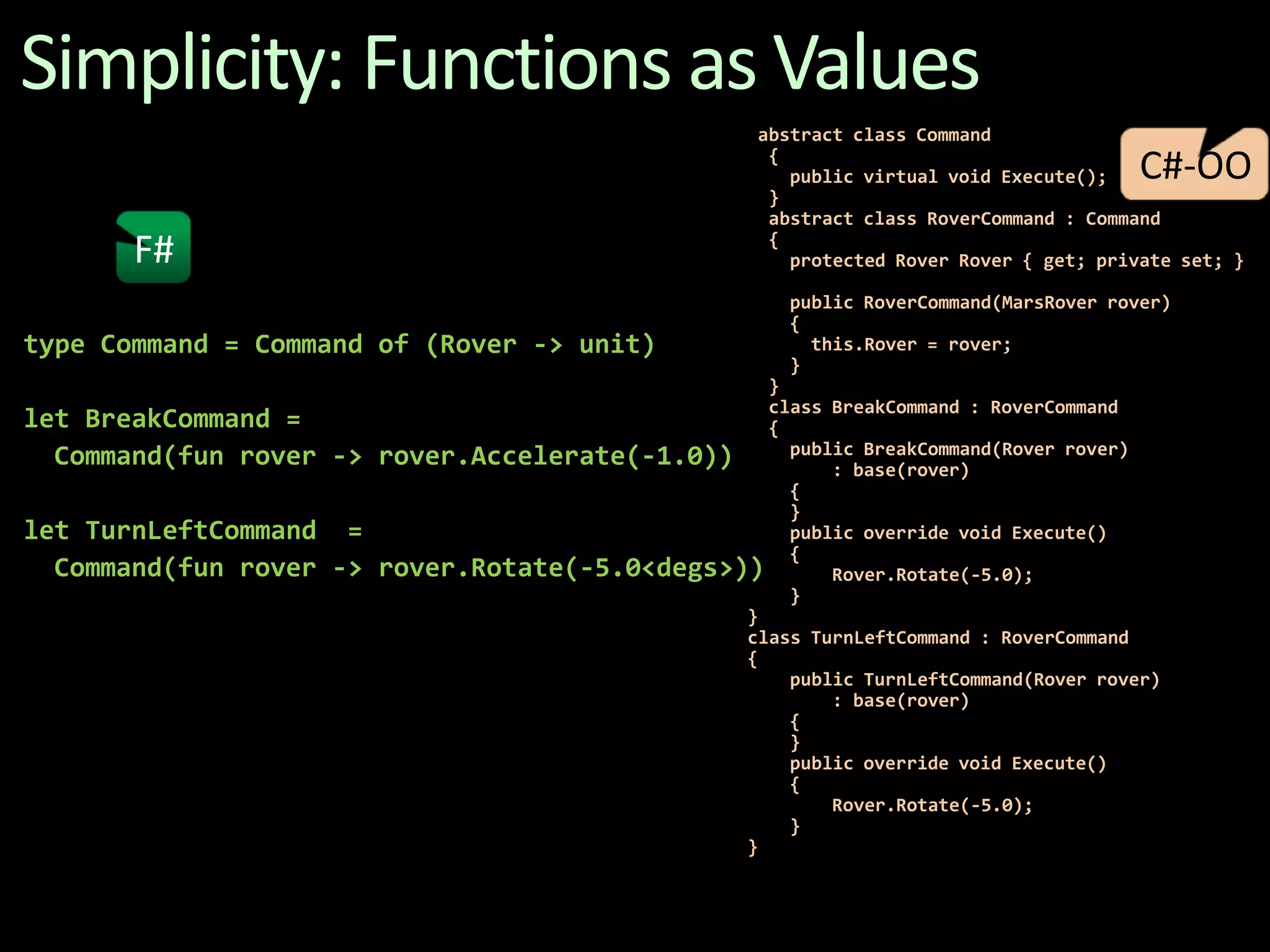
![Simplicity: Functional DataC#let swap (x, y) = (y, x)let rotations (x, y, z) = [ (x, y, z); (z, x, y); (y, z, x) ]let reduce f (x, y, z) = f x + f y + f zTuple<U,T> Swap<T,U>(Tuple<T,U> t){ return new Tuple<U,T>(t.Item2, t.Item1)}ReadOnlyCollection<Tuple<T,T,T>> Rotations<T>(Tuple<T,T,T> t) { new ReadOnlyCollection<int> (new Tuple<T,T,T>[] { new Tuple<T,T,T>(t.Item1,t.Item2,t.Item3); new Tuple<T,T,T>(t.Item3,t.Item1,t.Item2); new Tuple<T,T,T>(t.Item2,t.Item3,t.Item1); });}int Reduce<T>(Func<T,int> f,Tuple<T,T,T> t) { return f(t.Item1) + f(t.Item2) + f (t.Item3); }F#](https://image.slidesharecdn.com/fsharp-meetup-2010-redist-100909174431-phpapp01/75/London-F-Sharp-User-Group-Don-Syme-on-F-09-09-2010-20-2048.jpg)
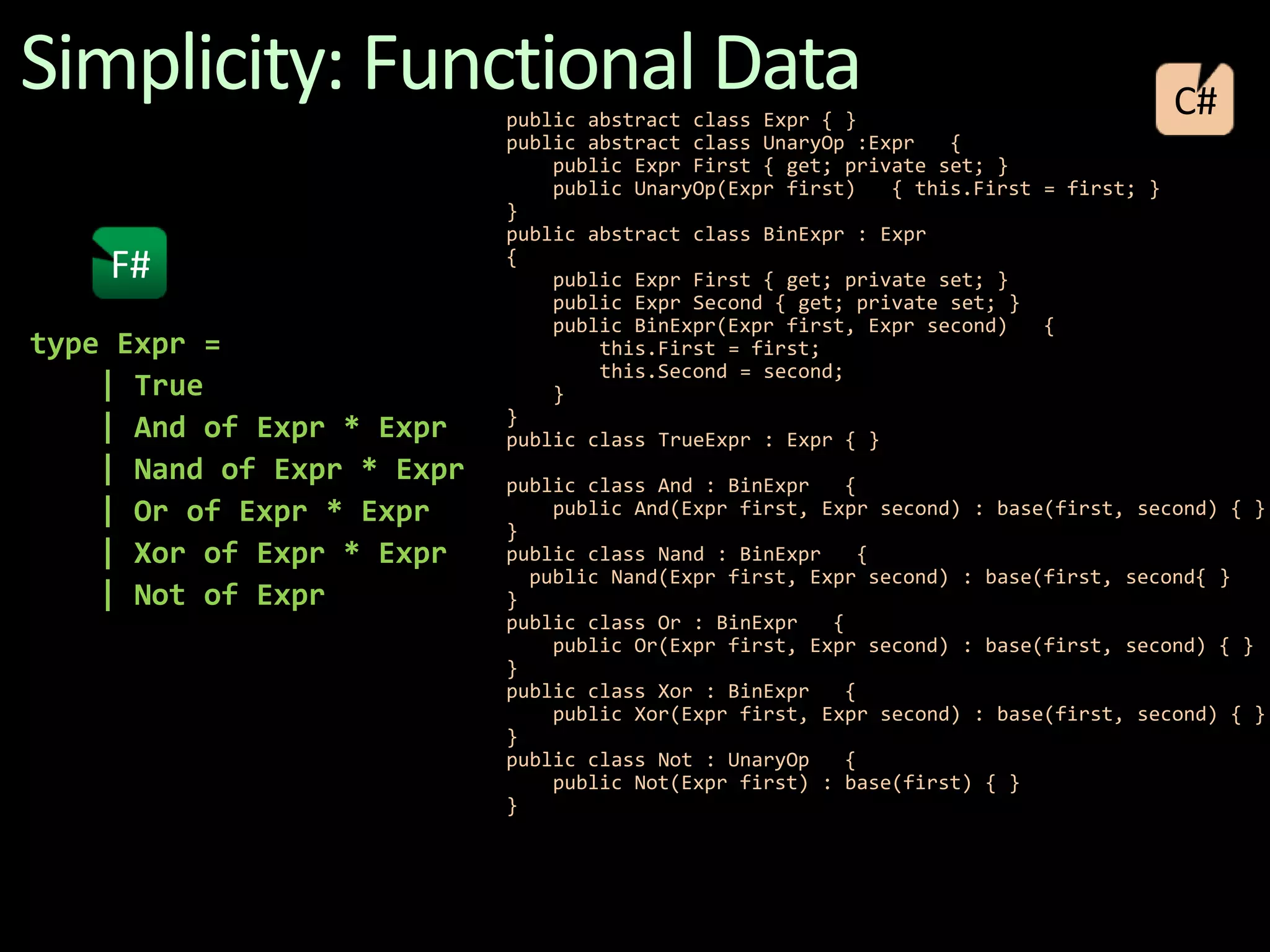
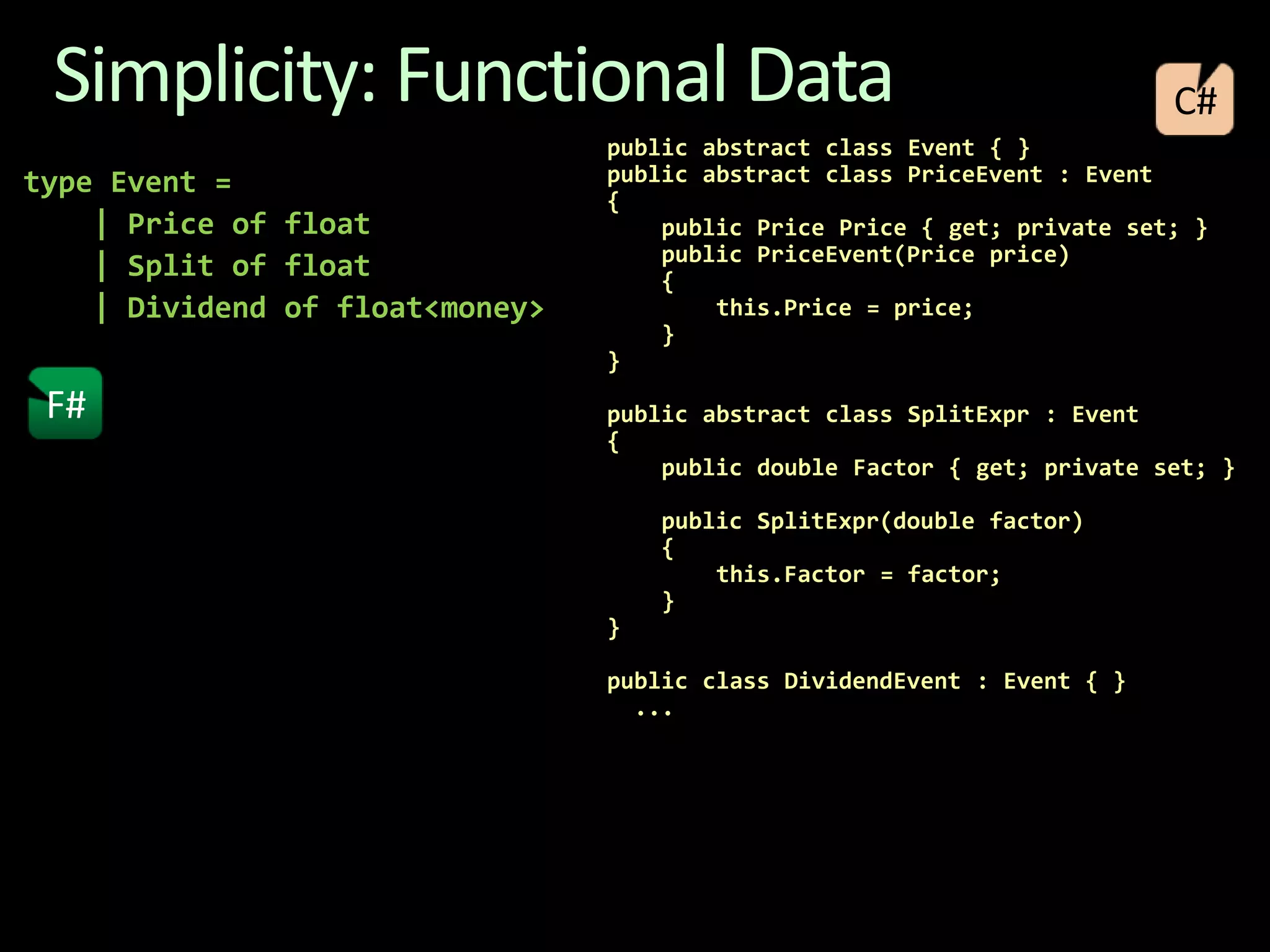

![Async.Parallel [ http "www.google.com"; http "www.bing.com"; http "www.yahoo.com"; ]|> Async.RunSynchronously](https://image.slidesharecdn.com/fsharp-meetup-2010-redist-100909174431-phpapp01/75/London-F-Sharp-User-Group-Don-Syme-on-F-09-09-2010-24-2048.jpg)
![Async.Parallel [ for i in 0 .. 200 -> computeTask i ]|> Async.RunSynchronously](https://image.slidesharecdn.com/fsharp-meetup-2010-redist-100909174431-phpapp01/75/London-F-Sharp-User-Group-Don-Syme-on-F-09-09-2010-25-2048.jpg)
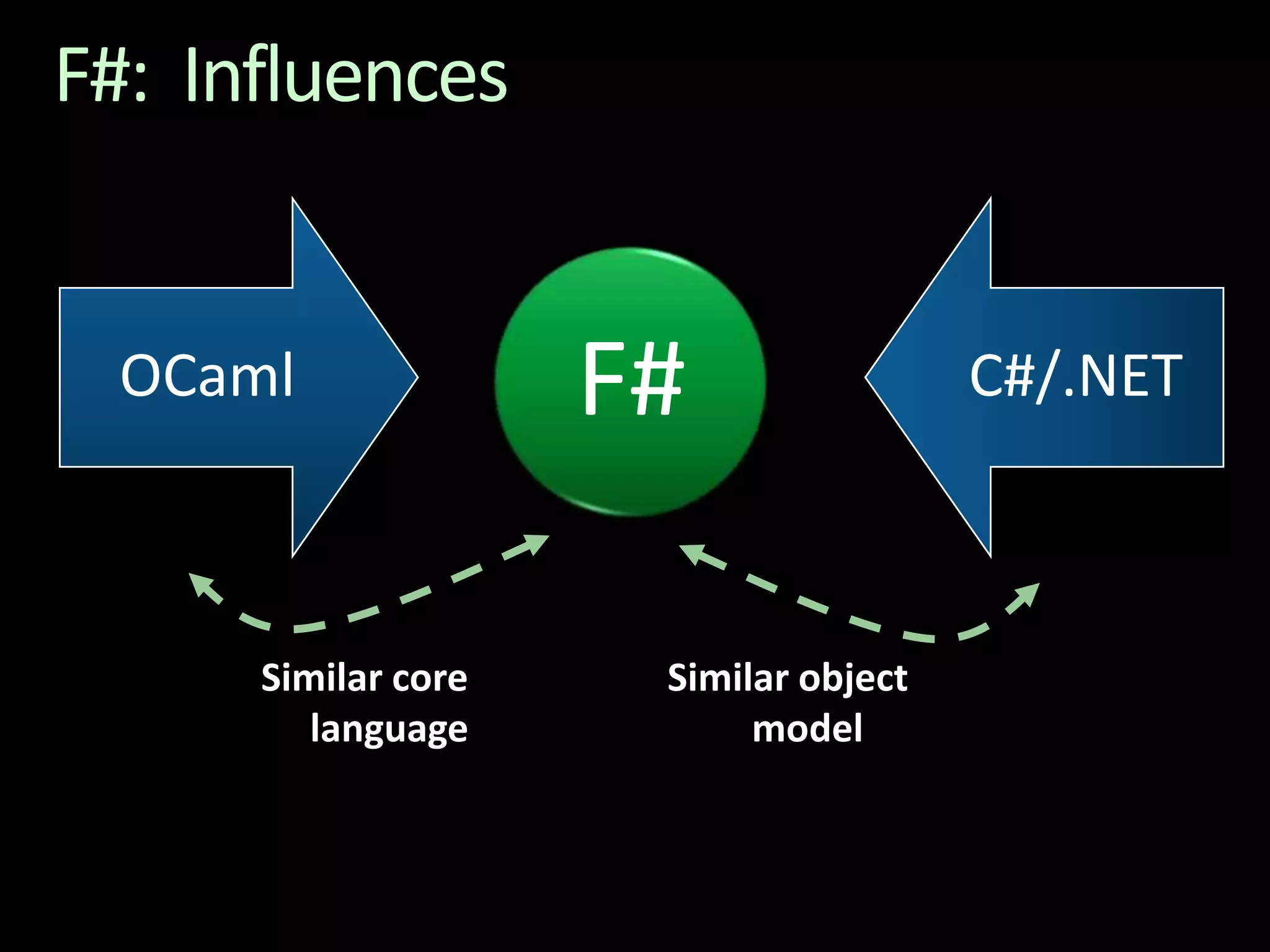

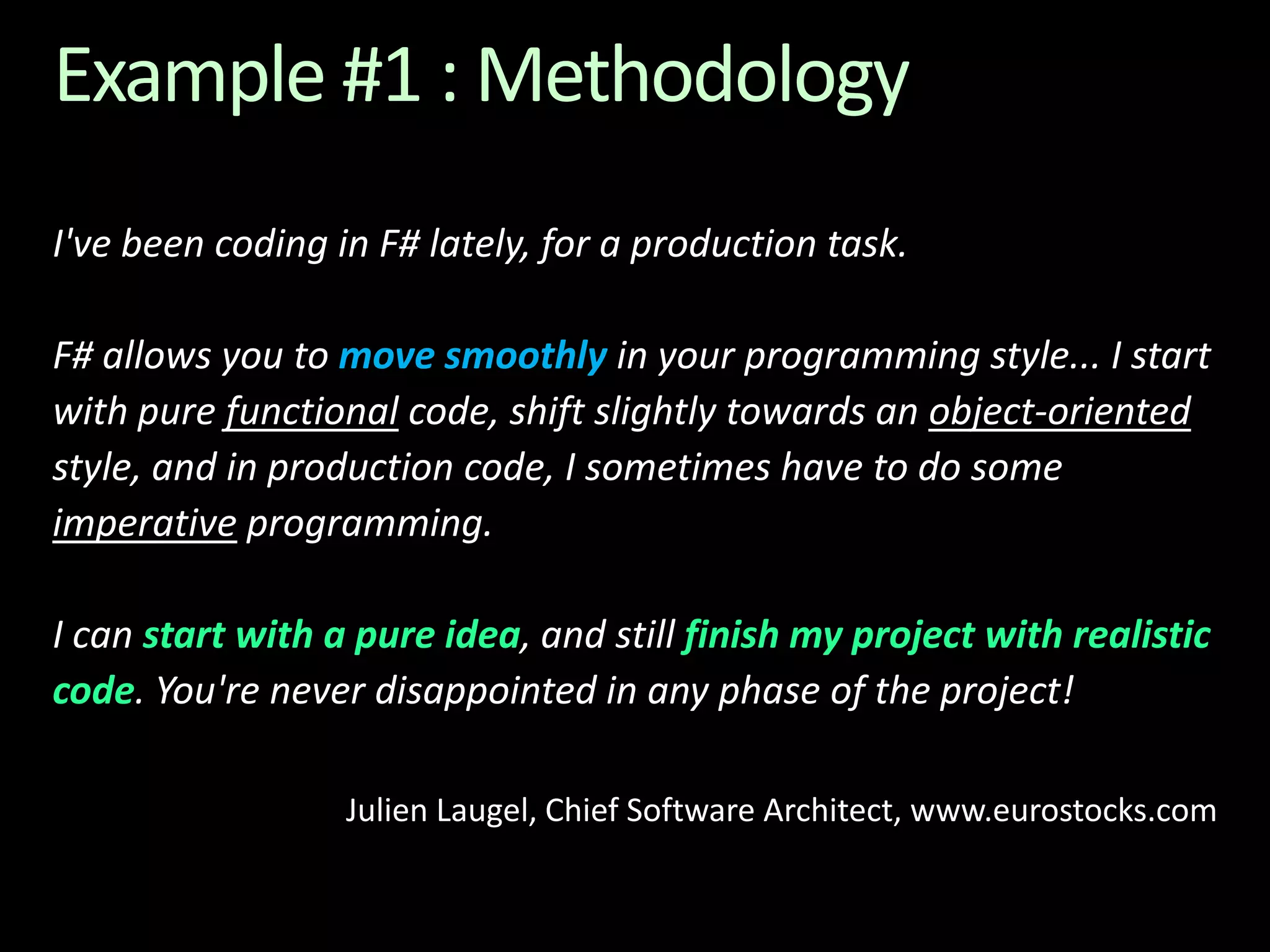
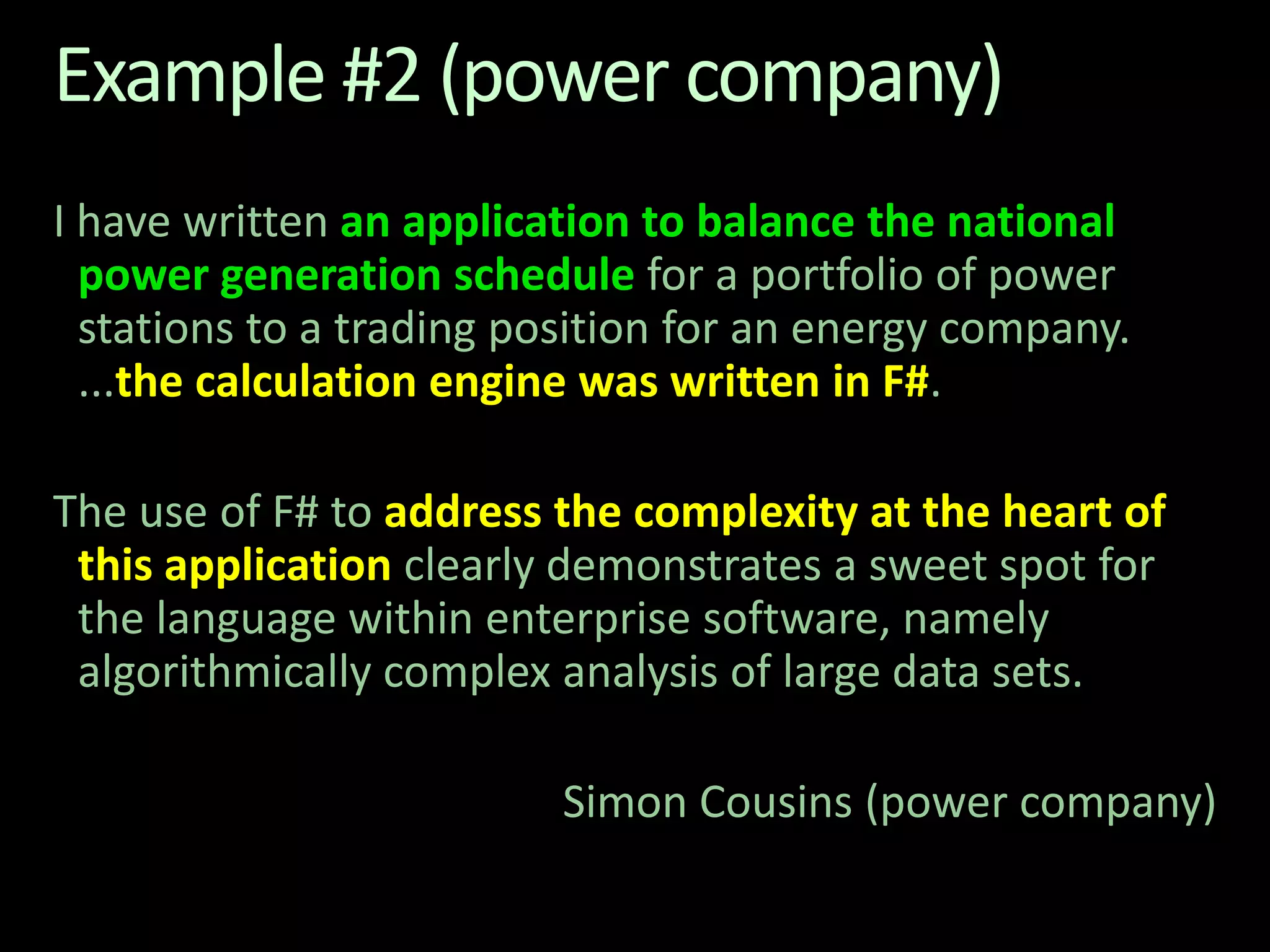
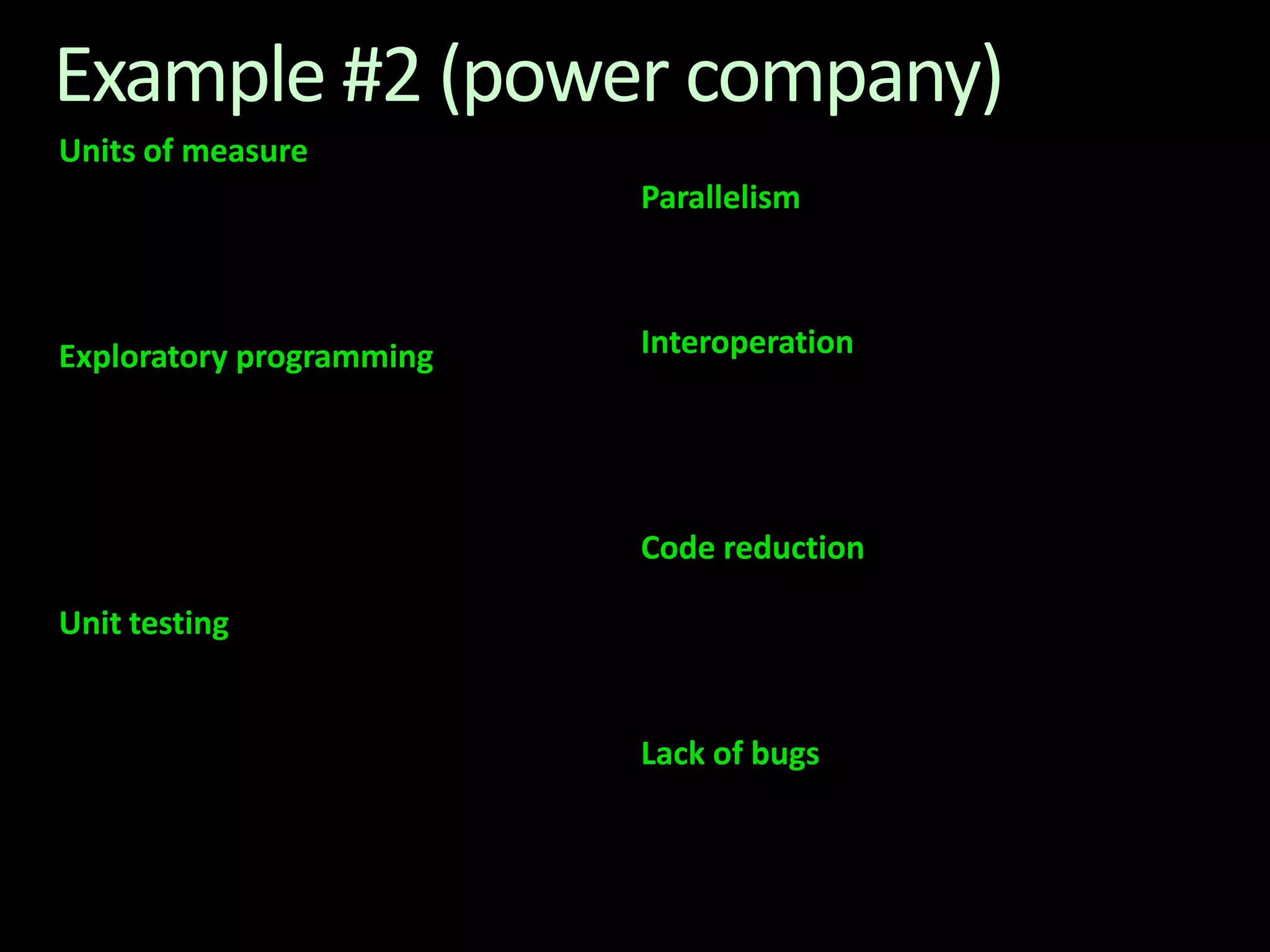
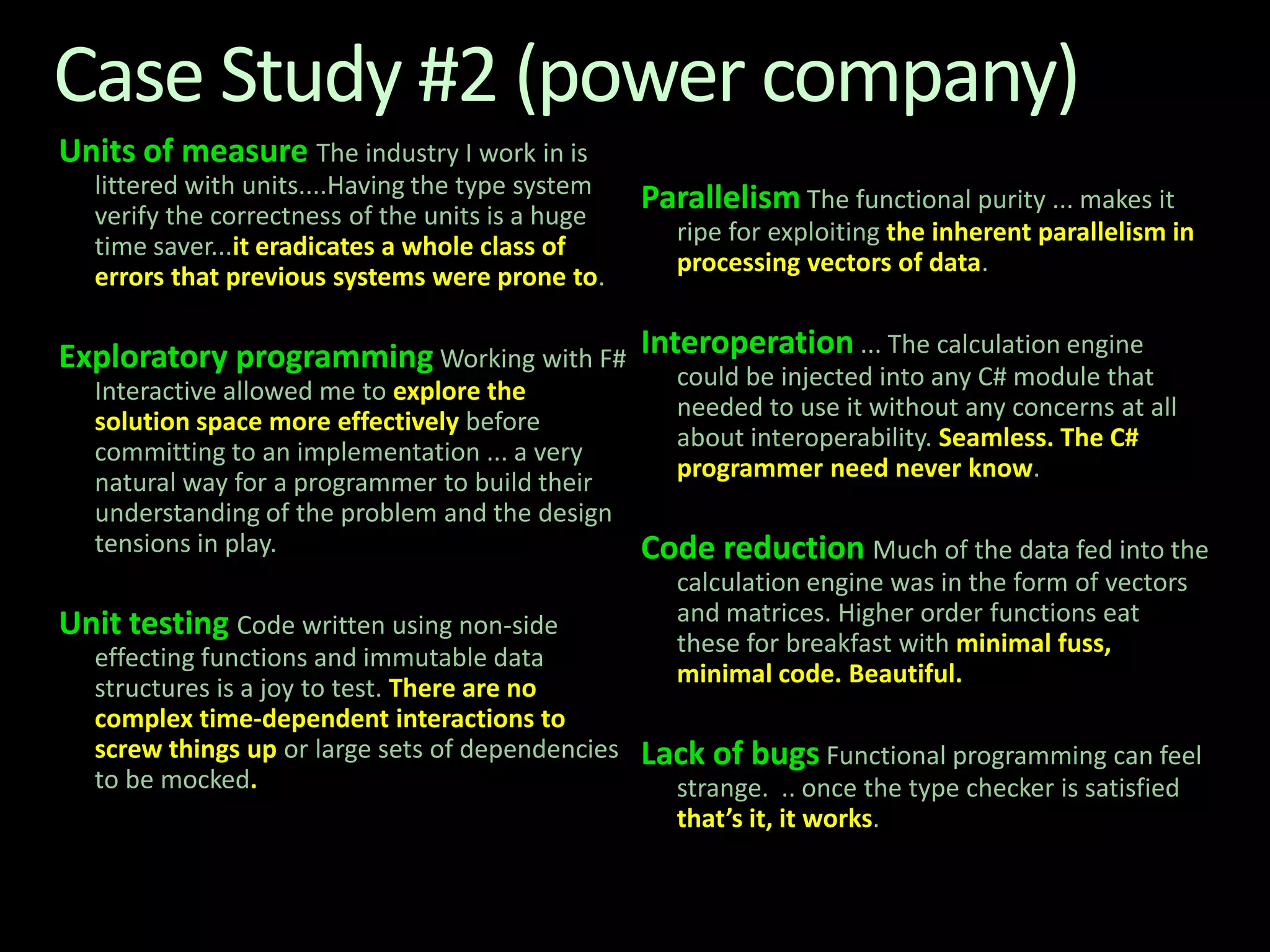

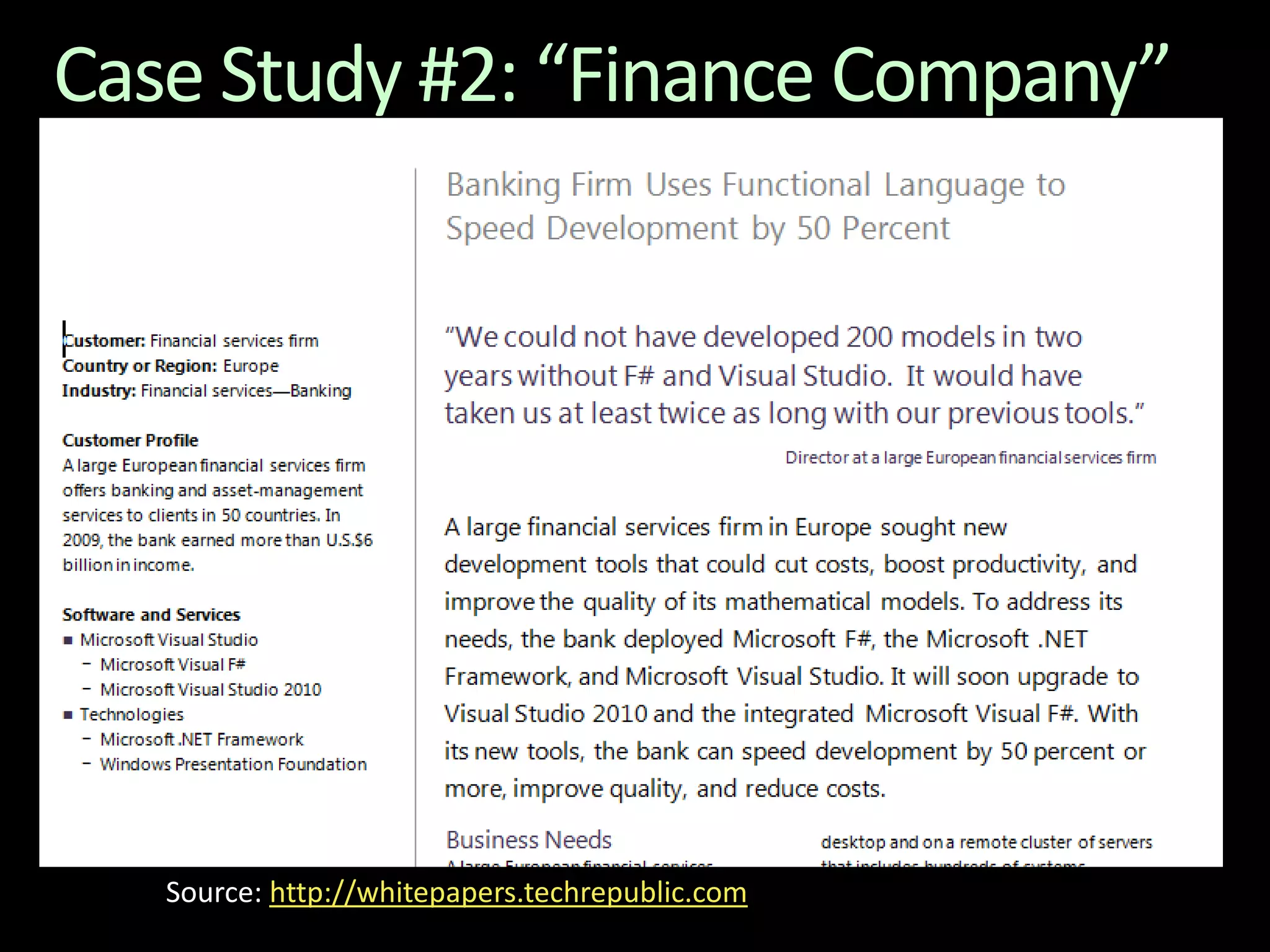
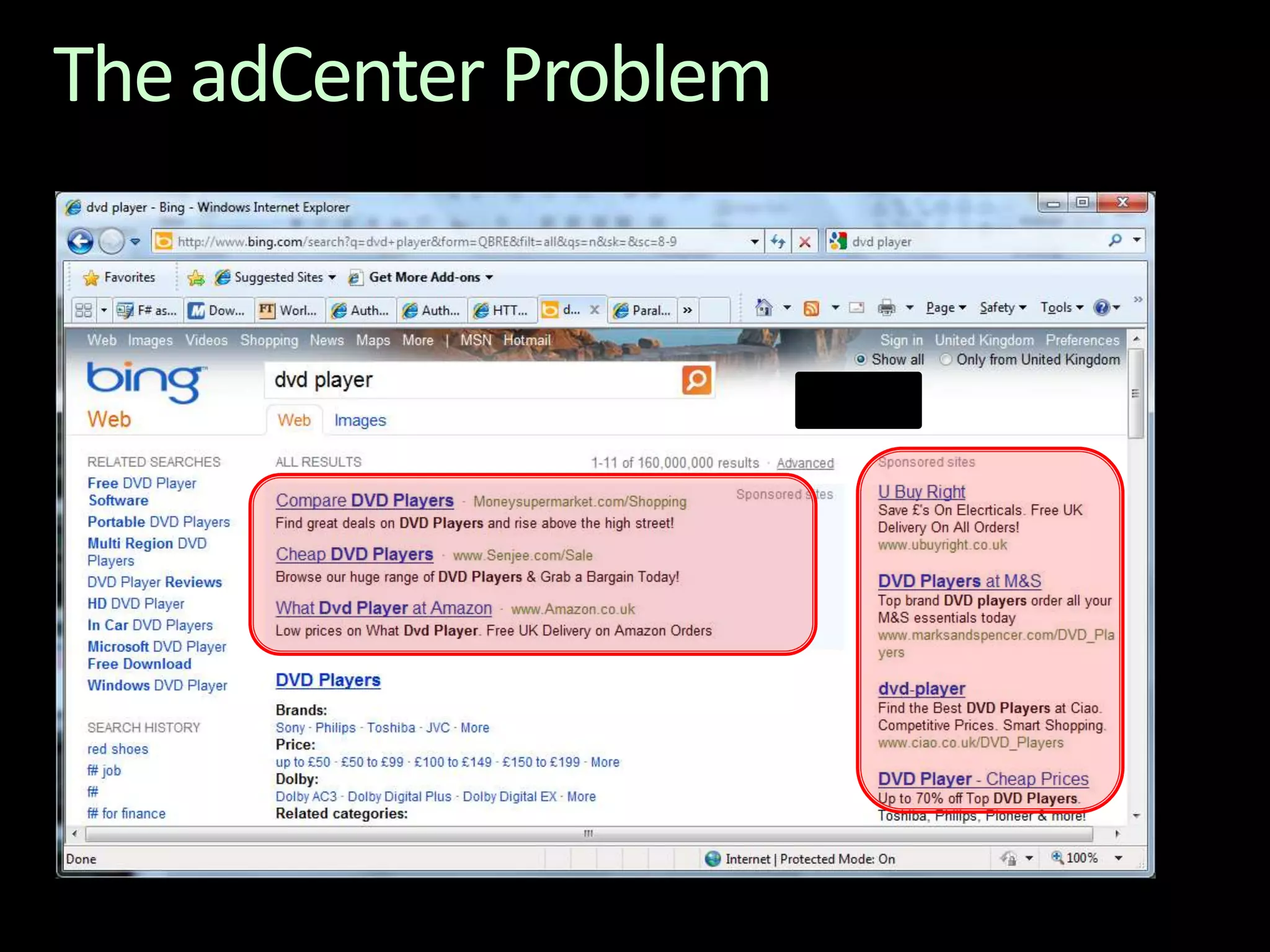
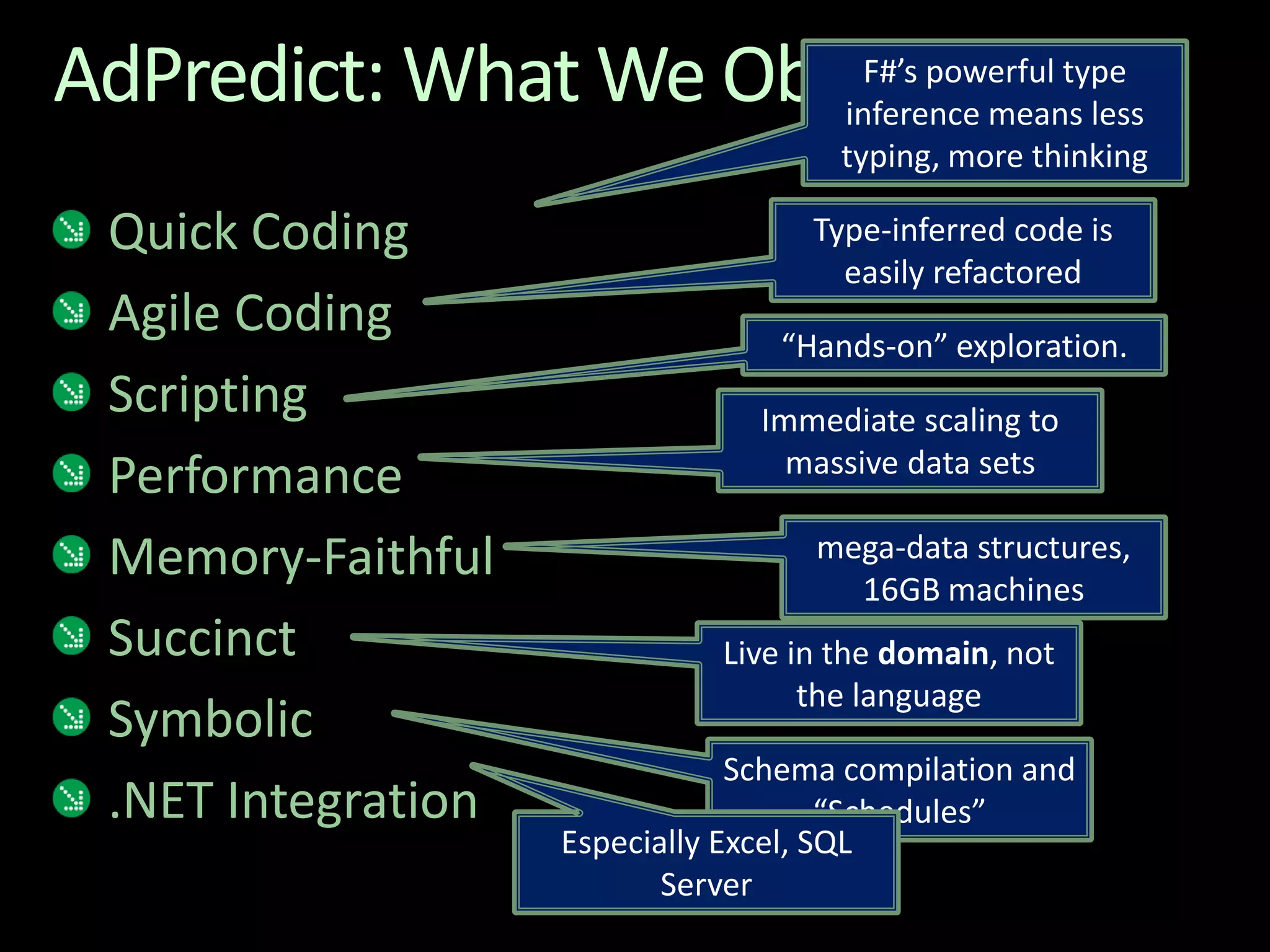
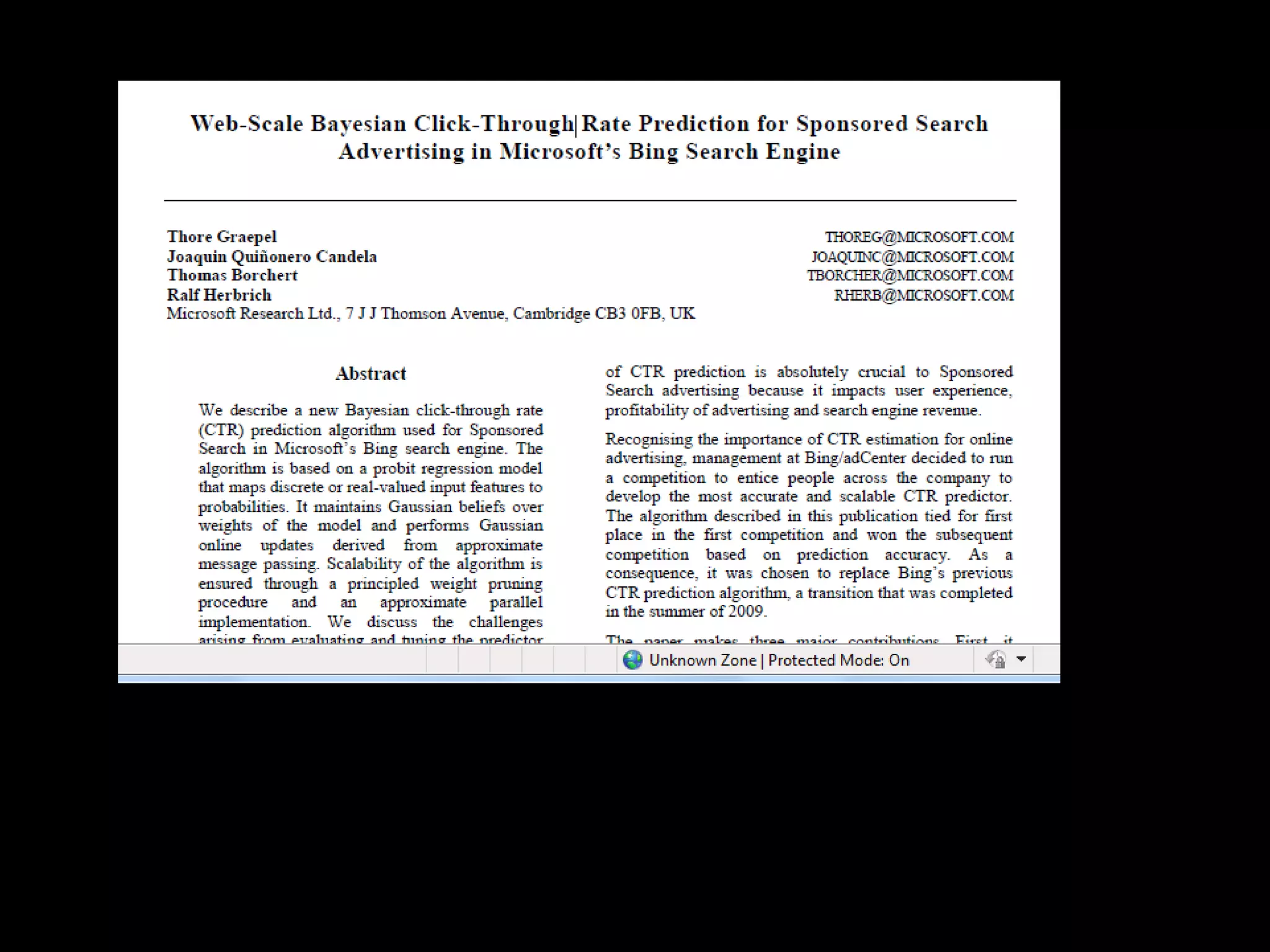

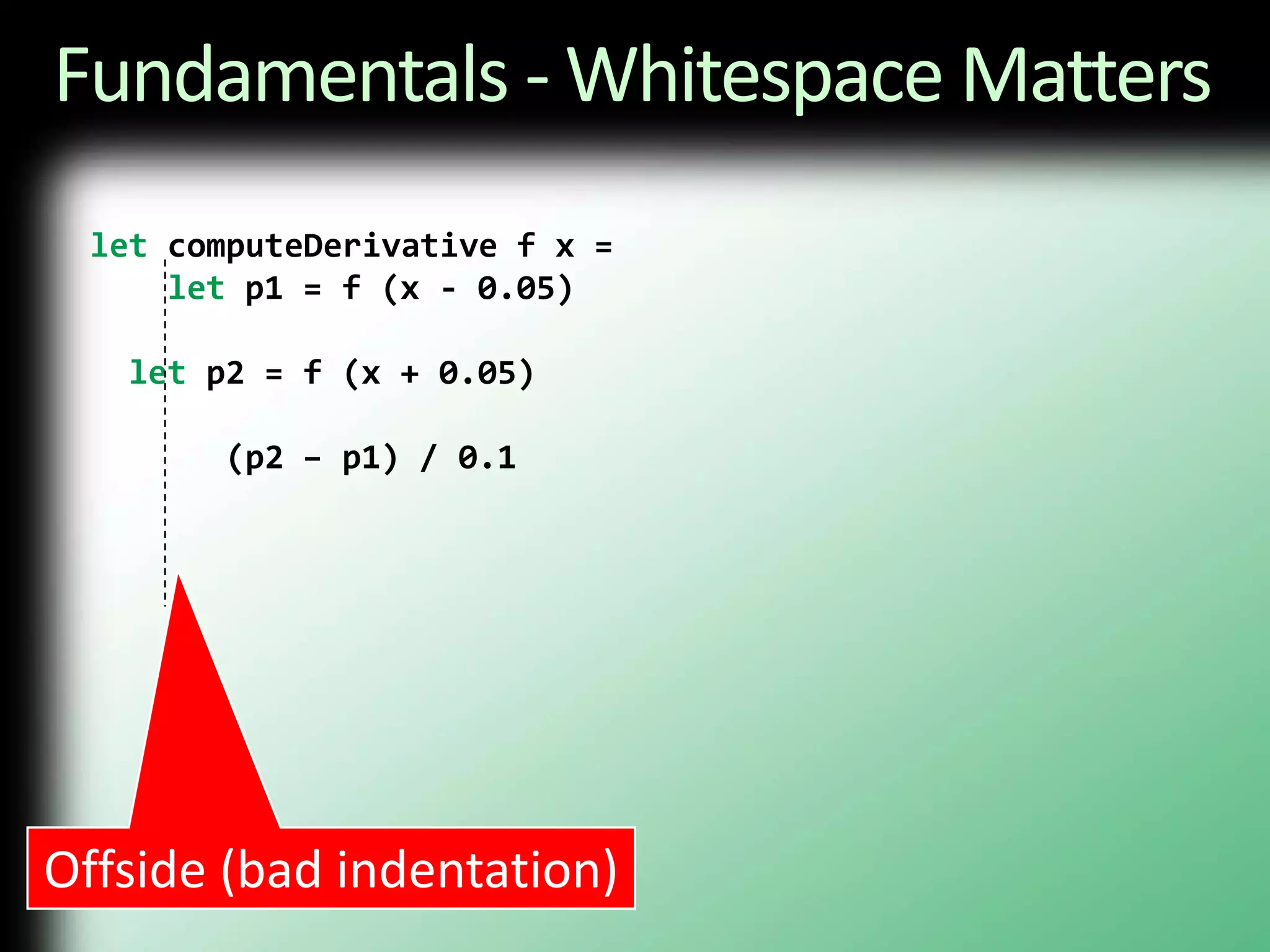
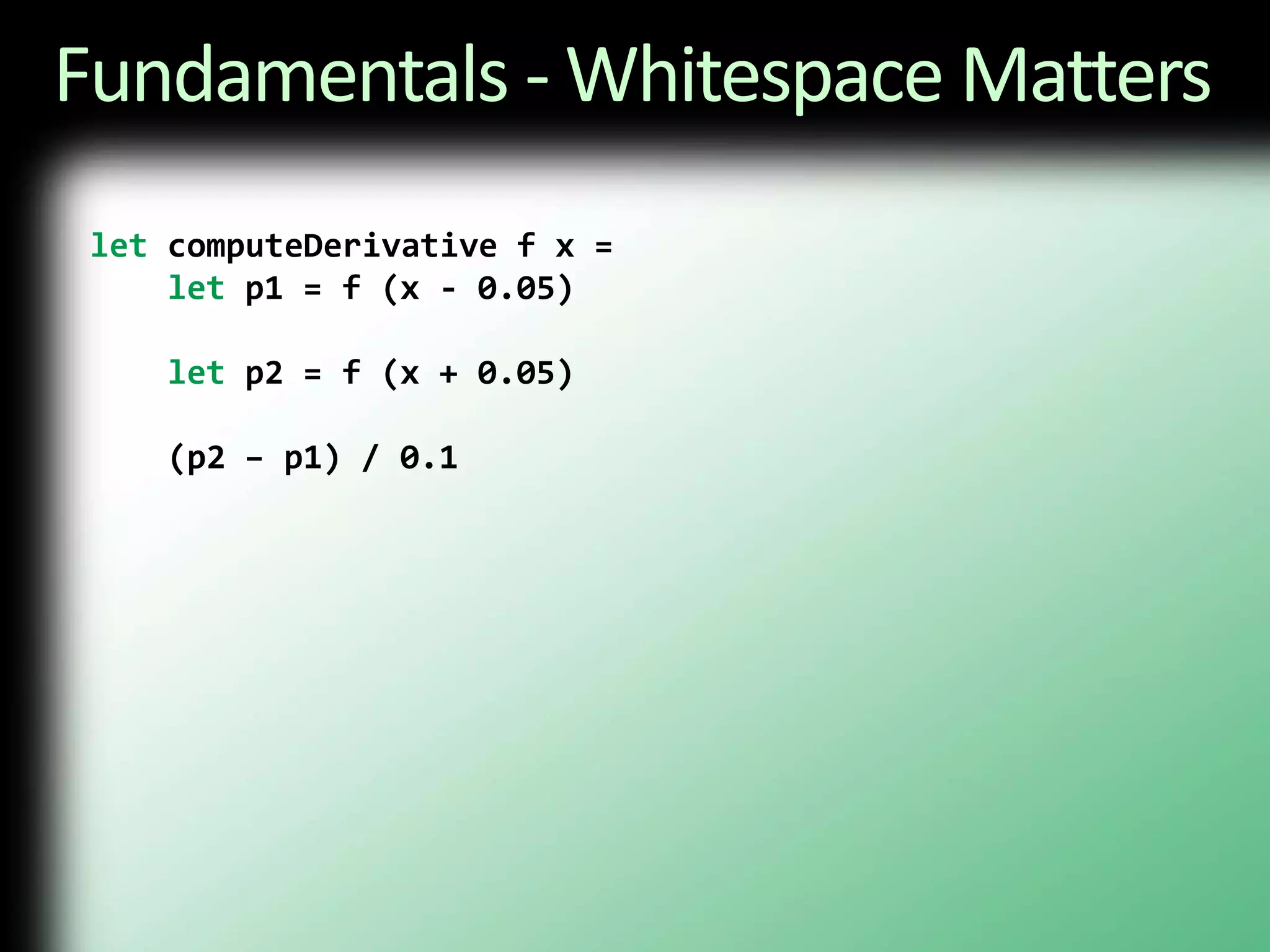
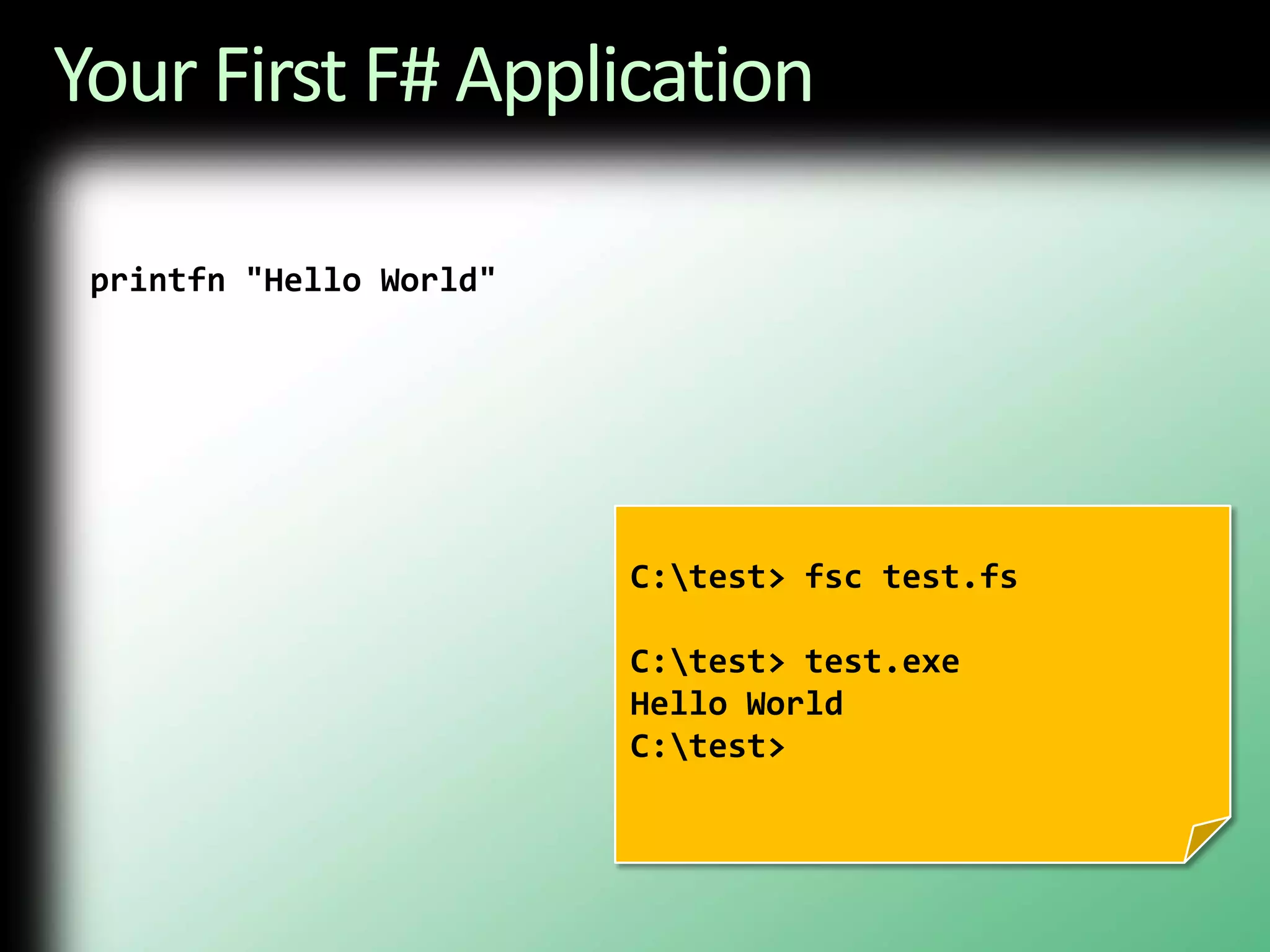
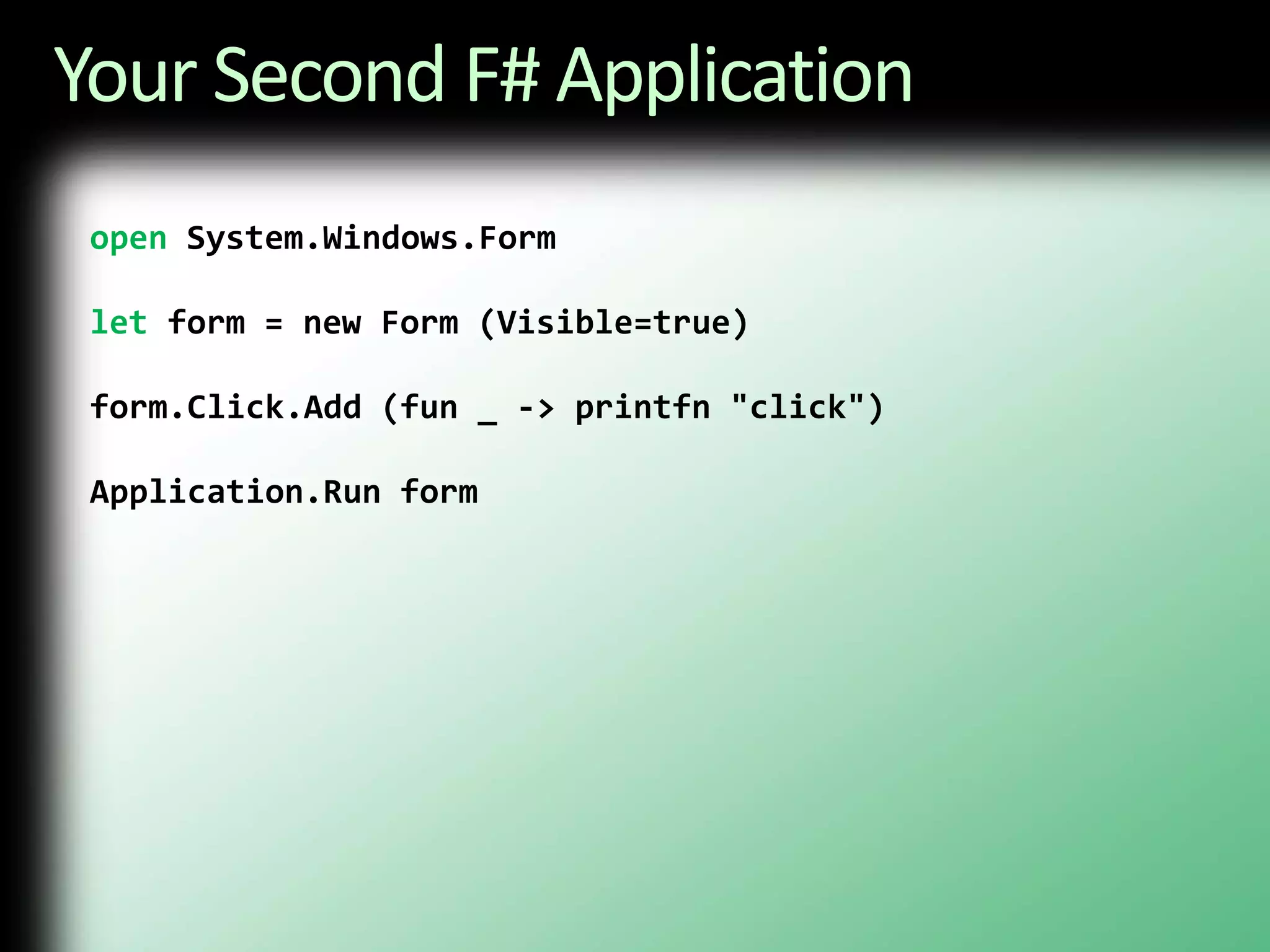
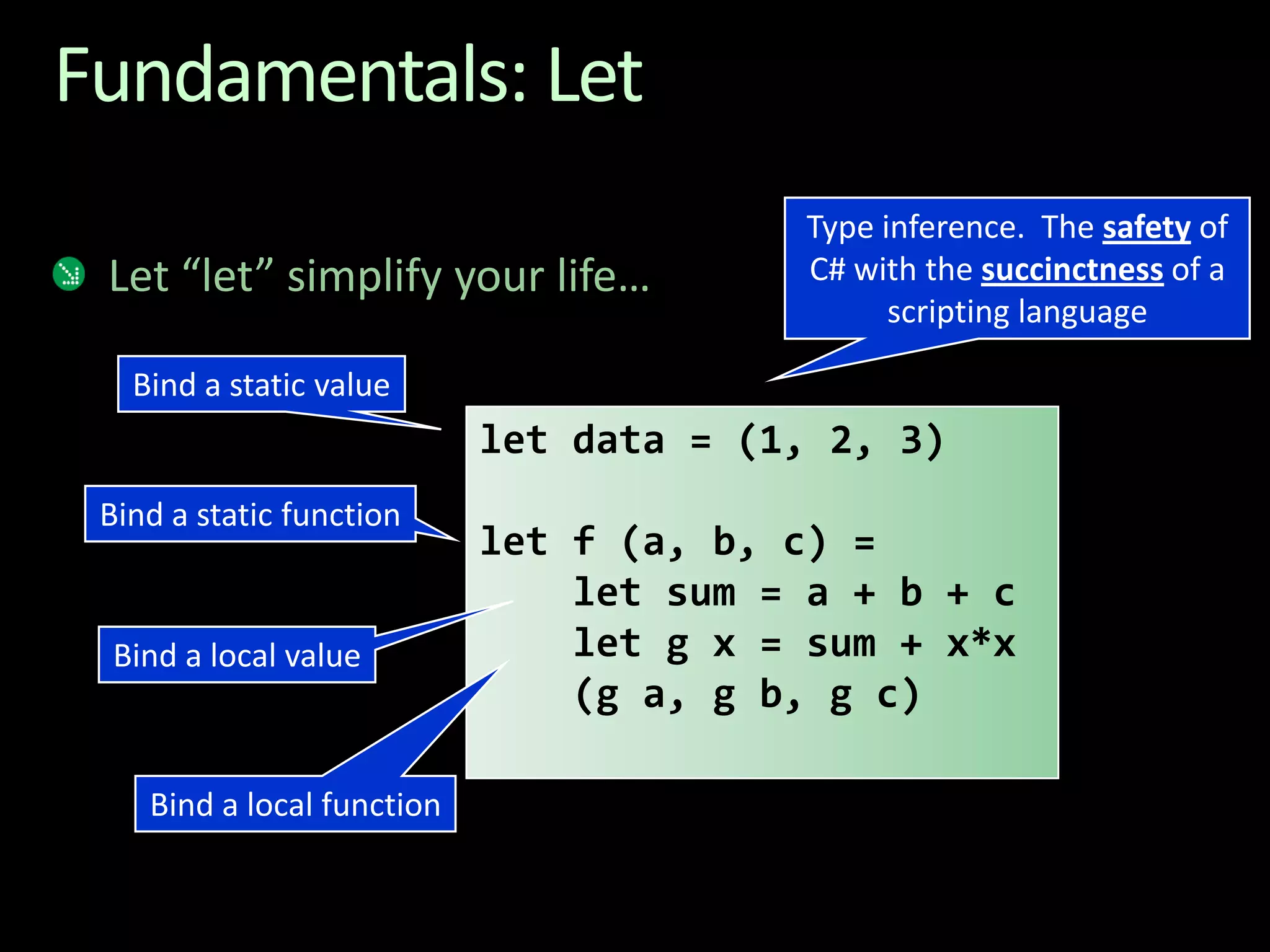
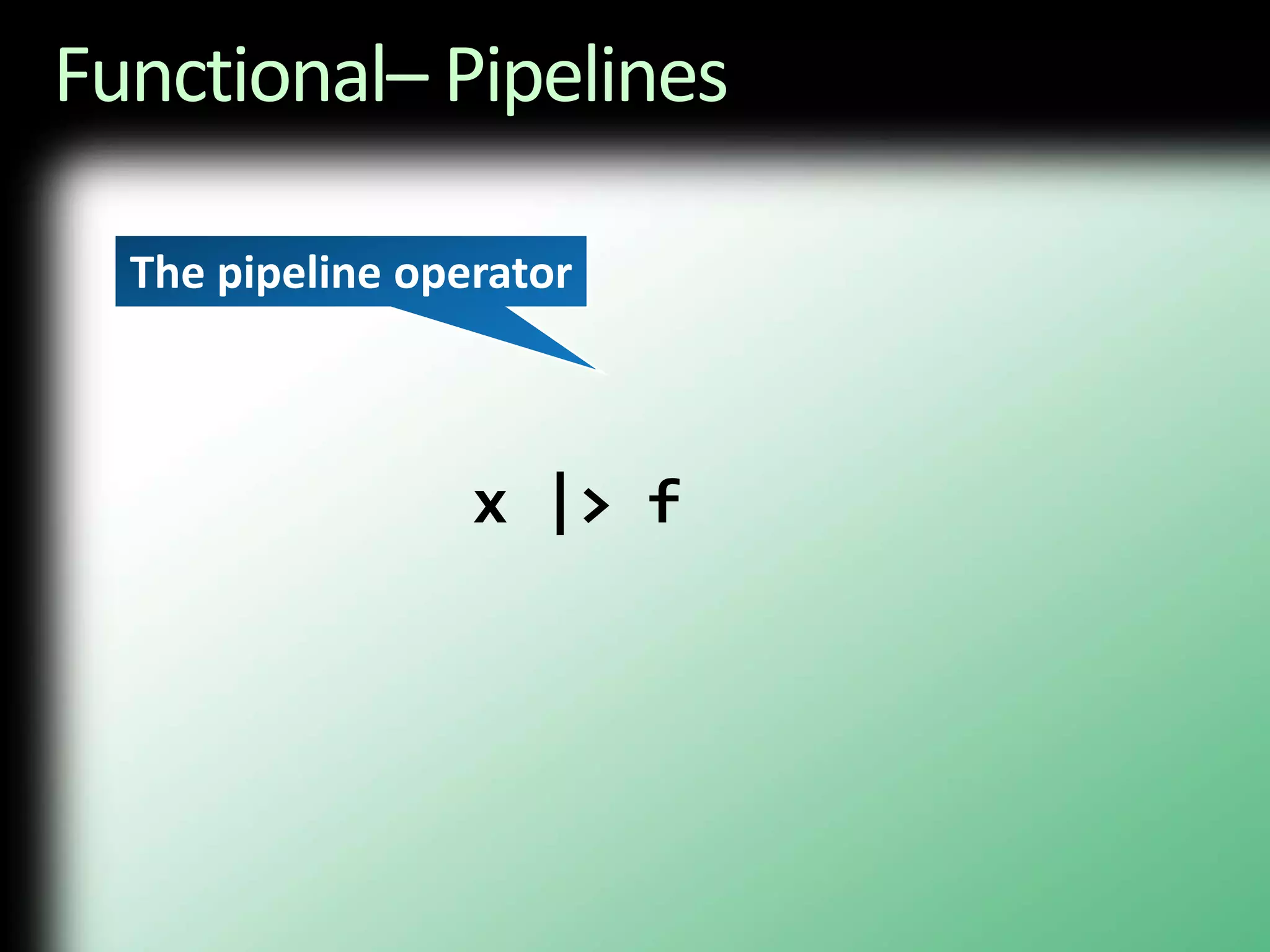
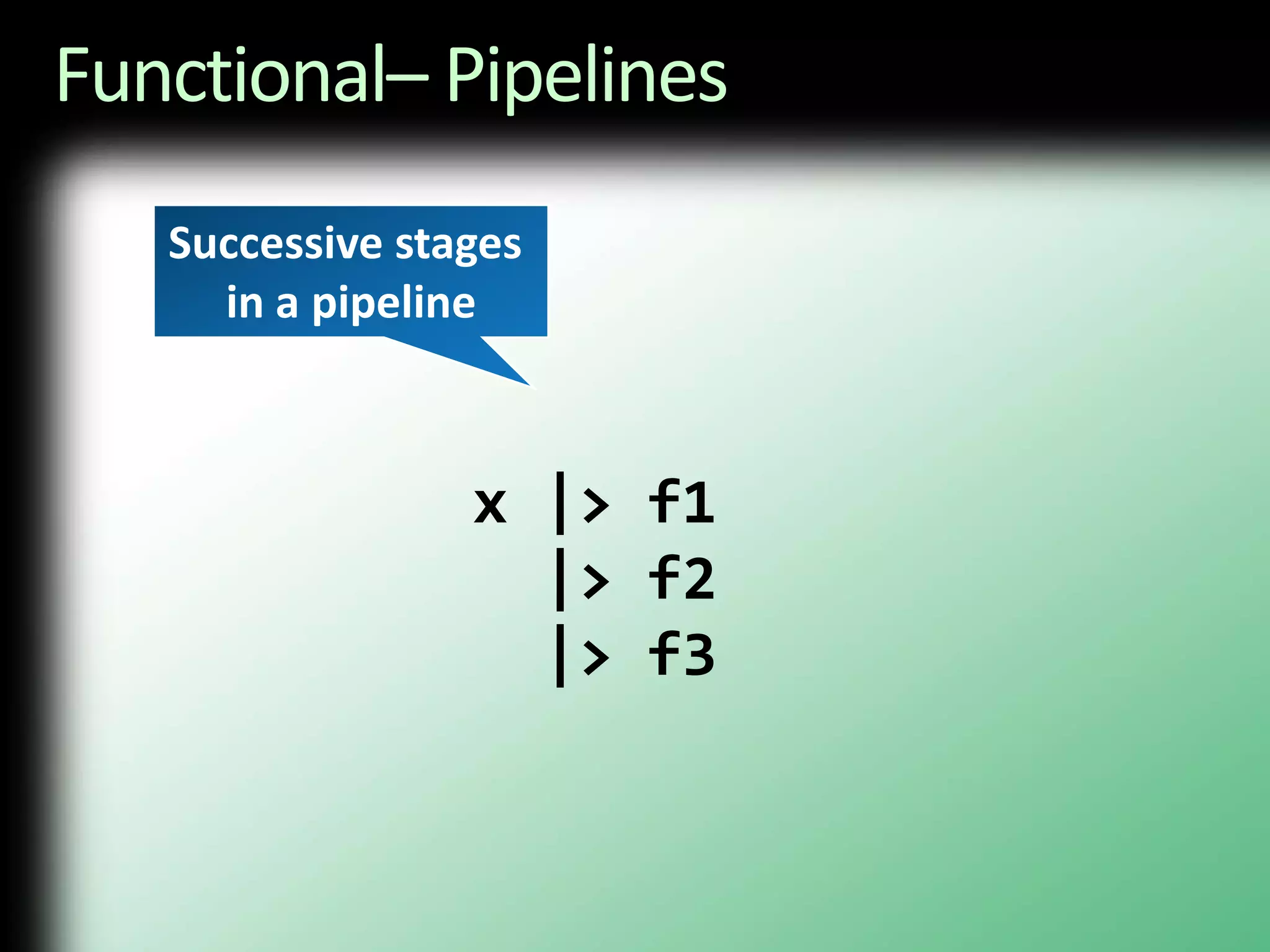
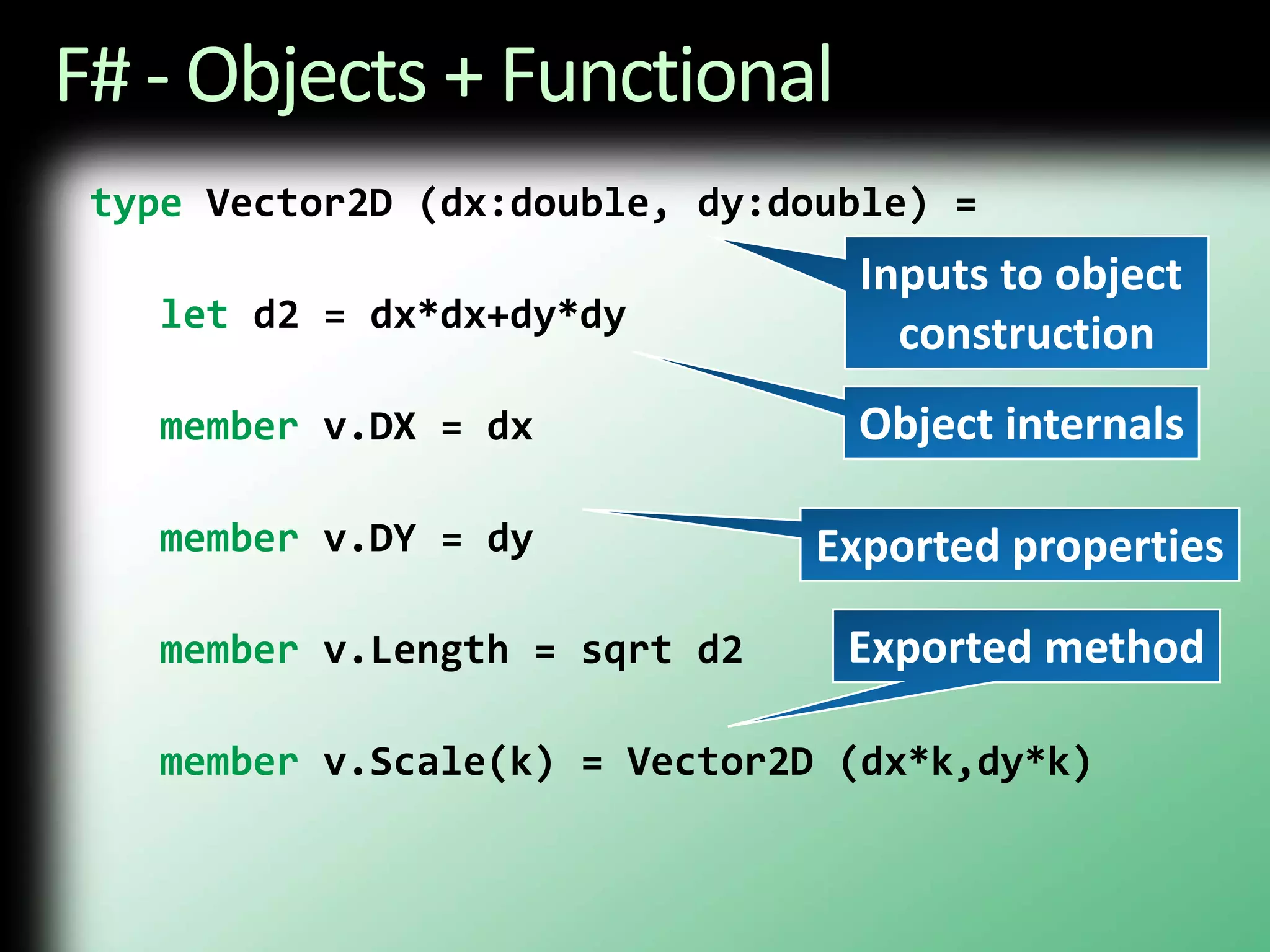

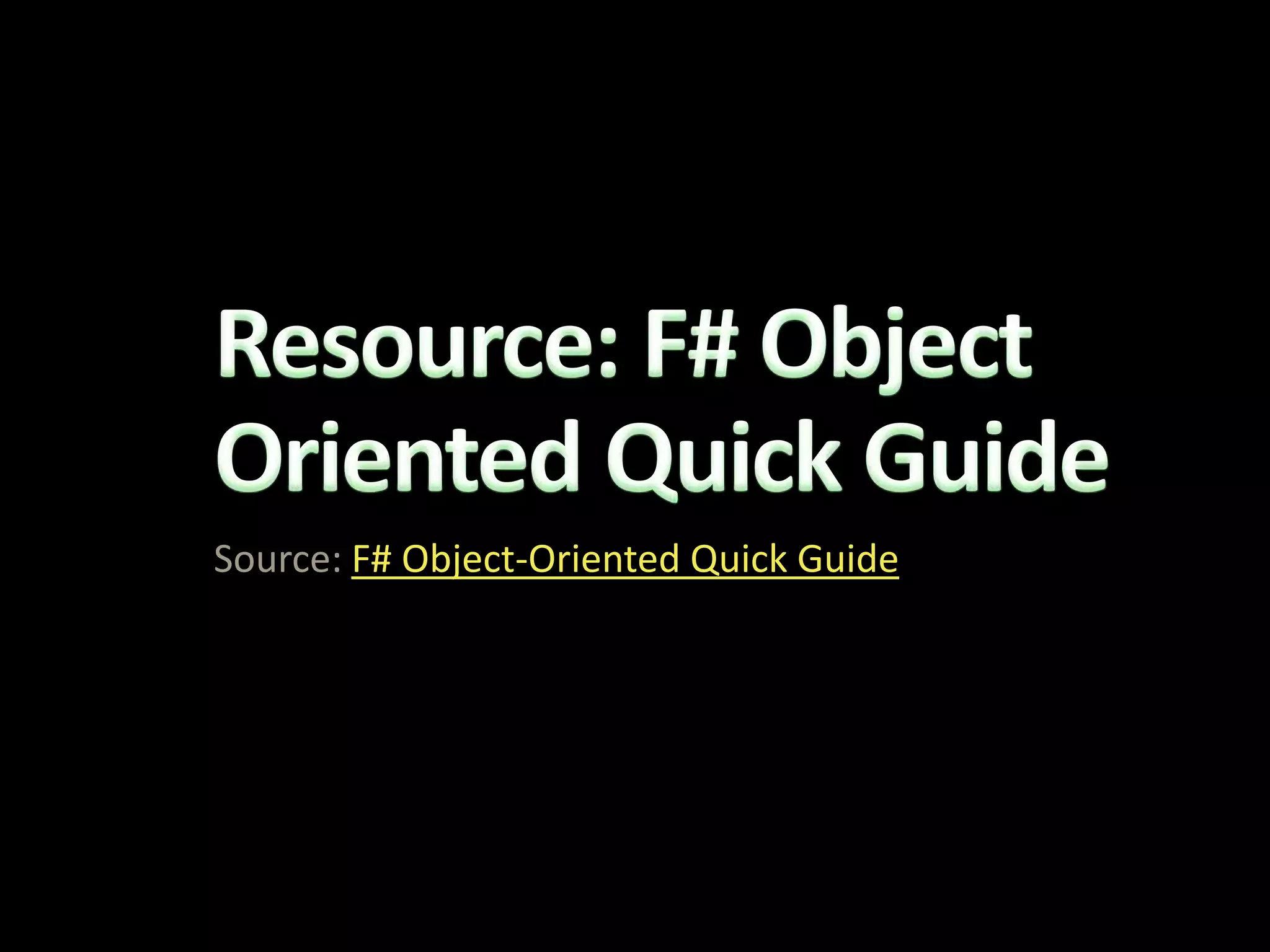
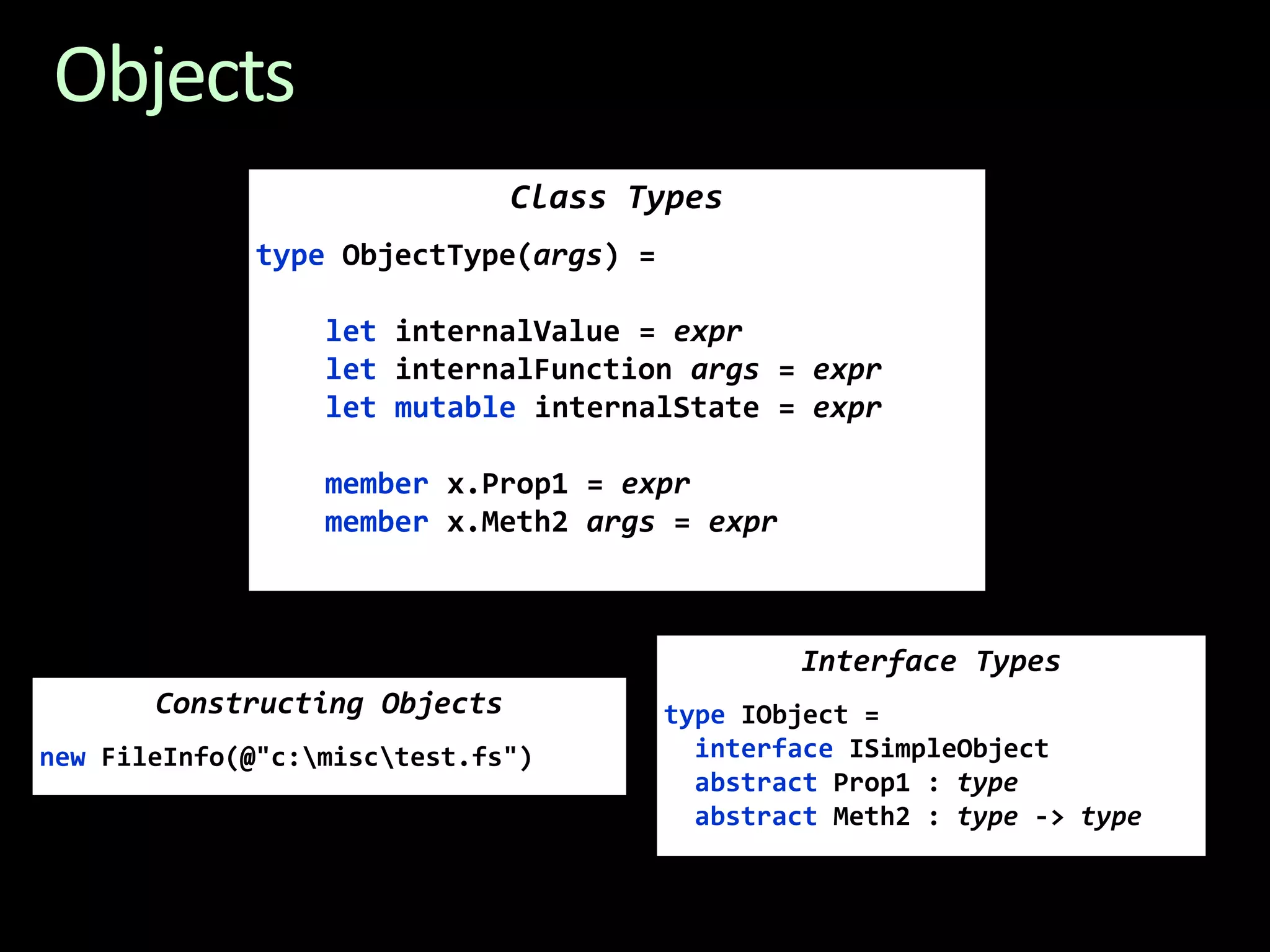
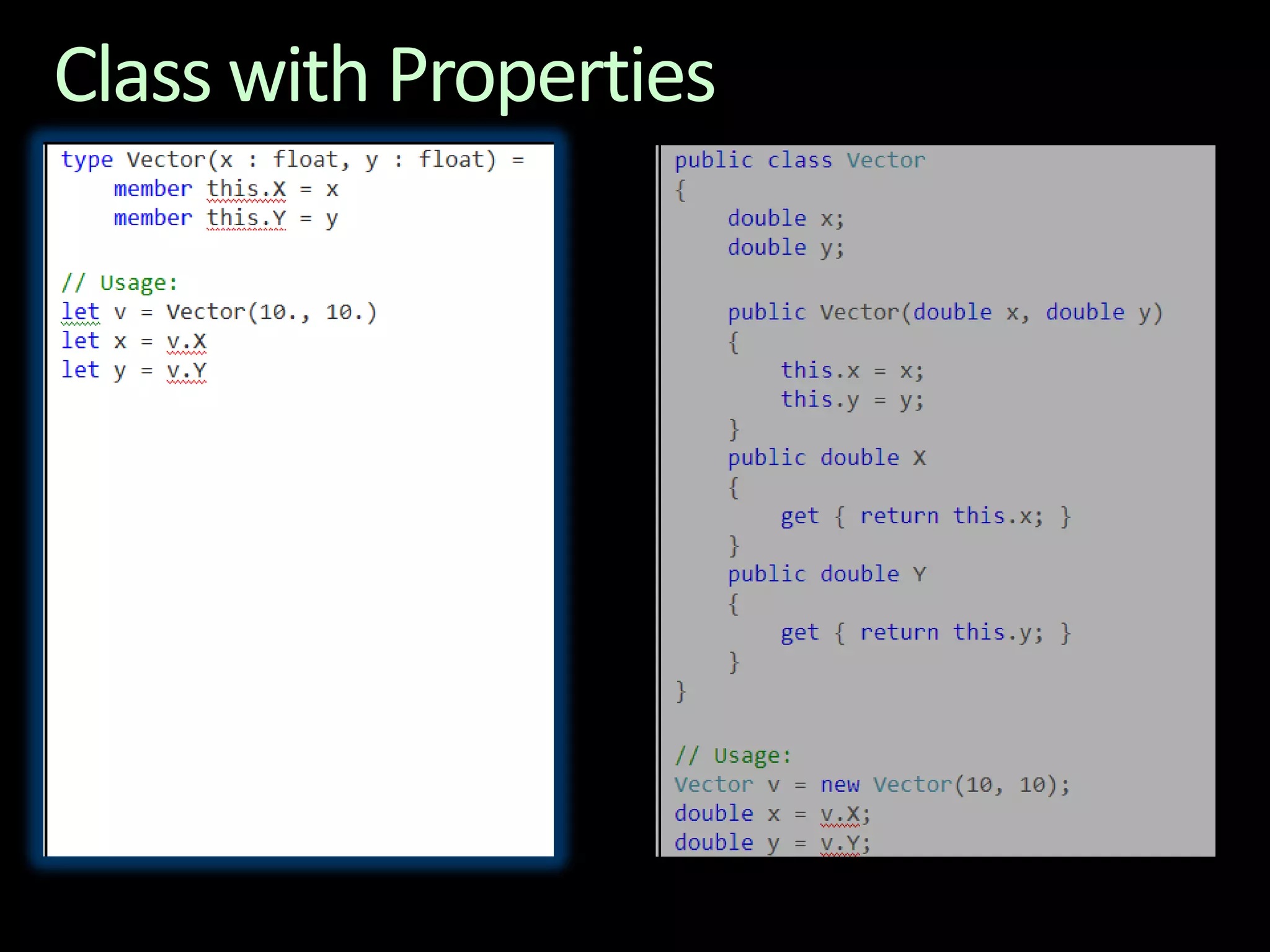
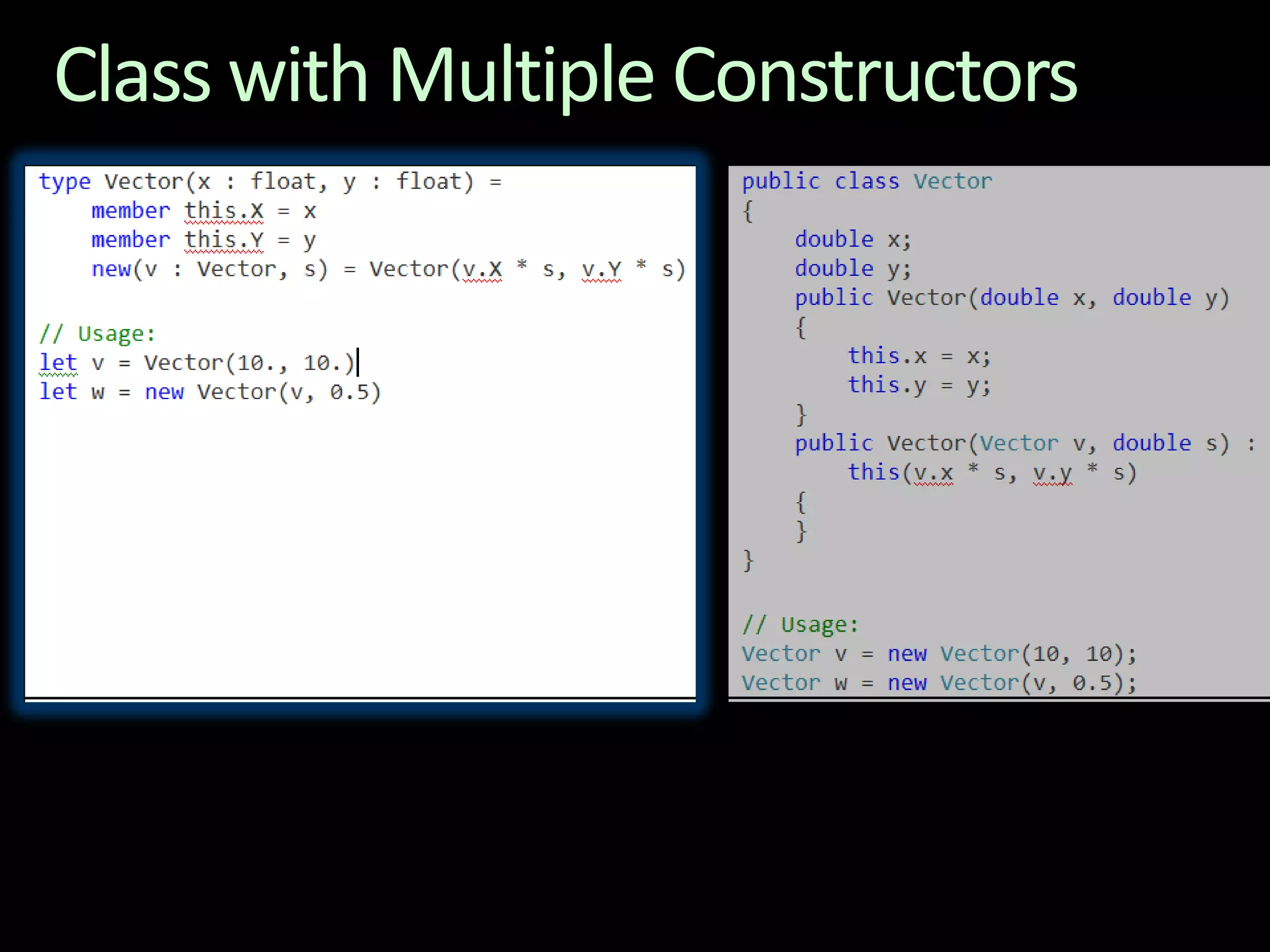
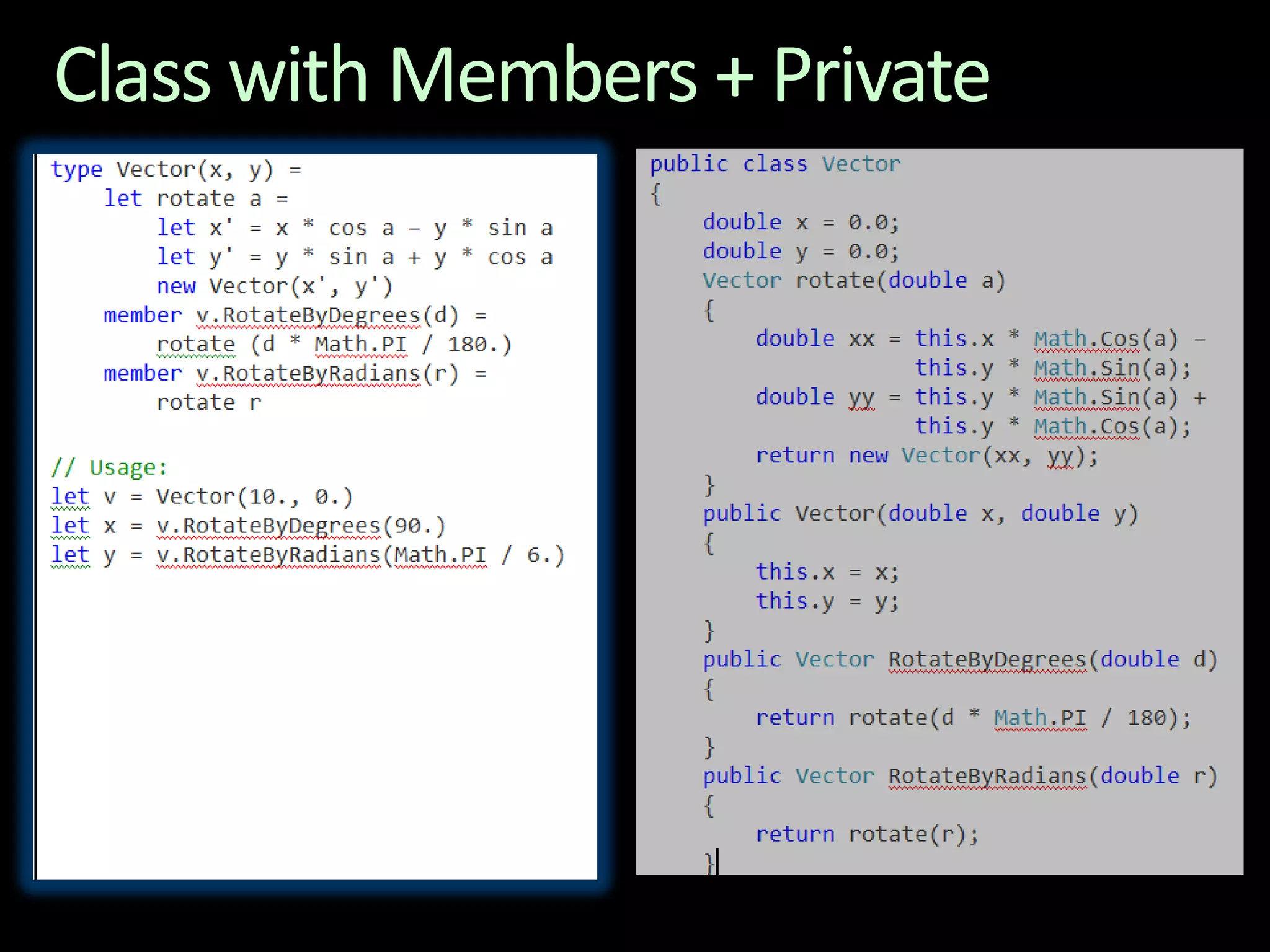
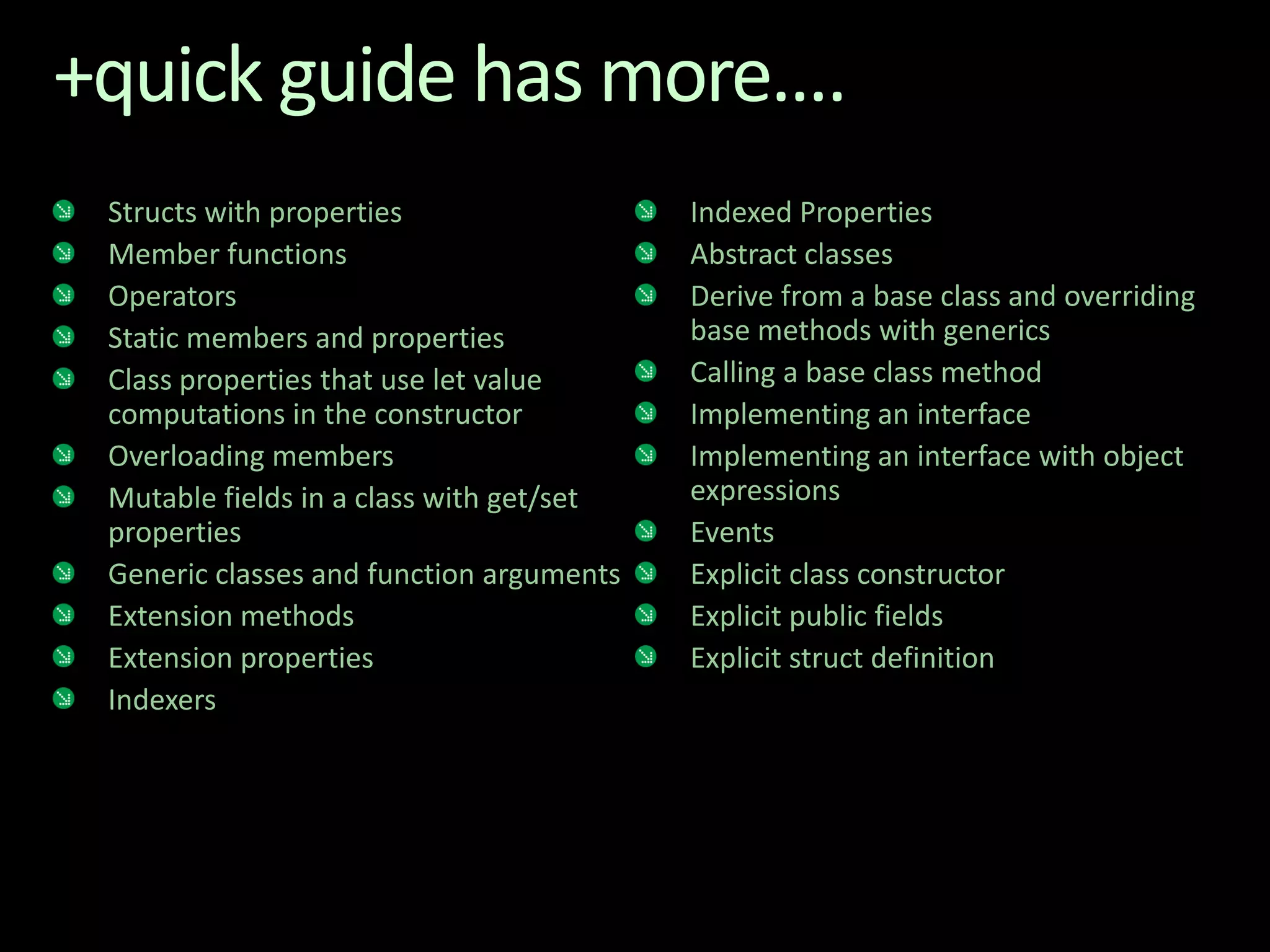
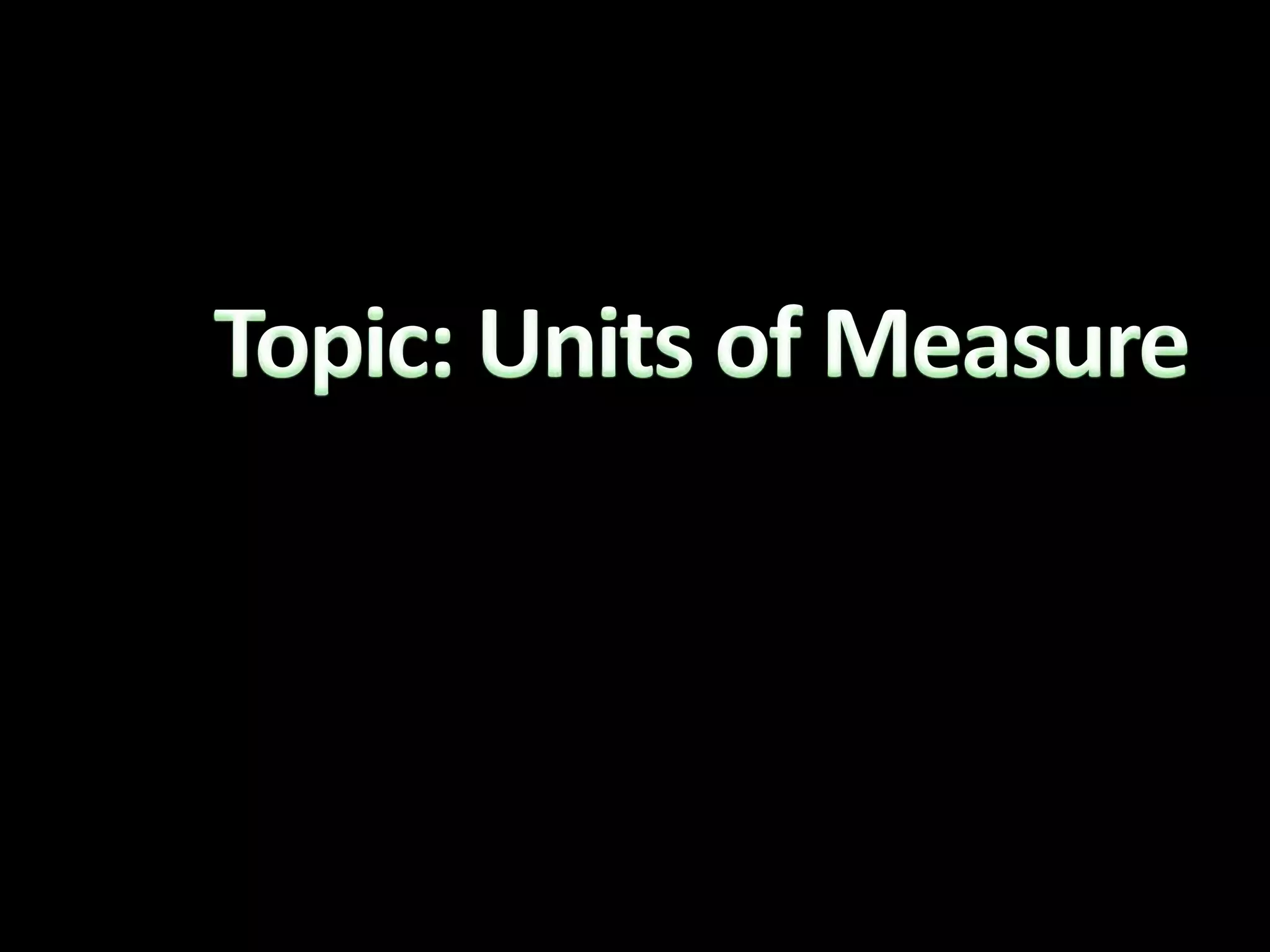
![Units of Measure – Typical Example[<Measure>] type money [<Measure>] type shares[<Measure>] type volume [<Measure>] typerateOfReturnletrateOfReturn (f:float) = f * 1.<rateOfReturn>type Price = { Open: float<money>; High: float<money>; Low: float<money>; Close: float<money>; Volume: float<volume> }](https://image.slidesharecdn.com/fsharp-meetup-2010-redist-100909174431-phpapp01/75/London-F-Sharp-User-Group-Don-Syme-on-F-09-09-2010-54-2048.jpg)

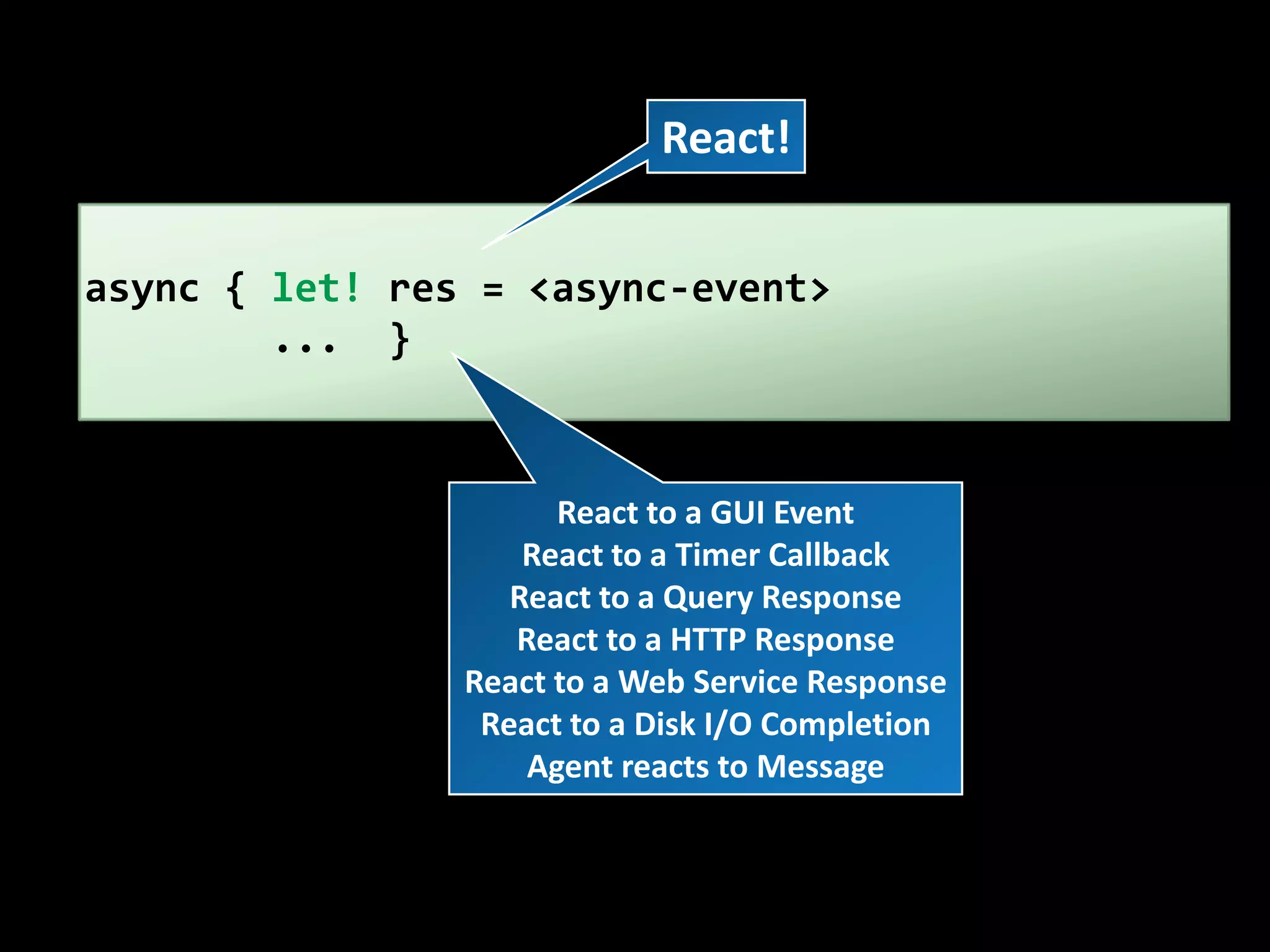
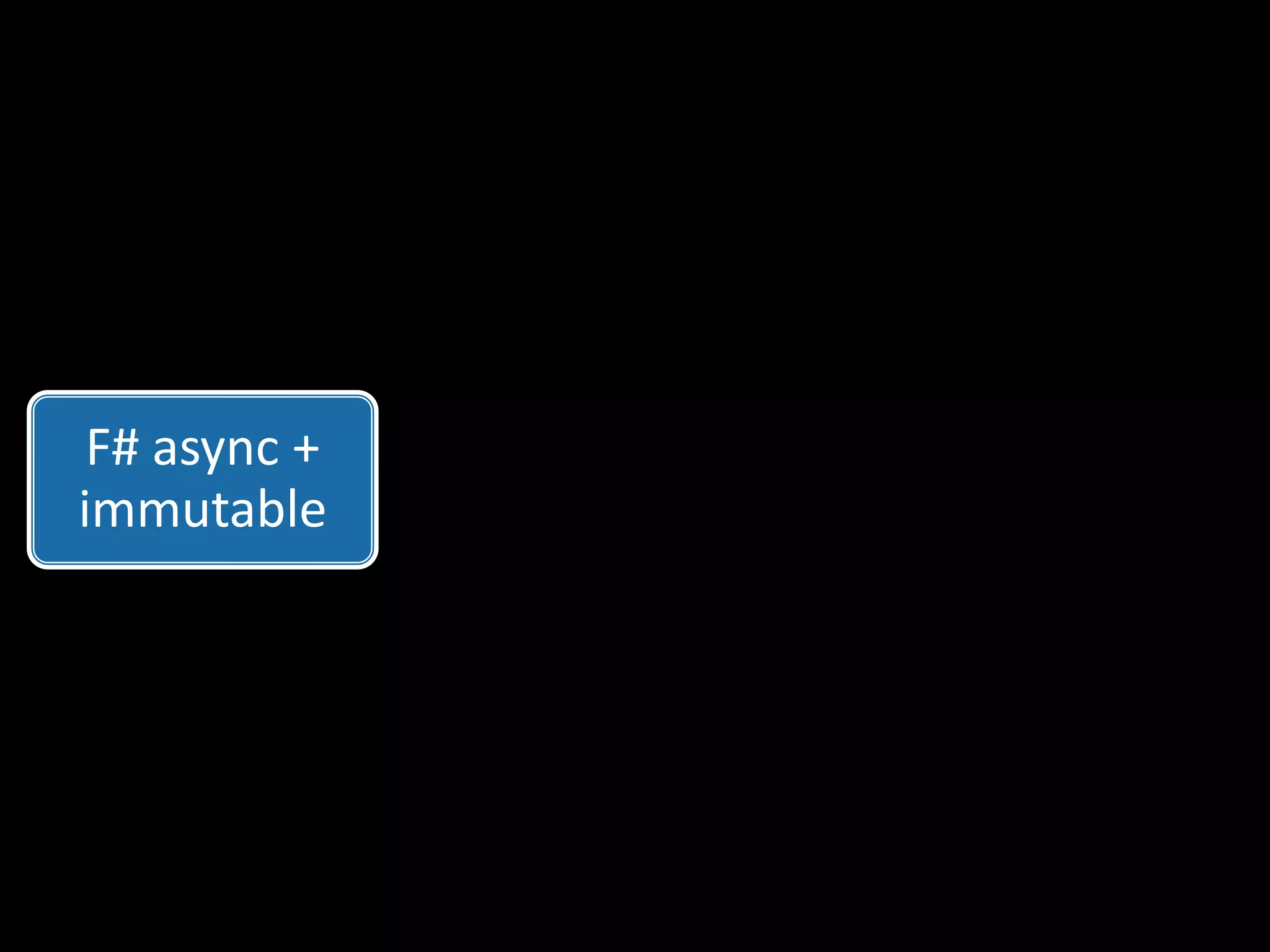
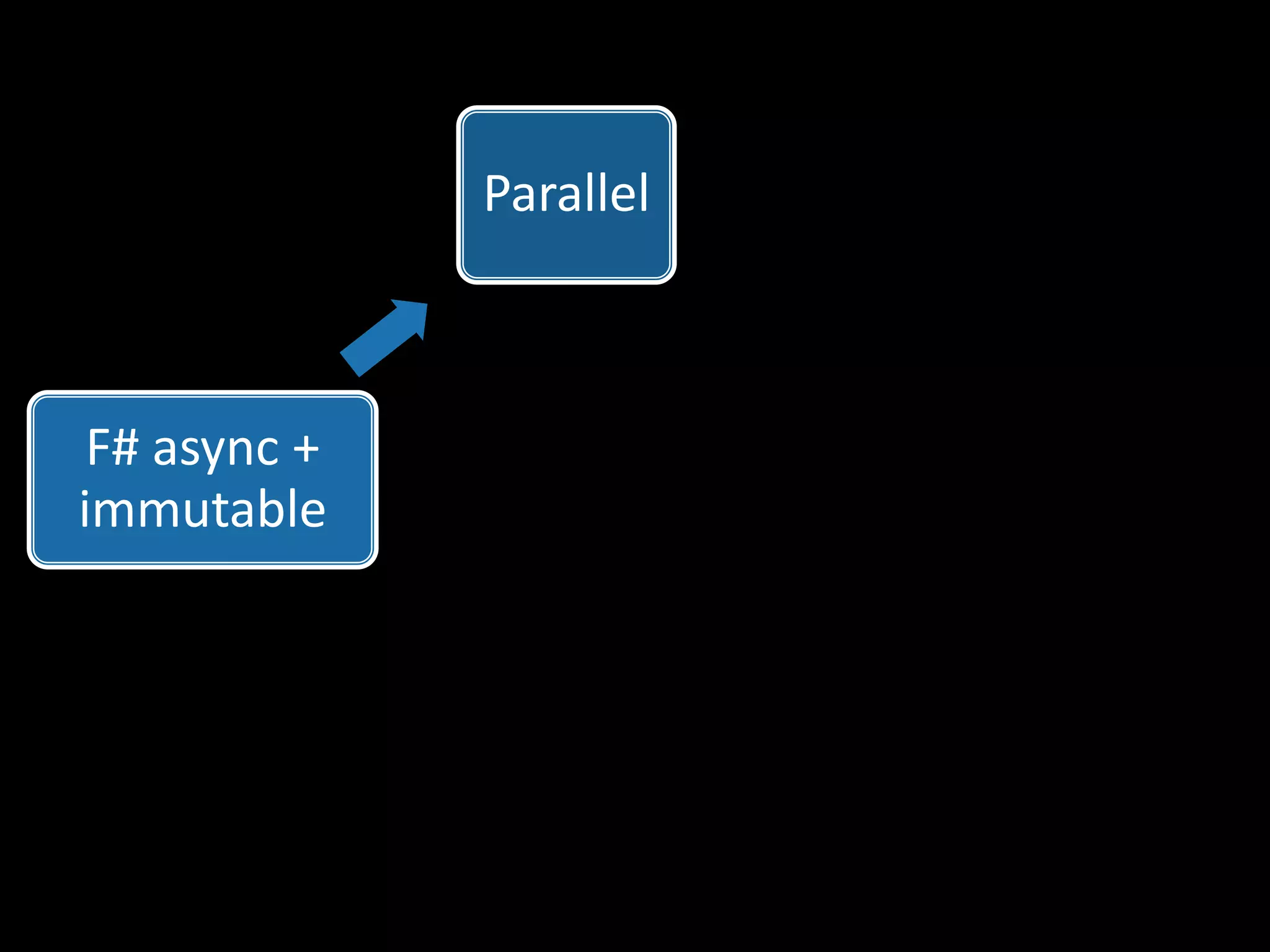
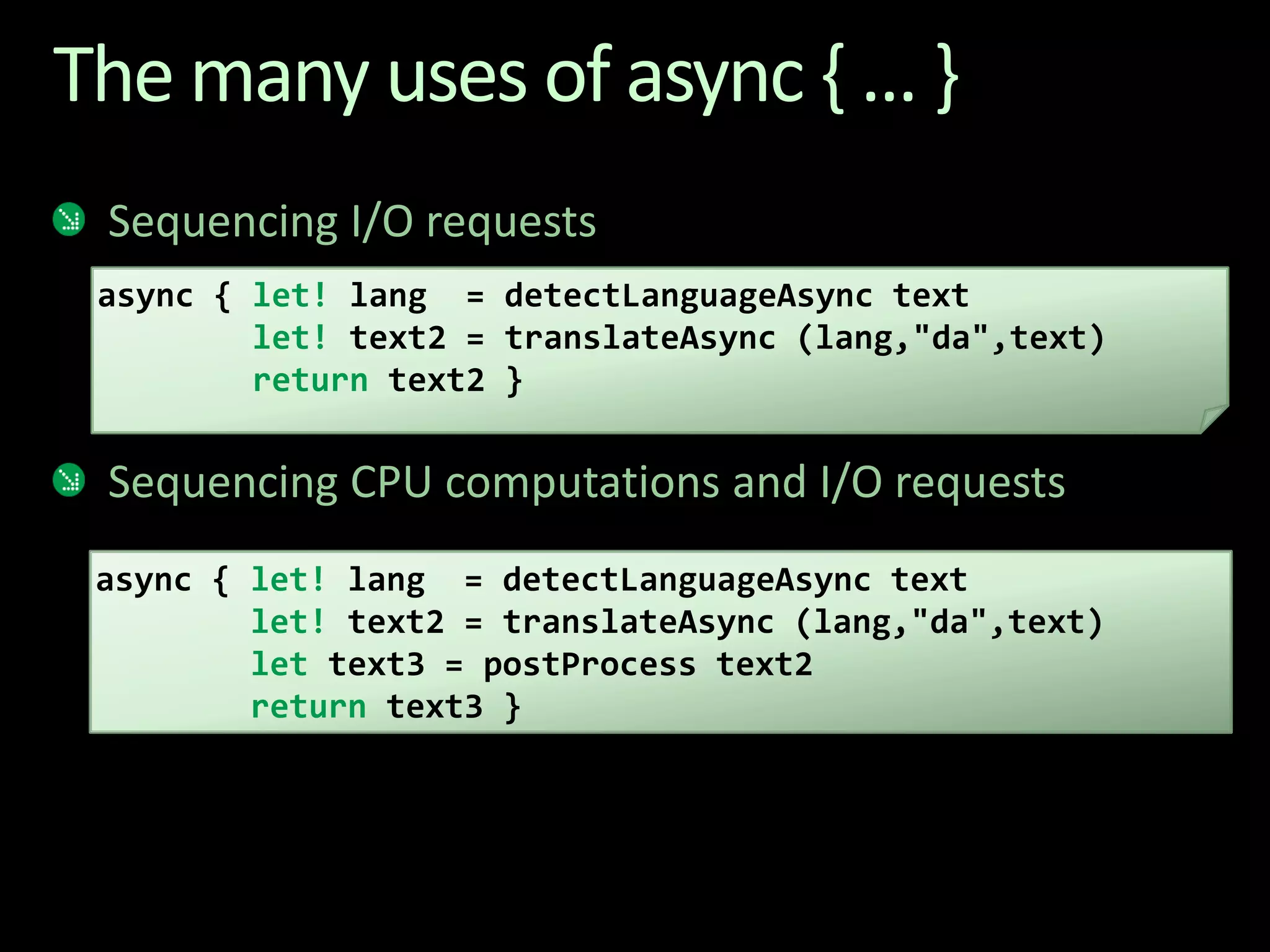
![The many uses of async { ... }Parallel CPU computationsParallel I/O requestsAsync.Parallel [ async { return (fib 39) }; async { return (fib 40) }; ]Async.Parallel [ for target in langs -> translateAsync (lang,target,text) ]](https://image.slidesharecdn.com/fsharp-meetup-2010-redist-100909174431-phpapp01/75/London-F-Sharp-User-Group-Don-Syme-on-F-09-09-2010-60-2048.jpg)
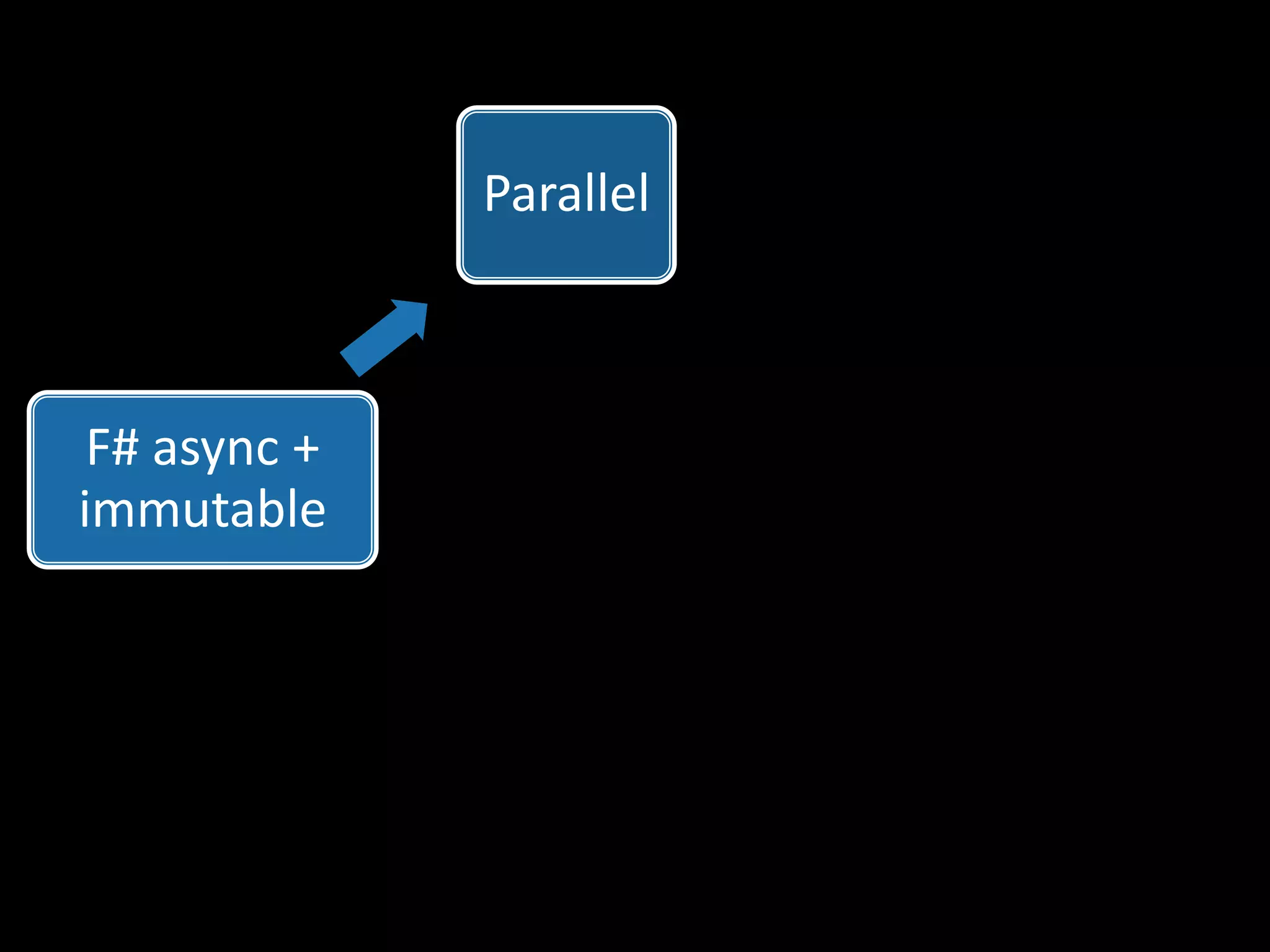
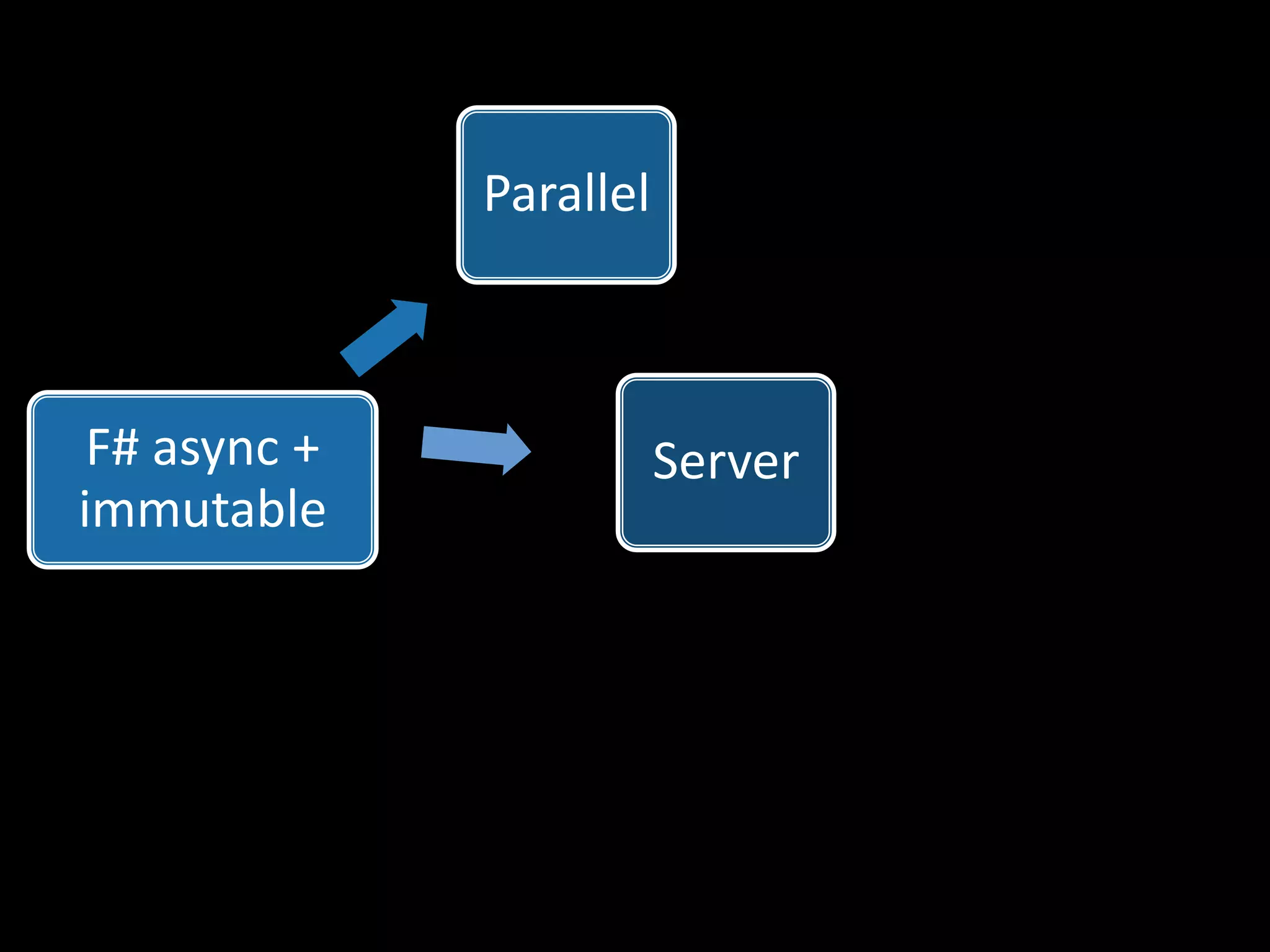
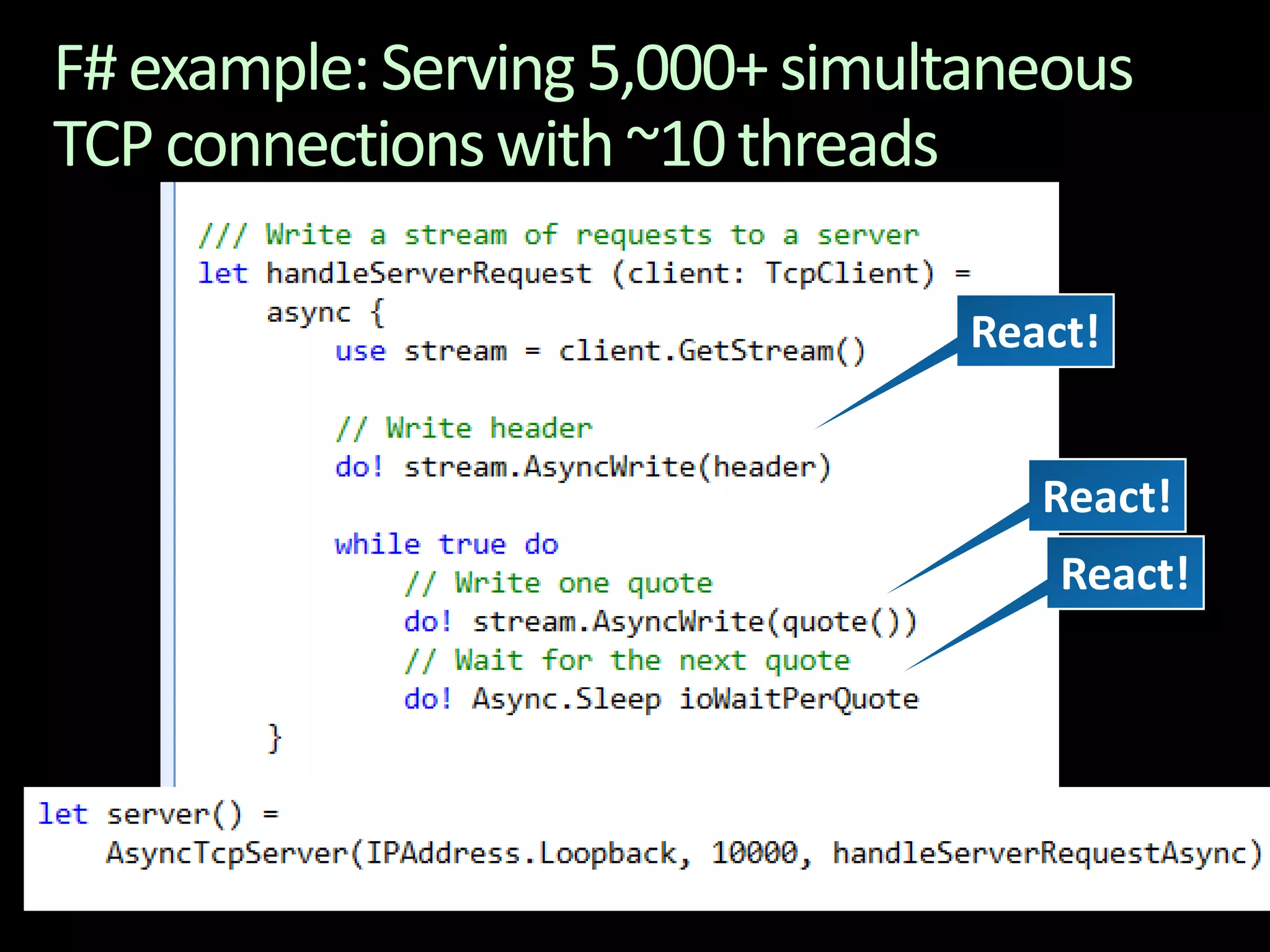
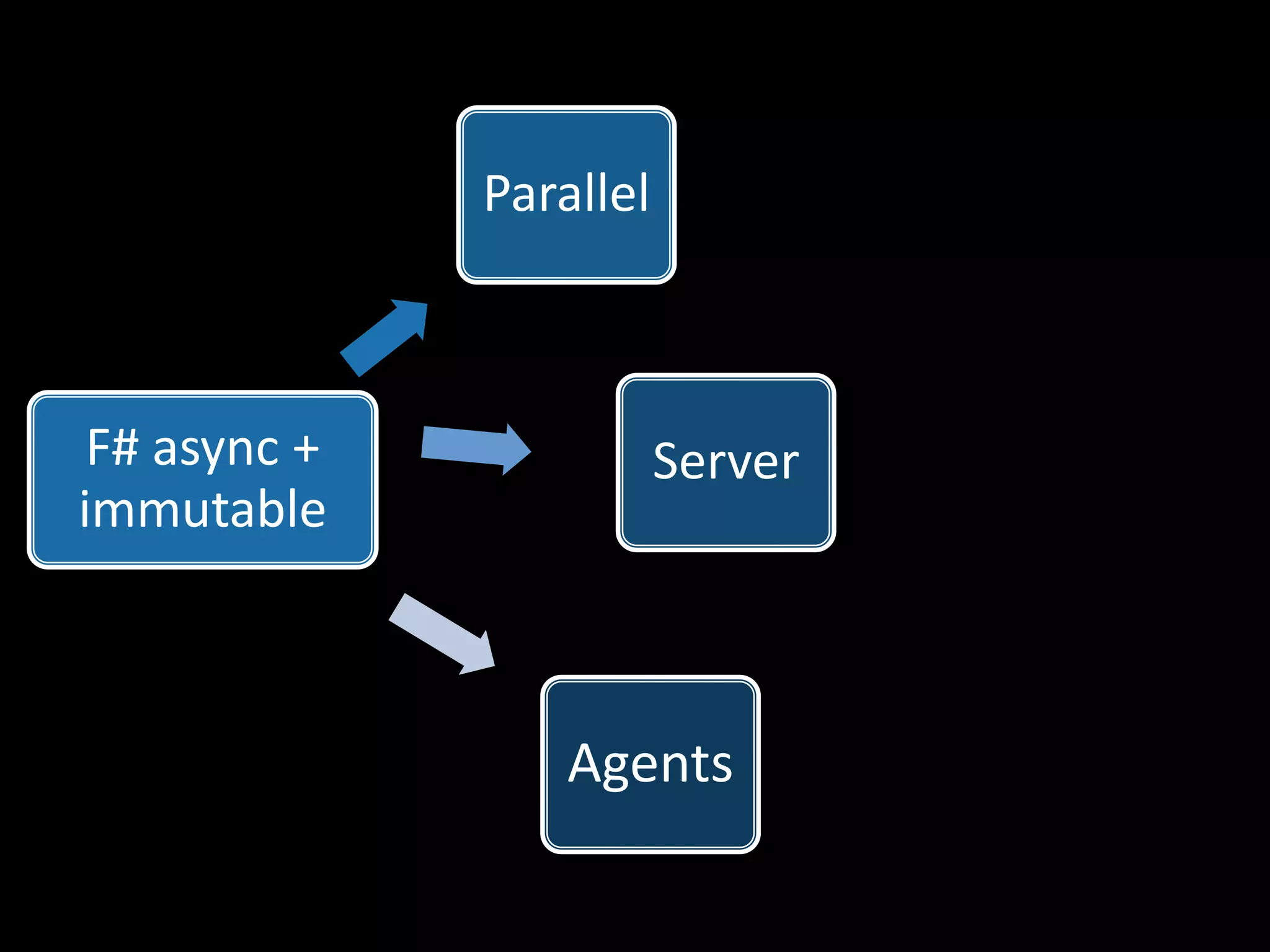

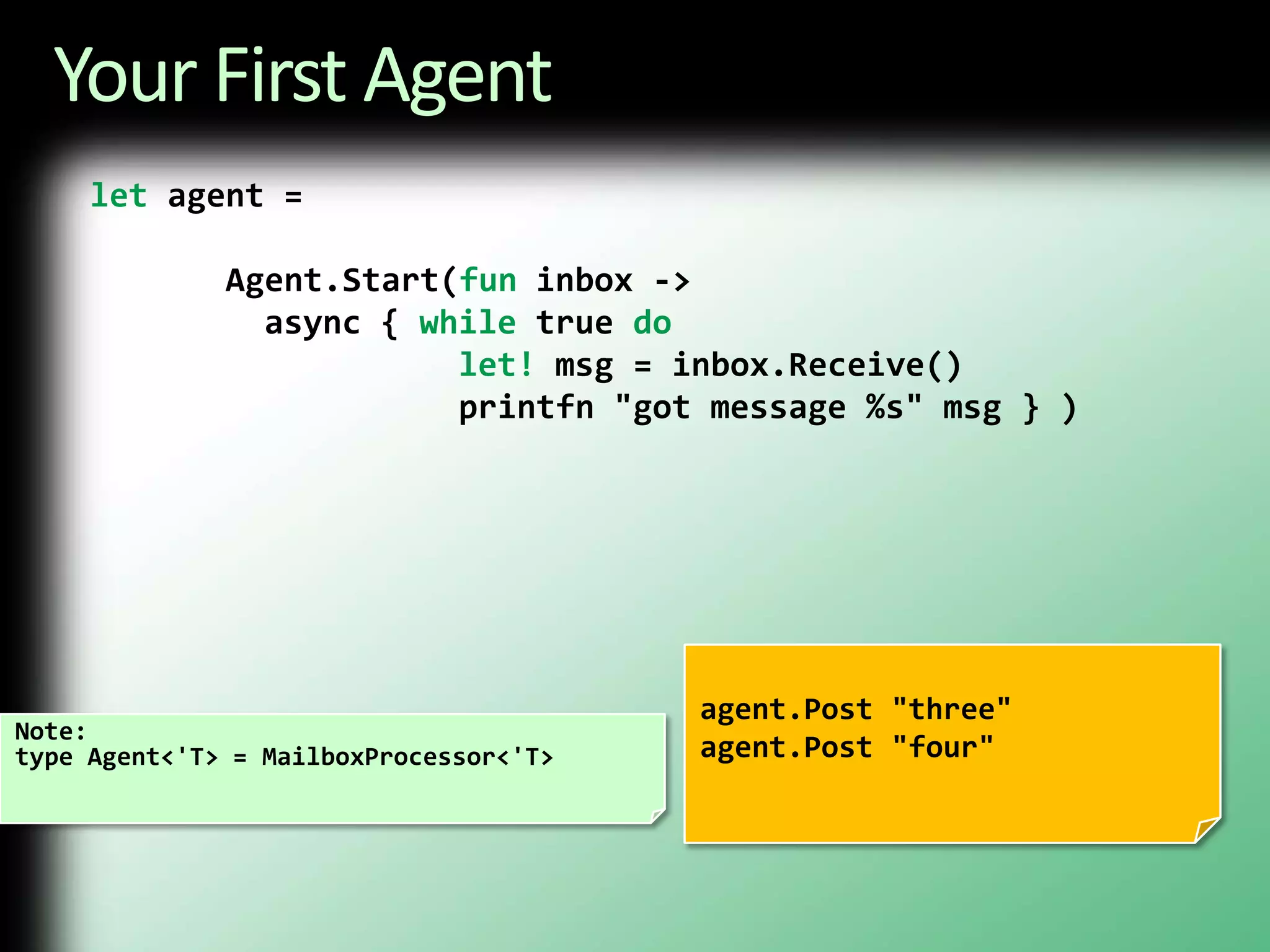
![Your First 100,000 Agentslet agents = [ for i in 0 .. 100000 ->Agent.Start(fun inbox -> async { while true dolet! msg = inbox.Receive() printfn "%d got message %s" i msg })]for agent in agents do agent.Post "hello"Note:type Agent<'T> = MailboxProcessor<'T>](https://image.slidesharecdn.com/fsharp-meetup-2010-redist-100909174431-phpapp01/75/London-F-Sharp-User-Group-Don-Syme-on-F-09-09-2010-67-2048.jpg)

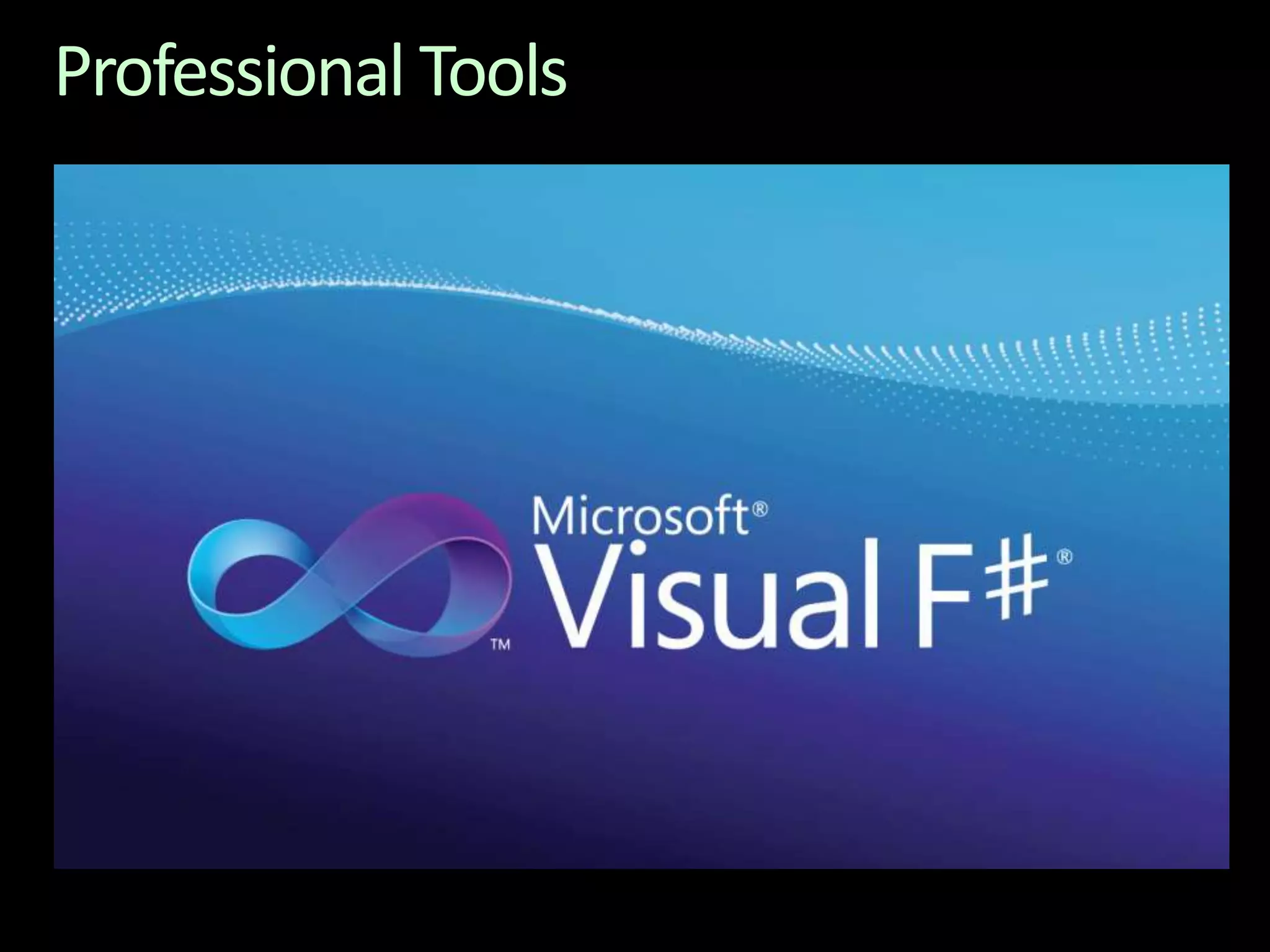
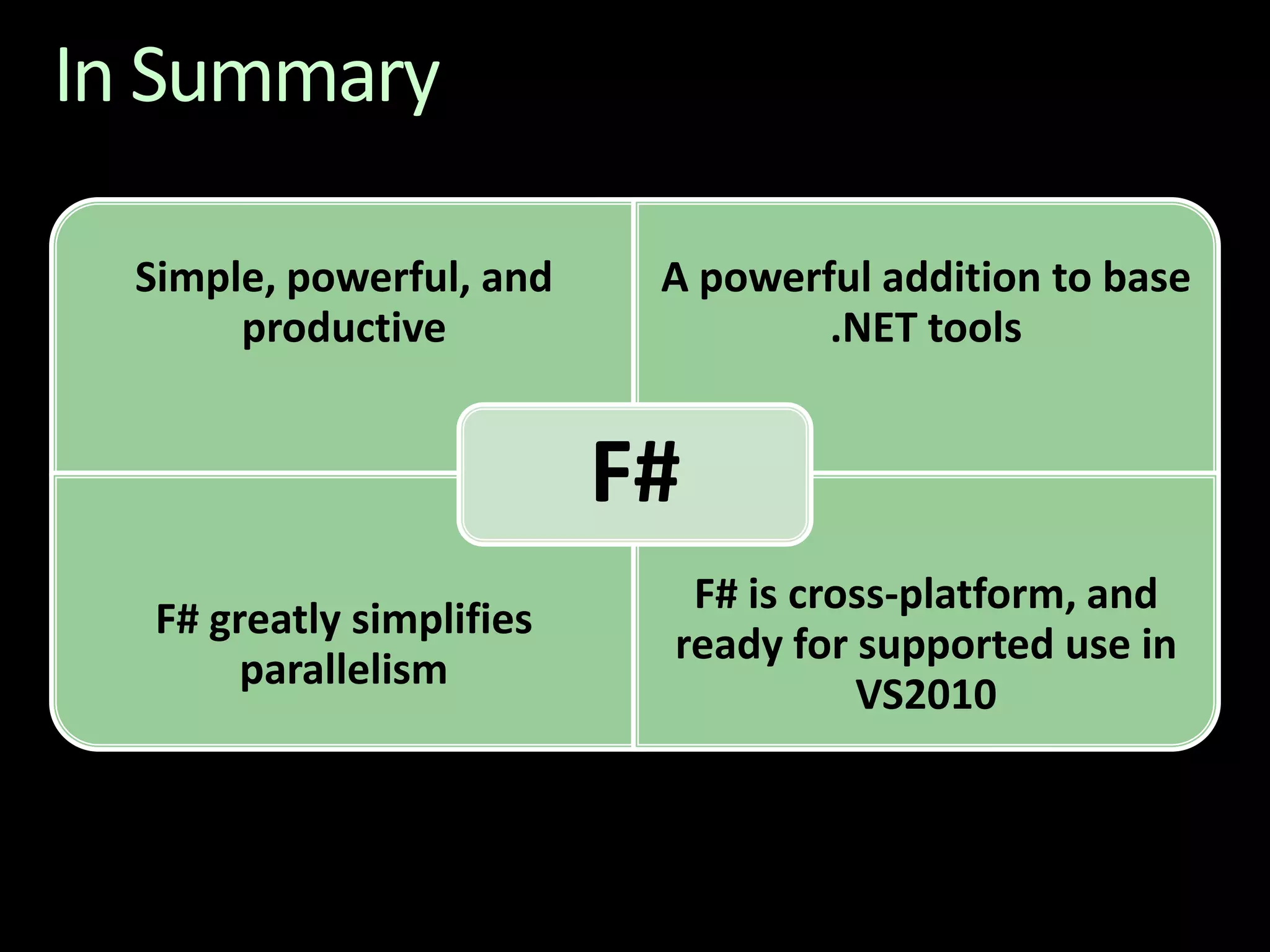
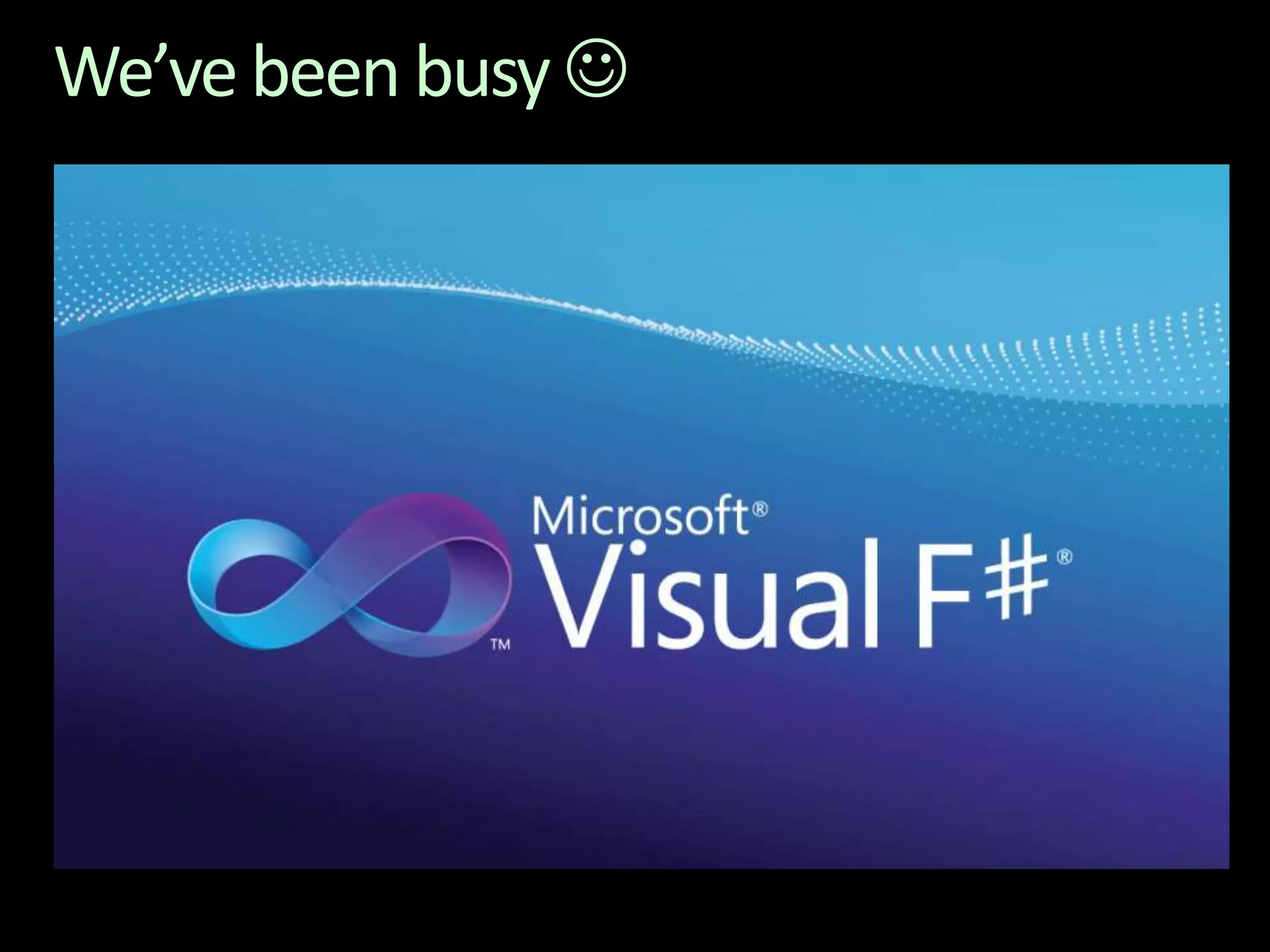
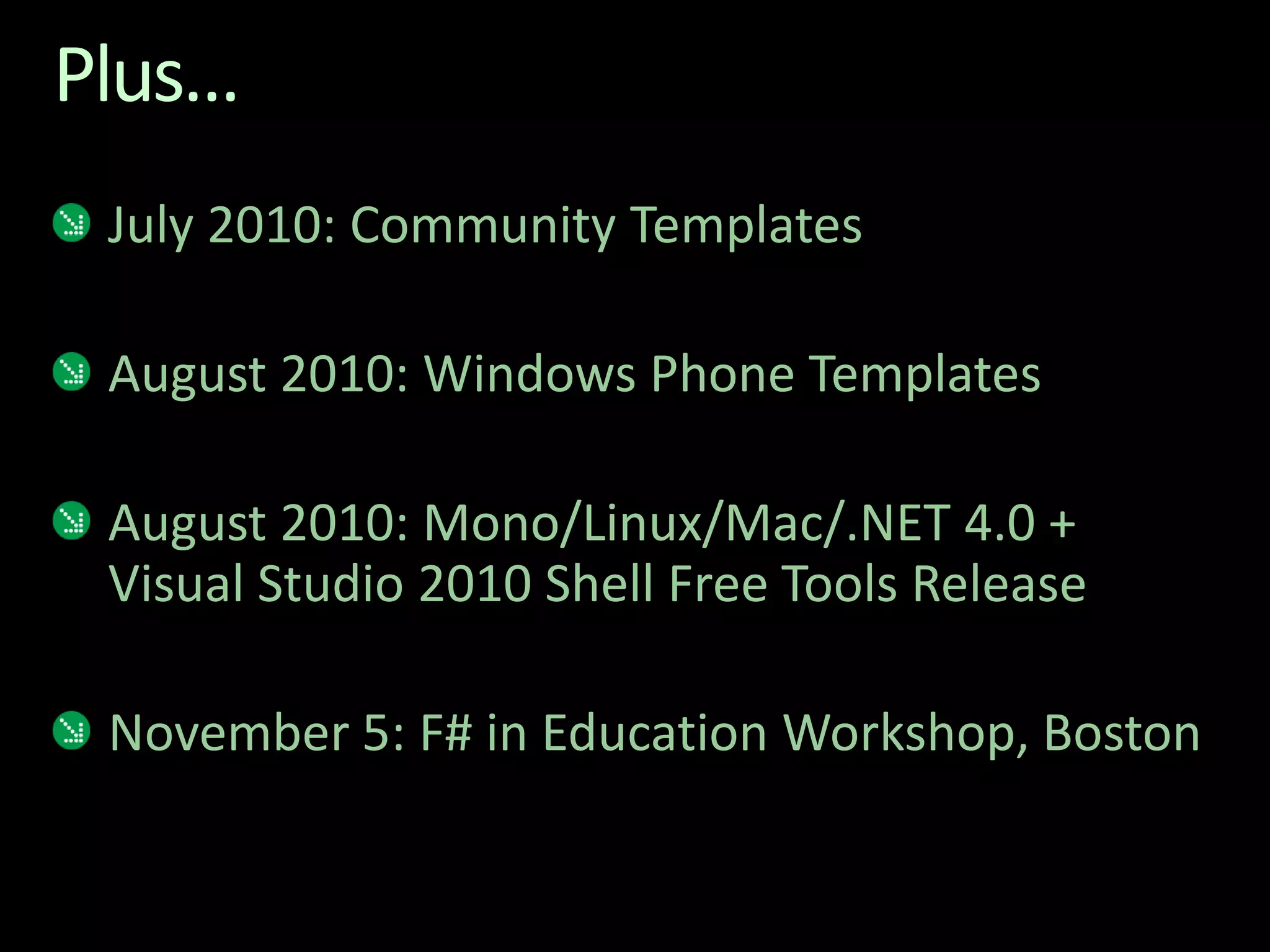
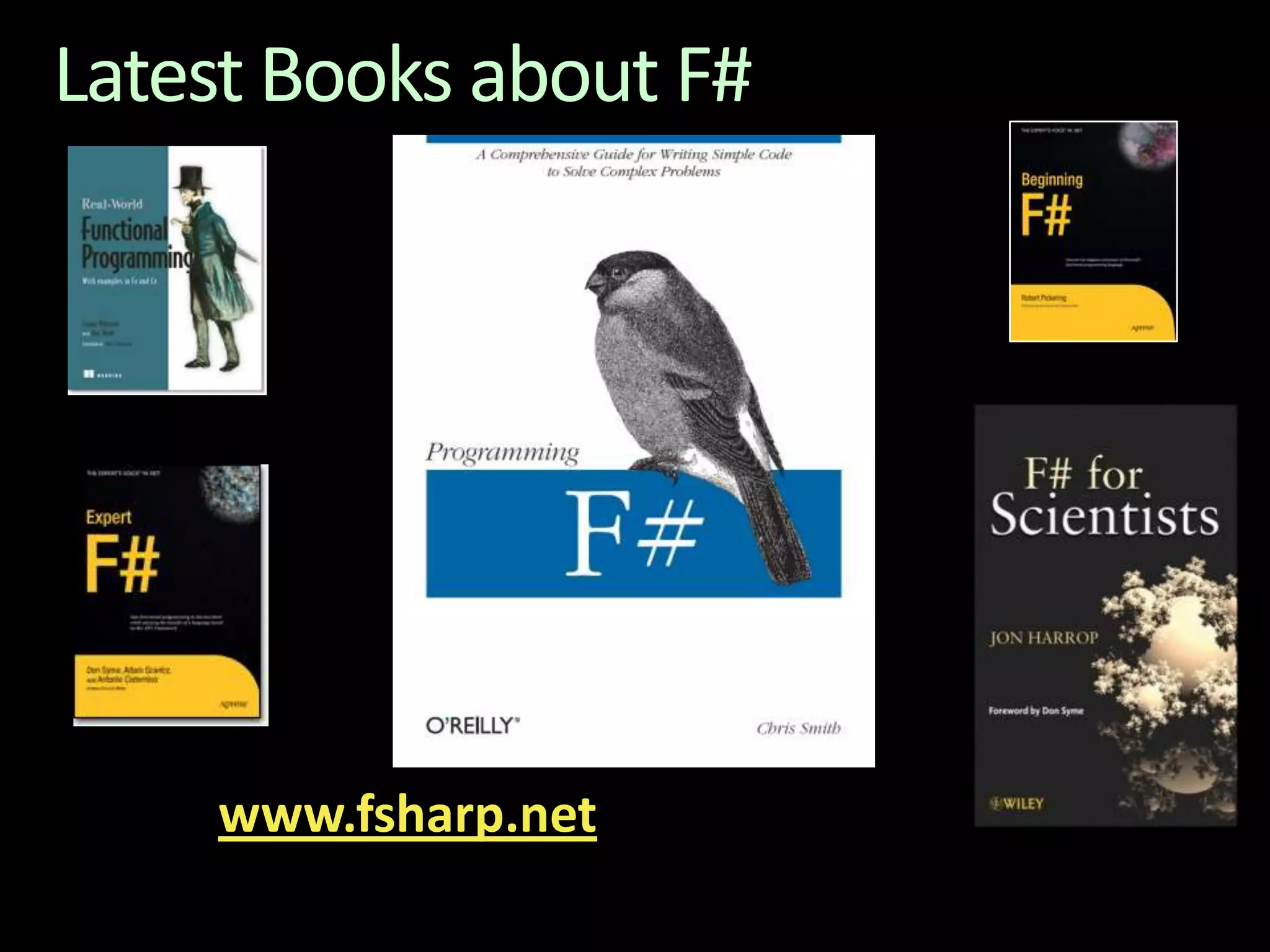
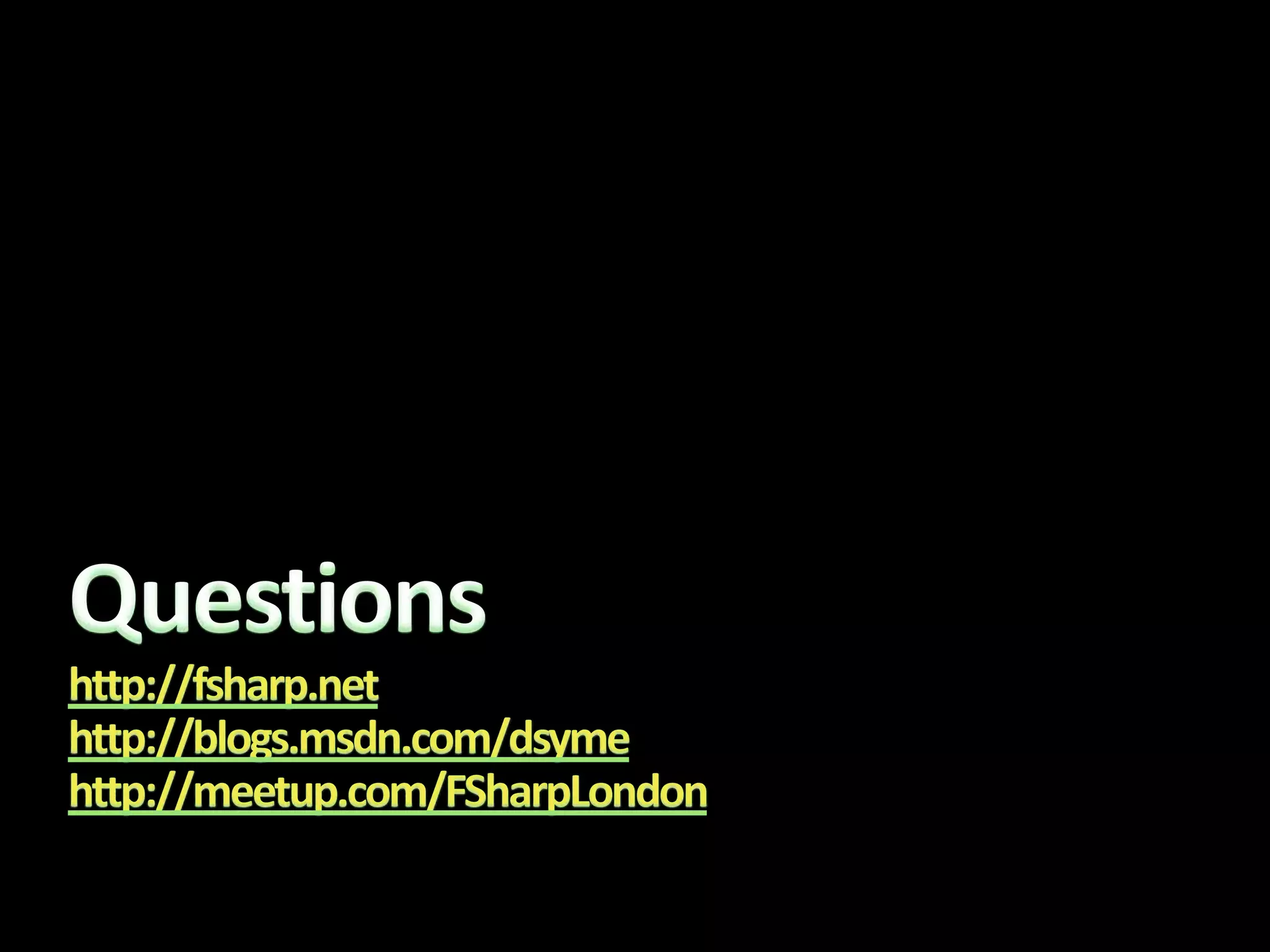

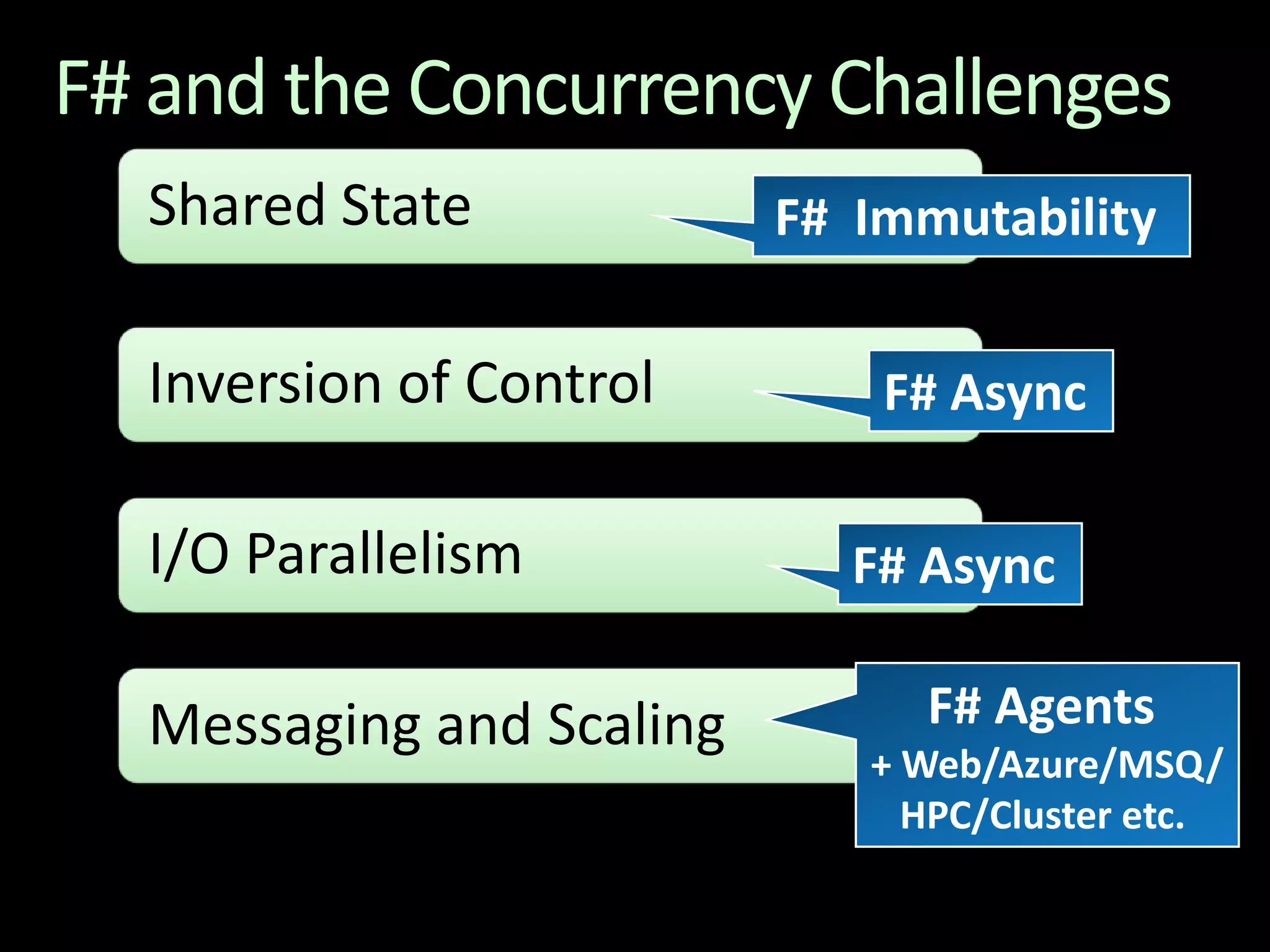
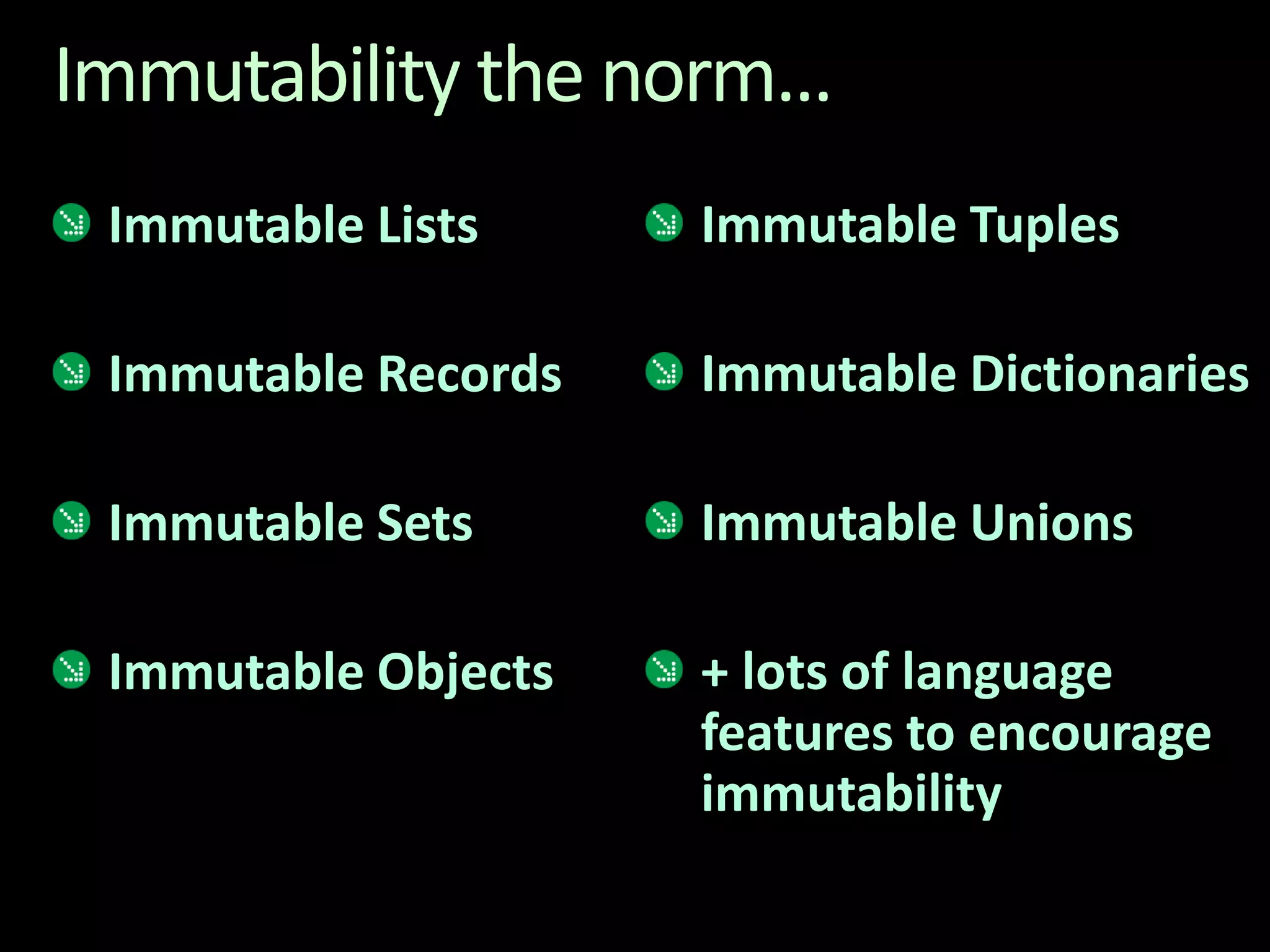
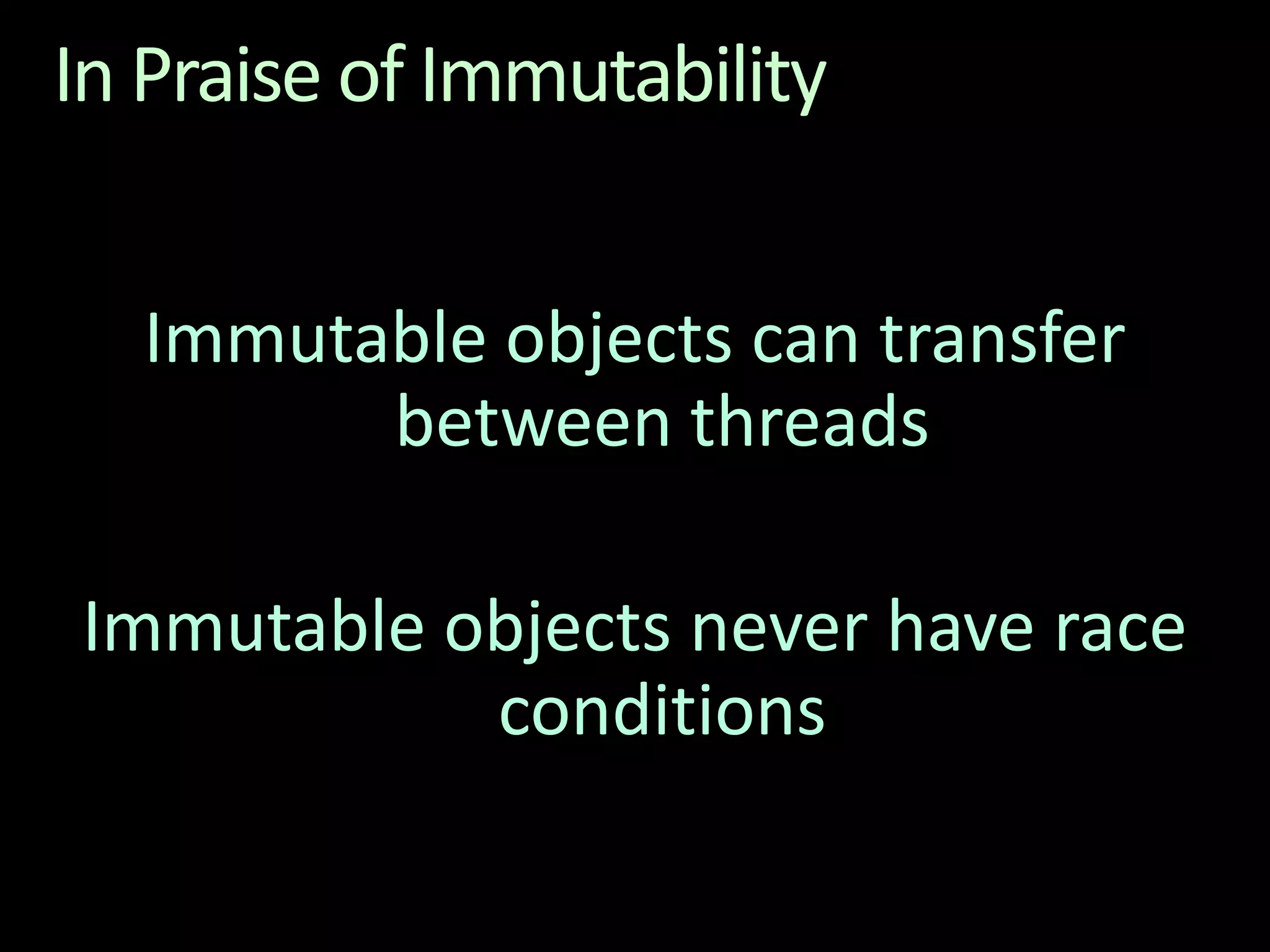
![Parallel Async Stock TickersletloadTickerAsync ticker span = async { let prices = loadPricesAsync ticker spanletdivs = loadDivsAsync ticker spanlet splits = loadSplitsAsync ticker spanlet! (prices, divs, splits) = Async.Parallel3 (prices, divs, splits)return prices @ divs @ splits }letloadTickersAsynctickerSpanTuples = Async.Parallel [ for (ticker, span) intickerSpanTuples -> async { let!obs = loadTickerAsync ticker spanreturn (ticker, span, obs) } ]](https://image.slidesharecdn.com/fsharp-meetup-2010-redist-100909174431-phpapp01/75/London-F-Sharp-User-Group-Don-Syme-on-F-09-09-2010-79-2048.jpg)
